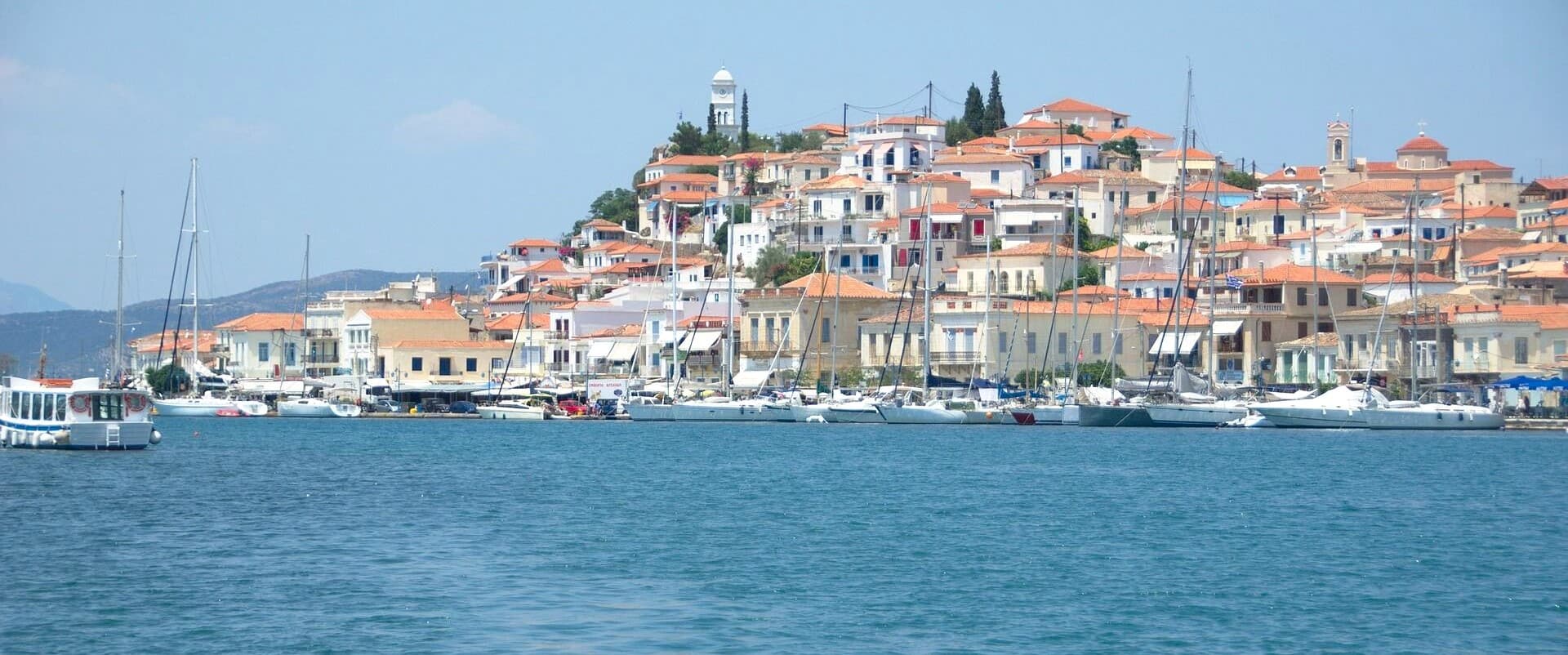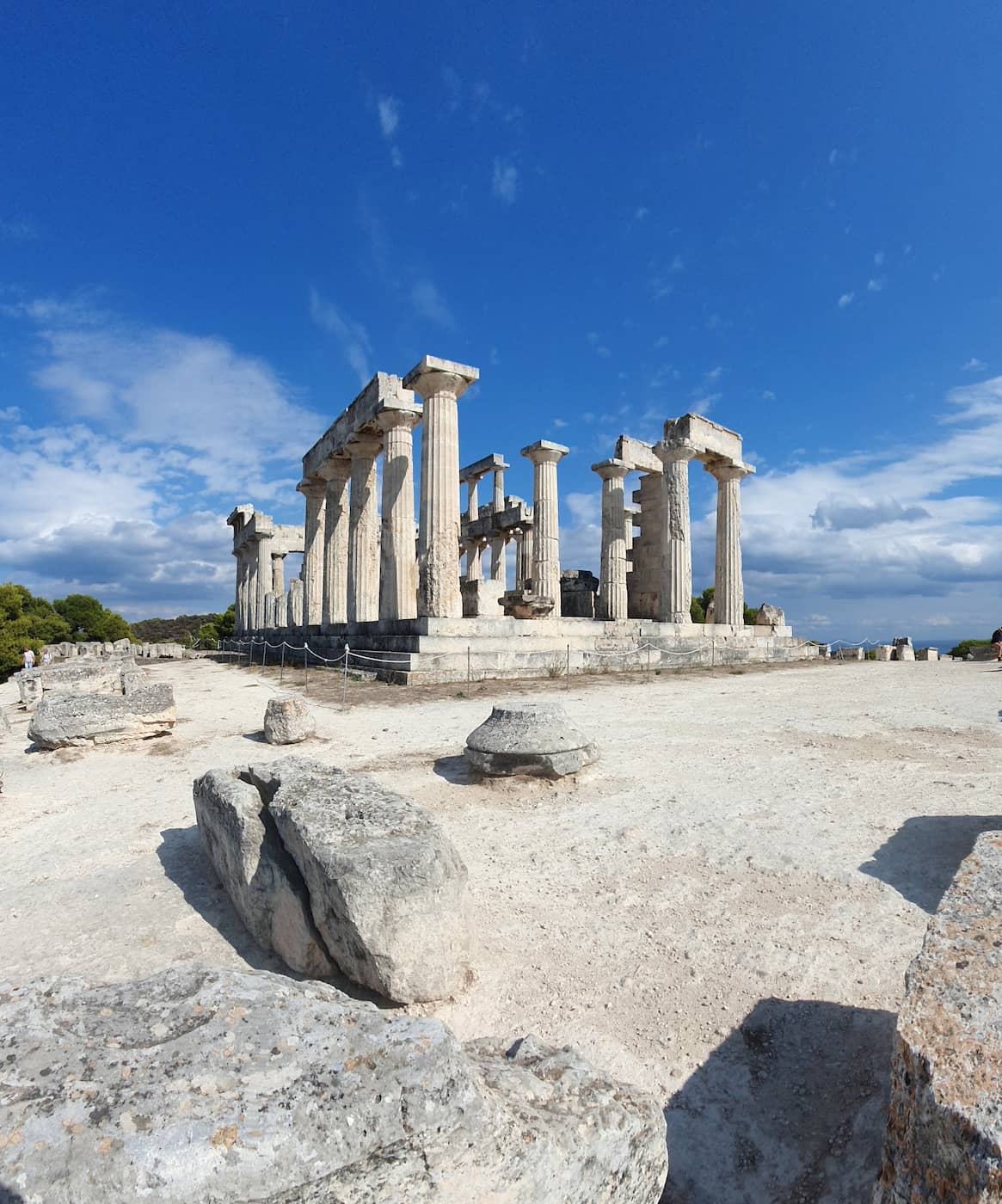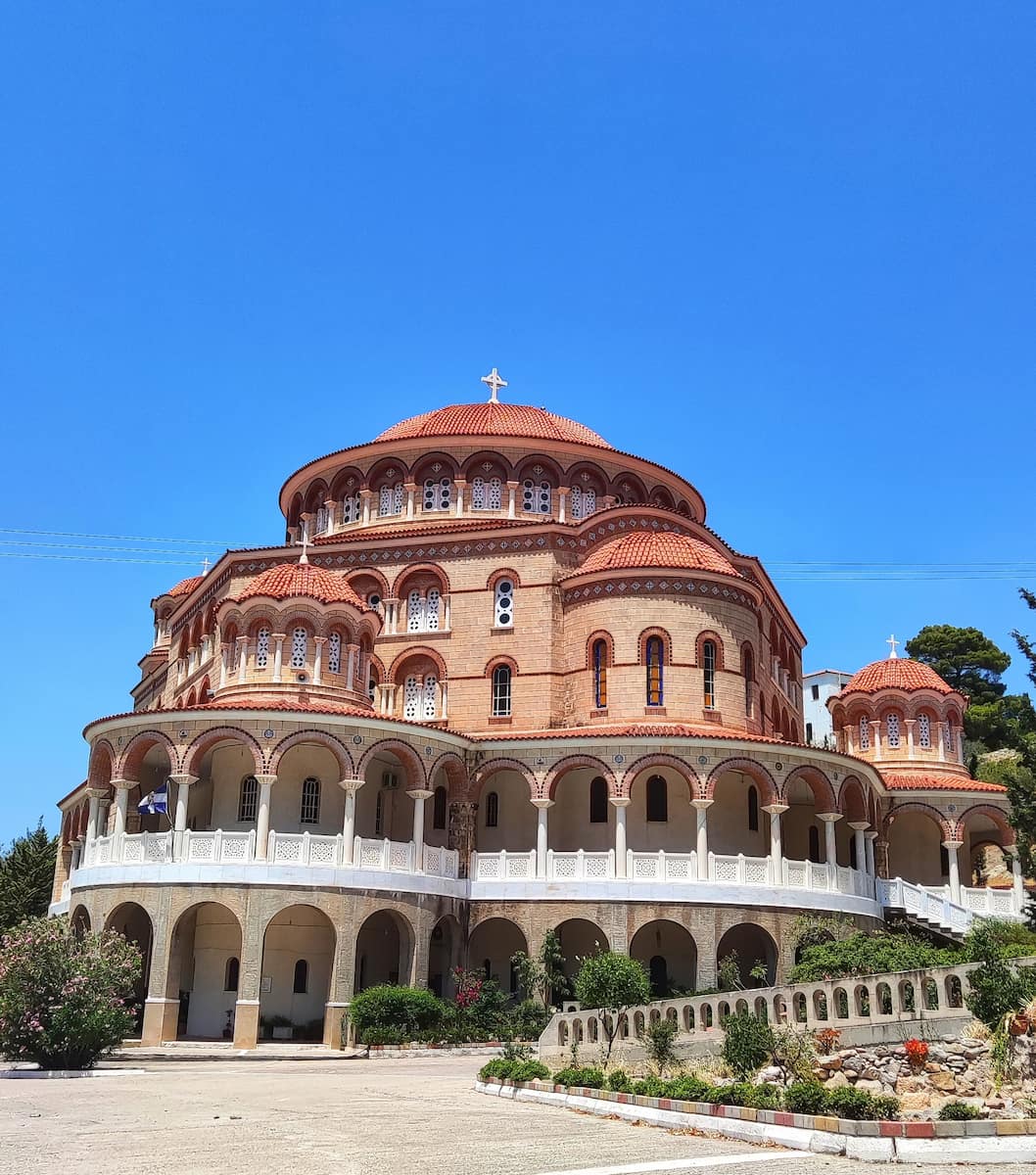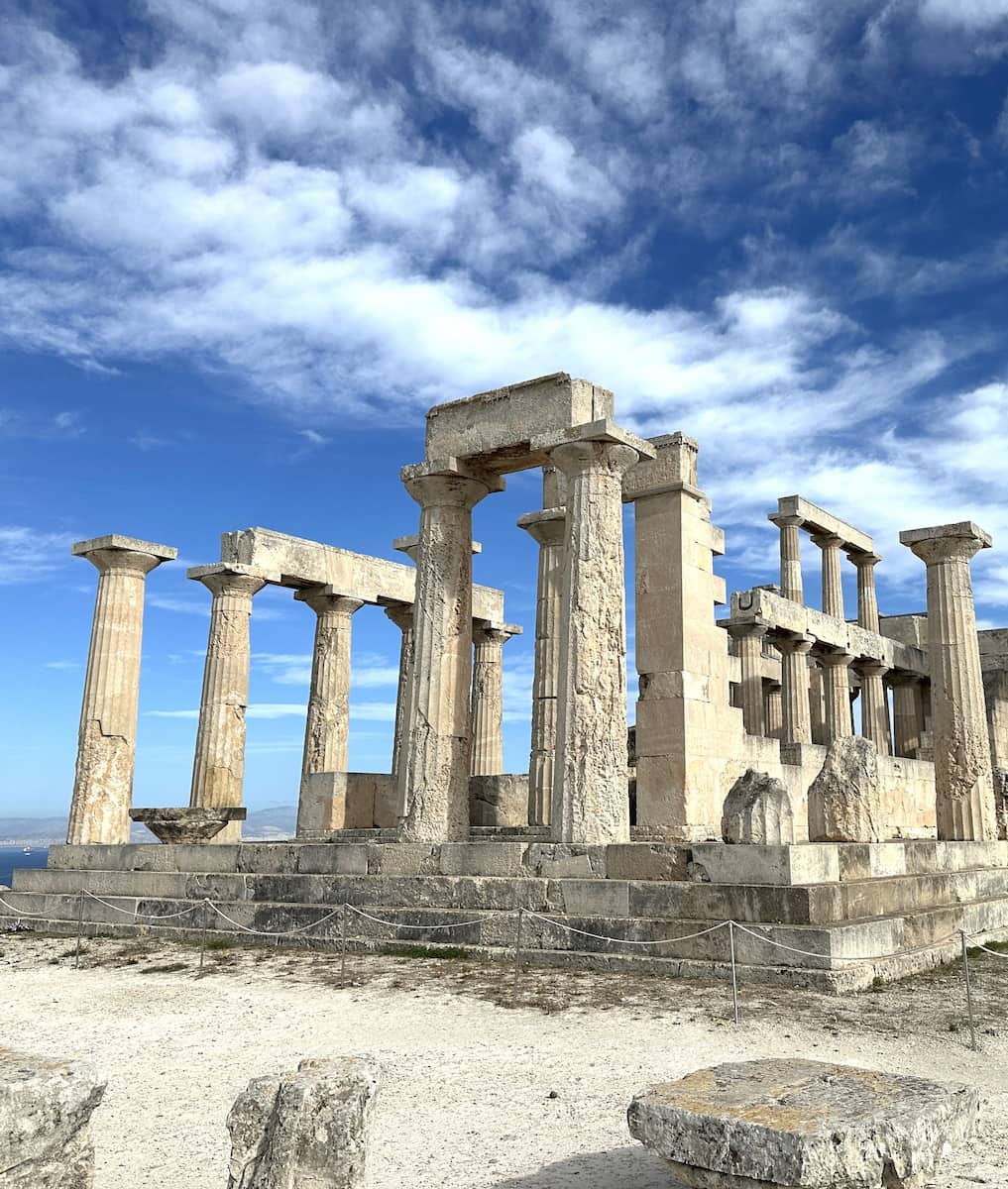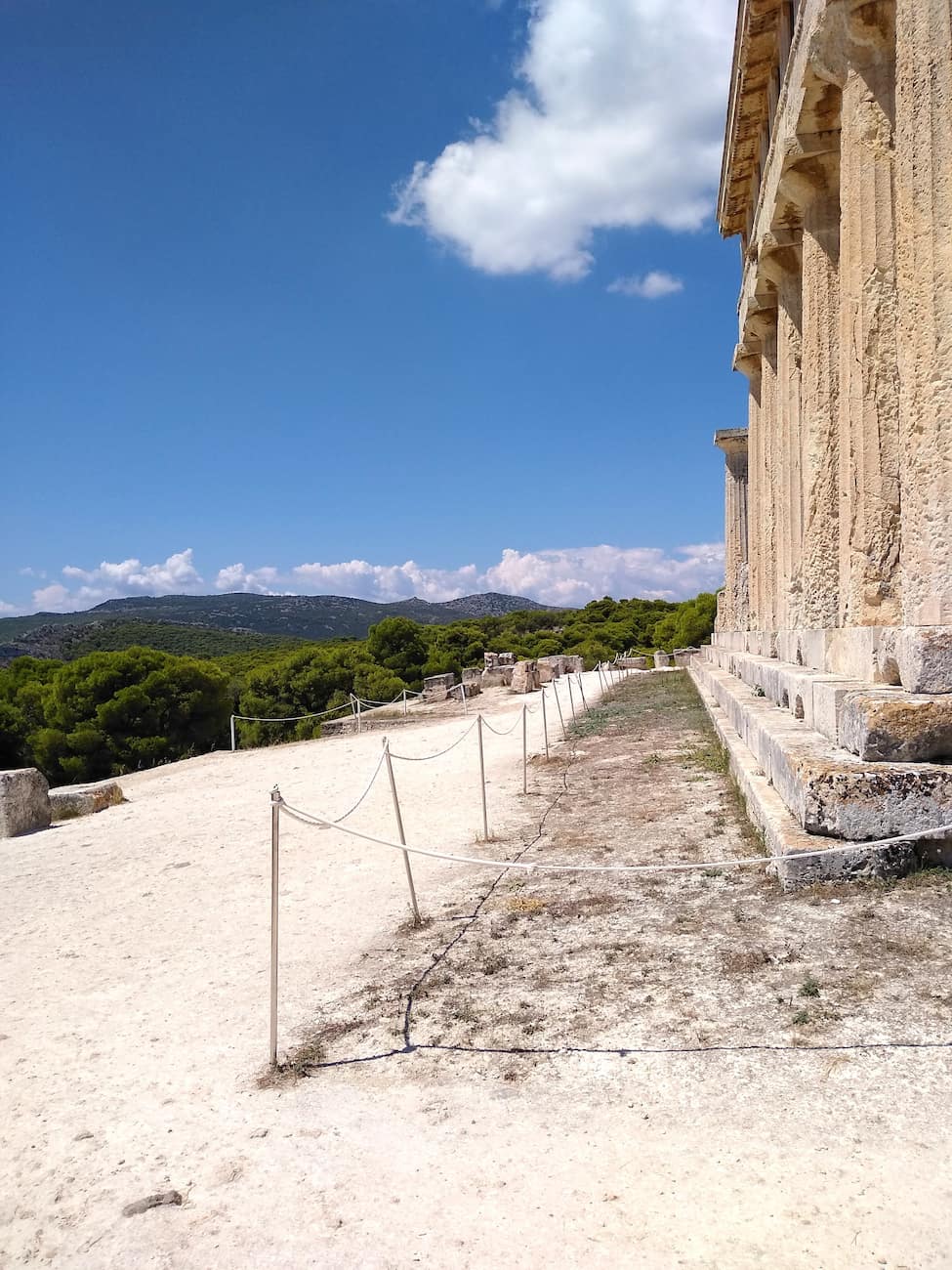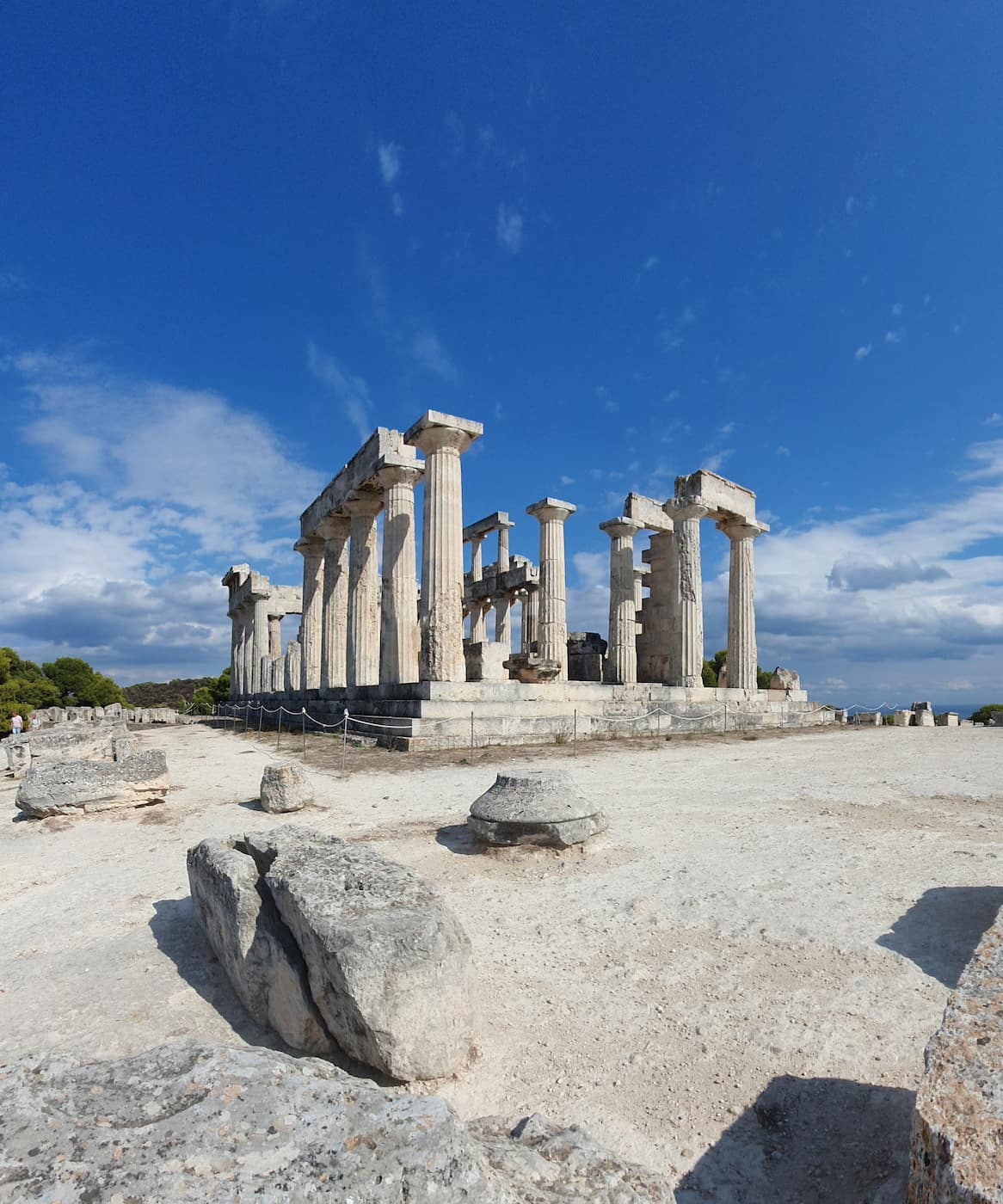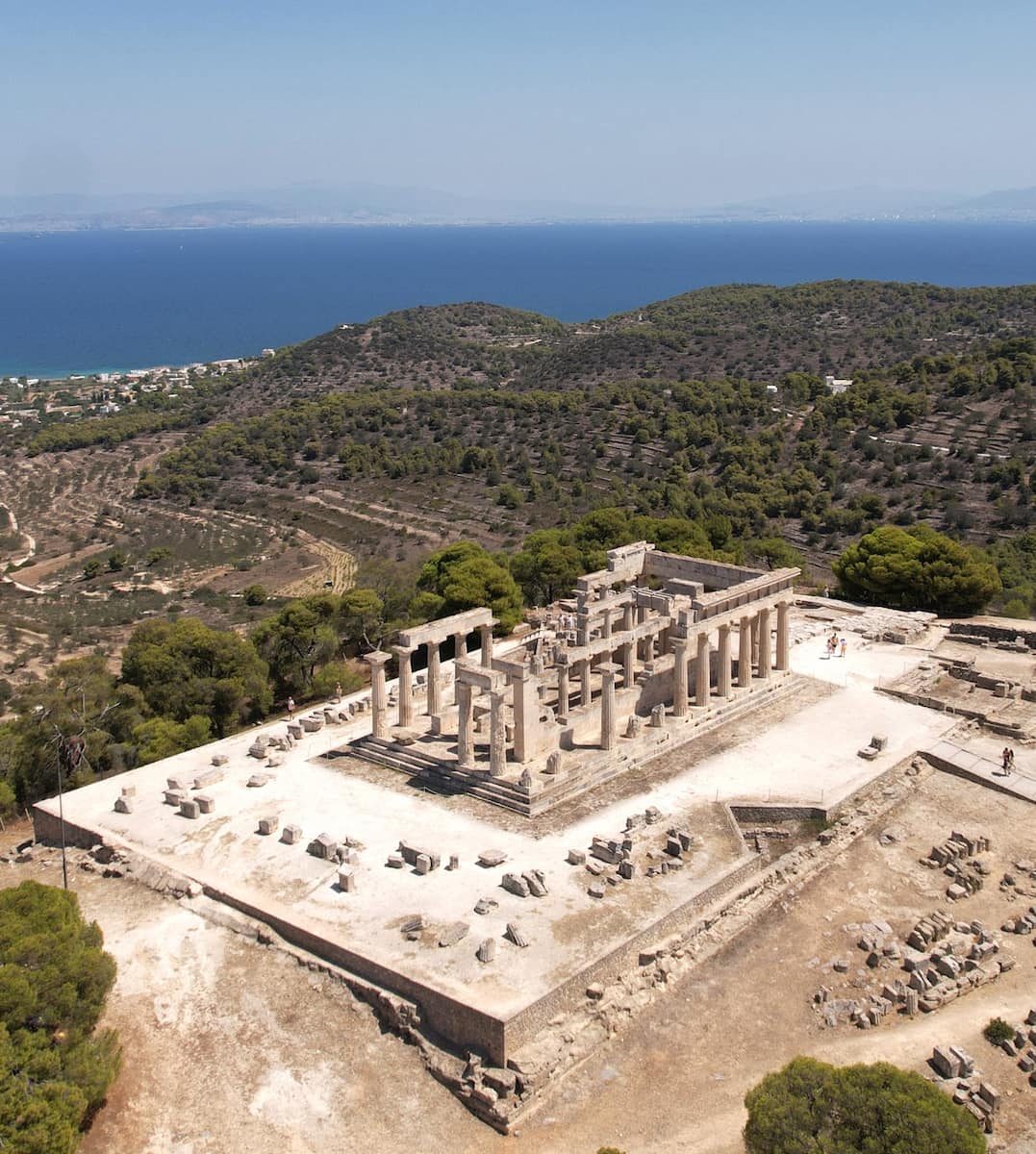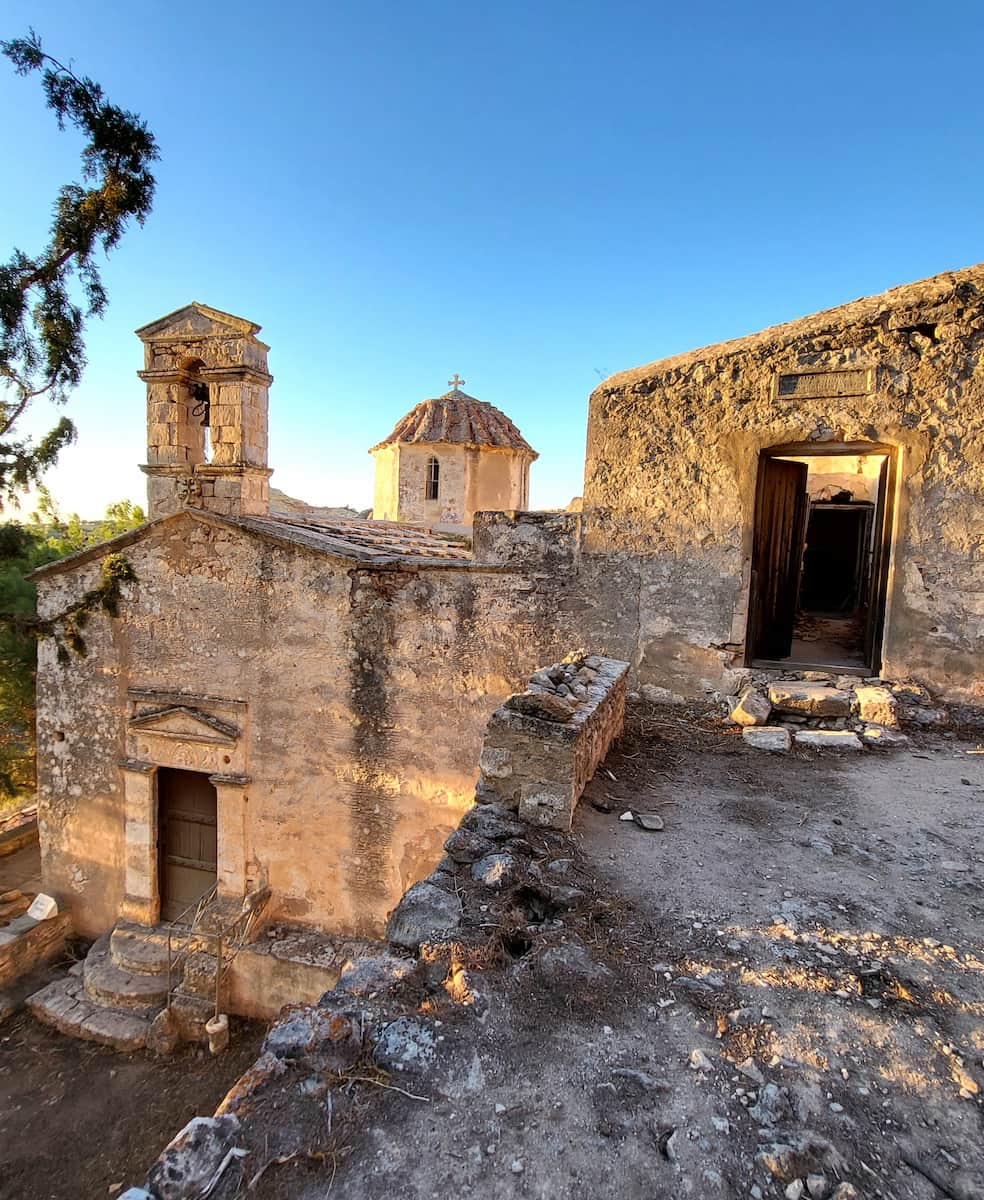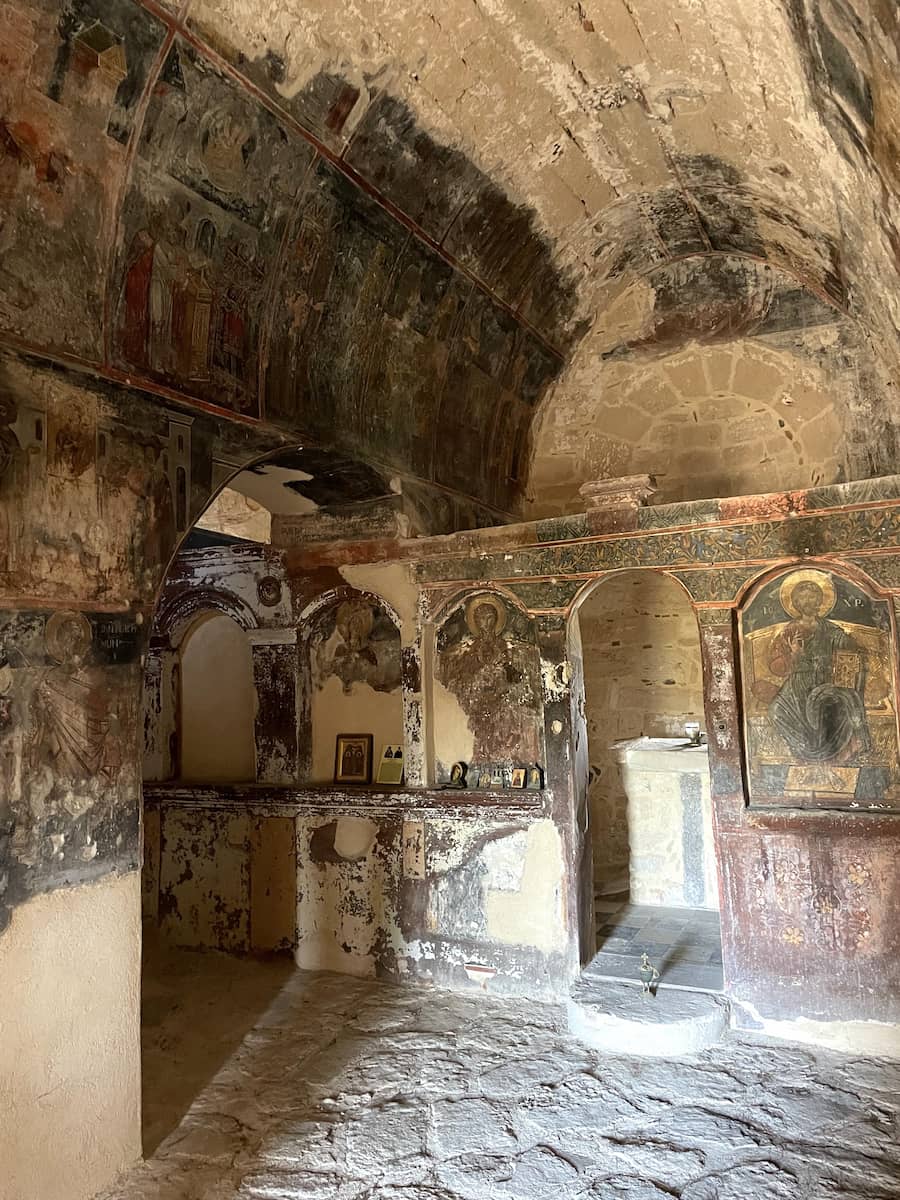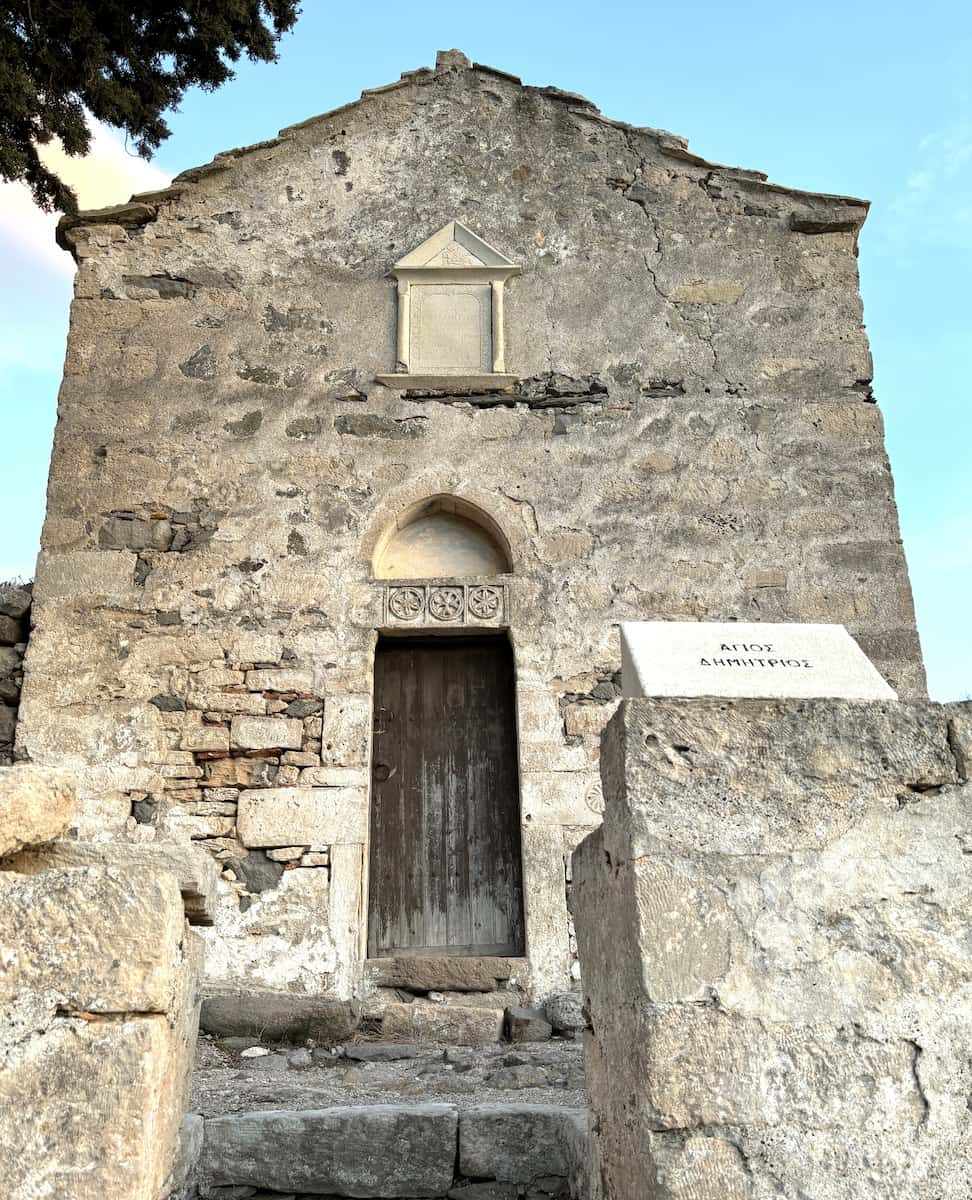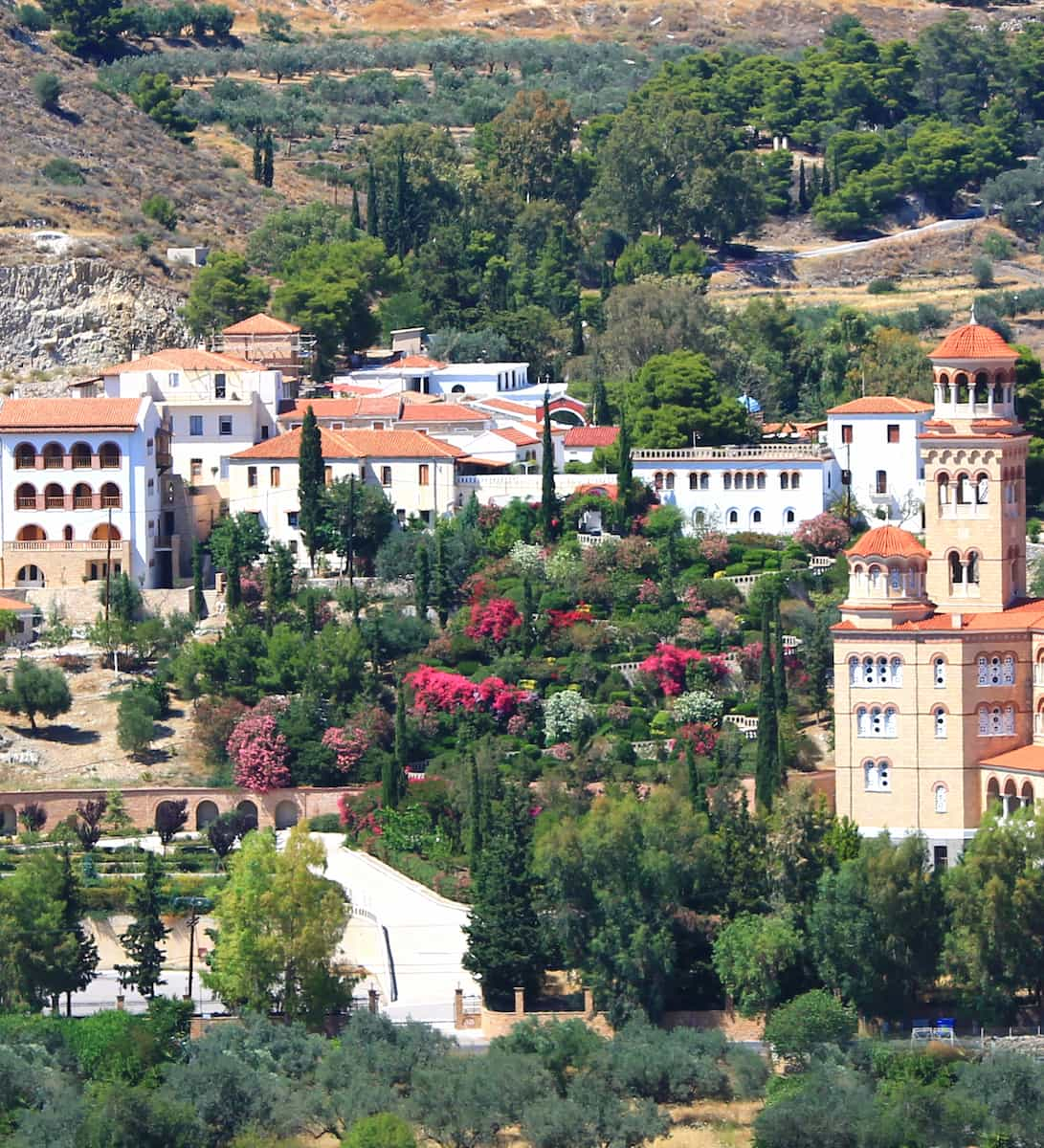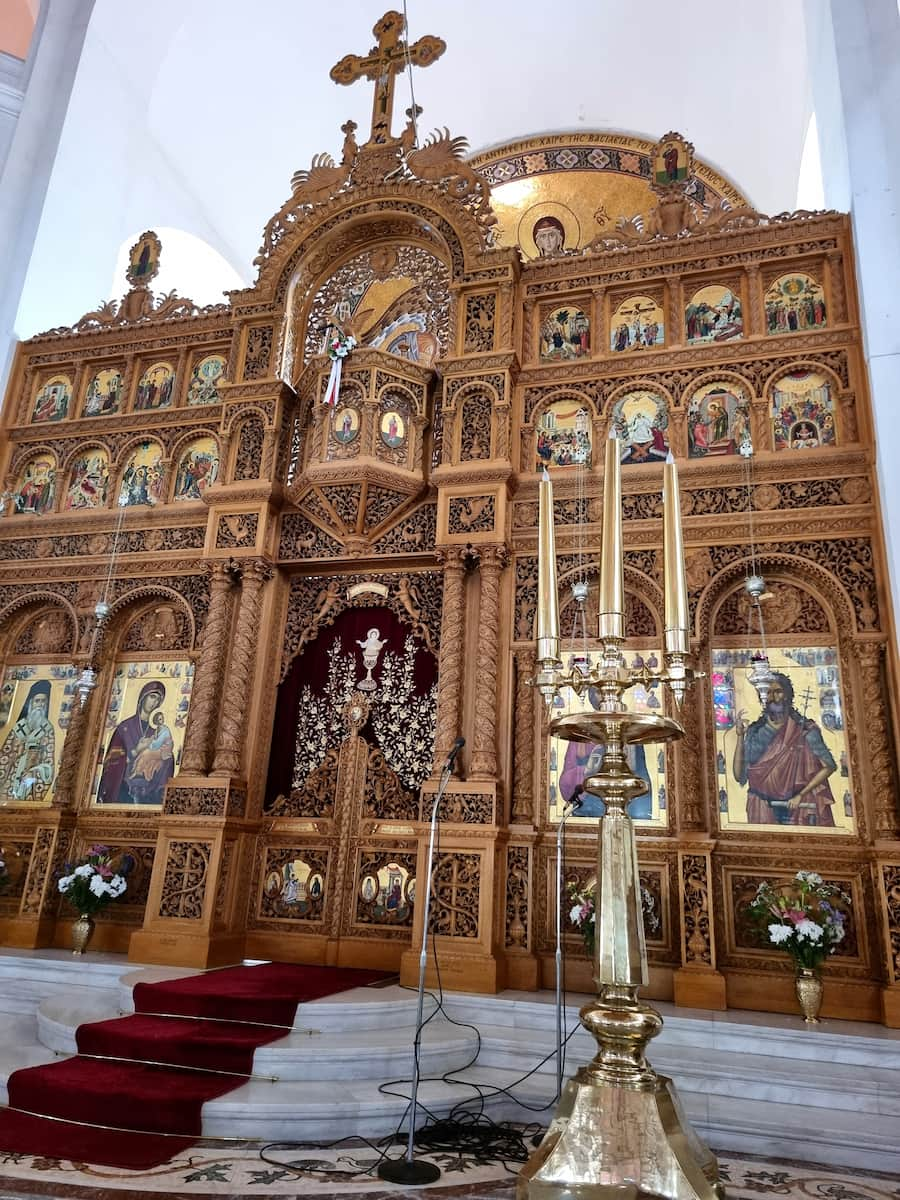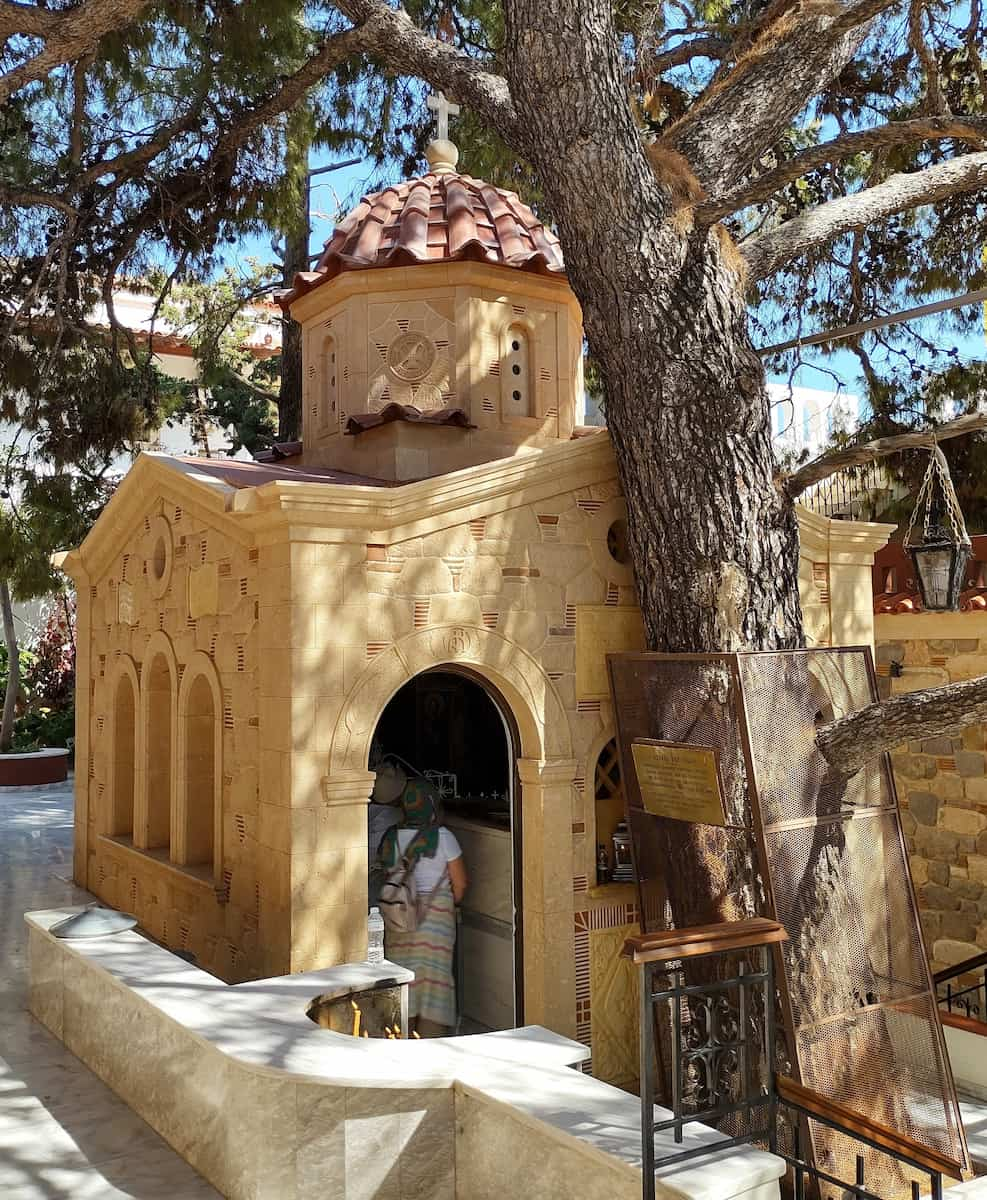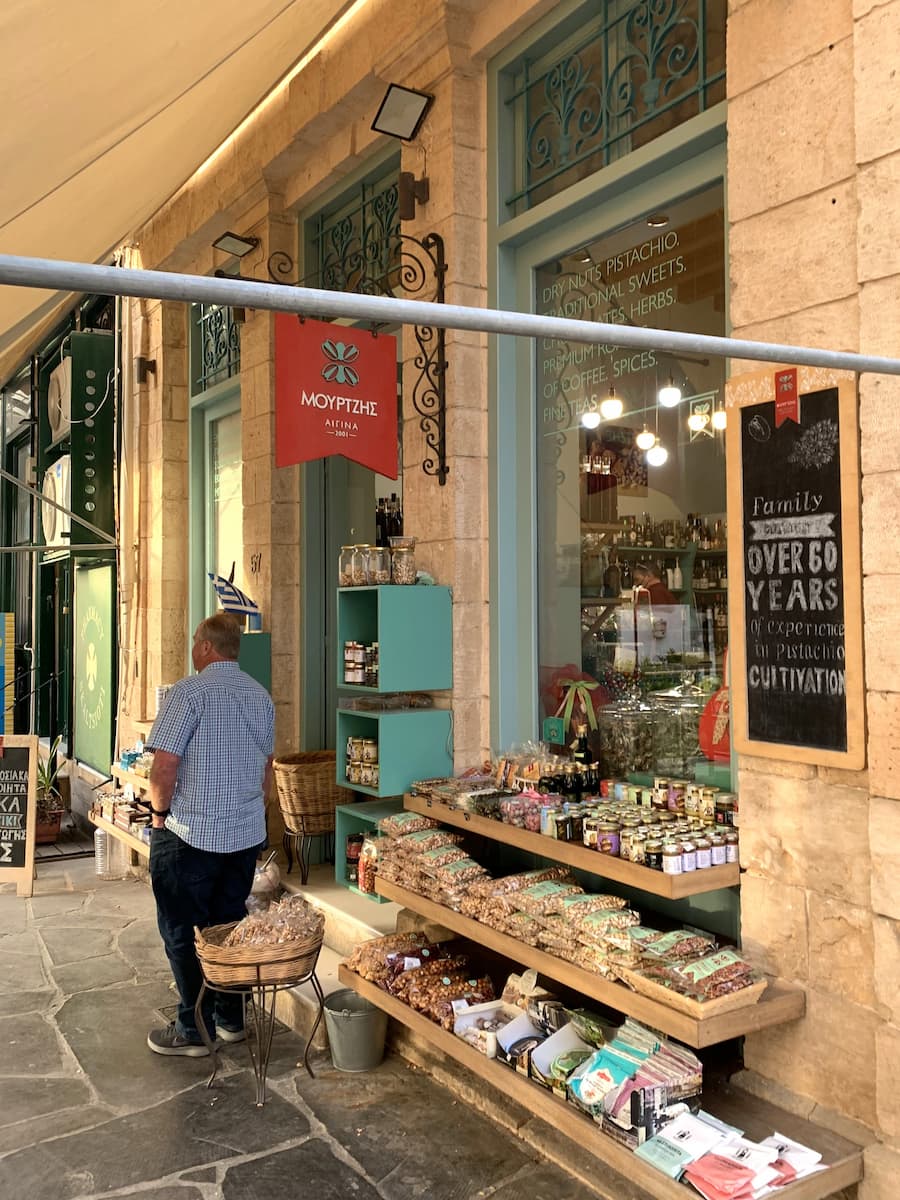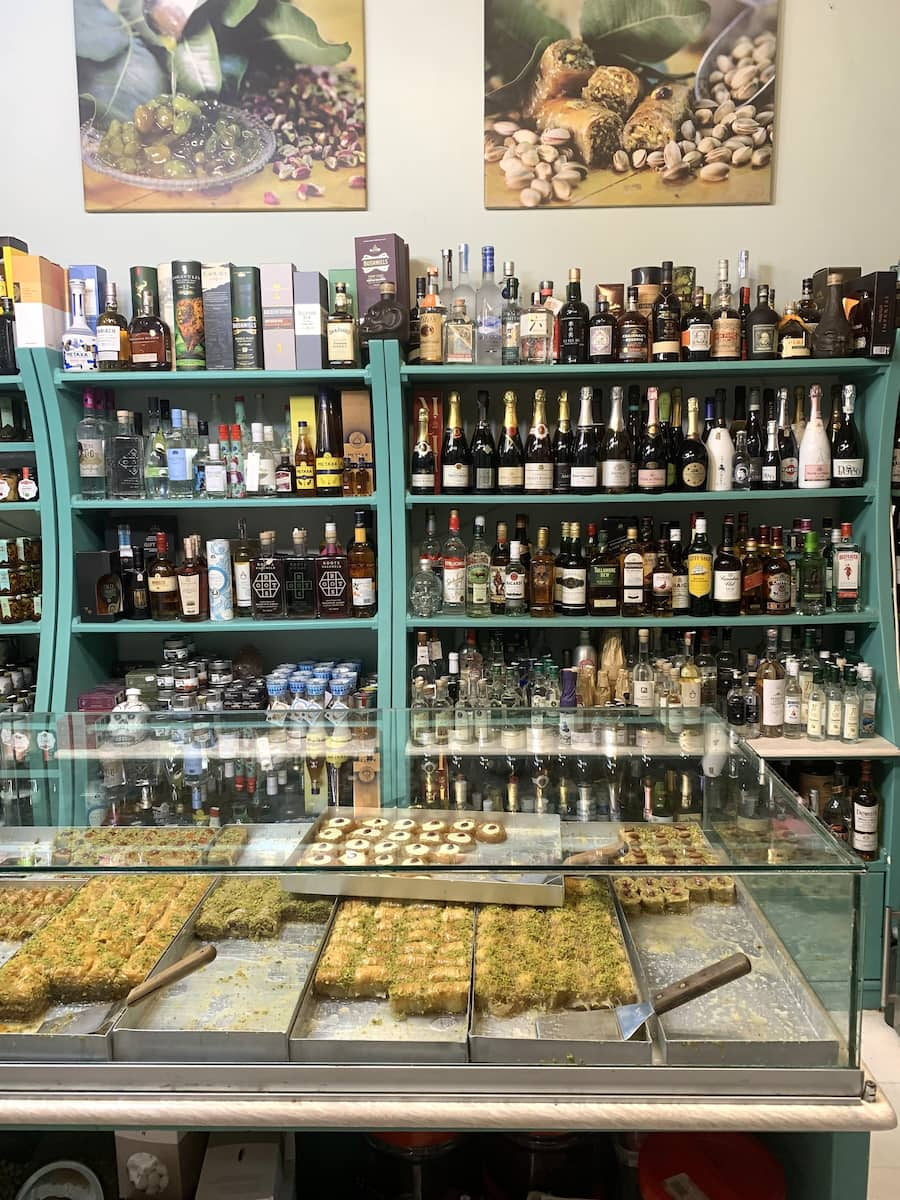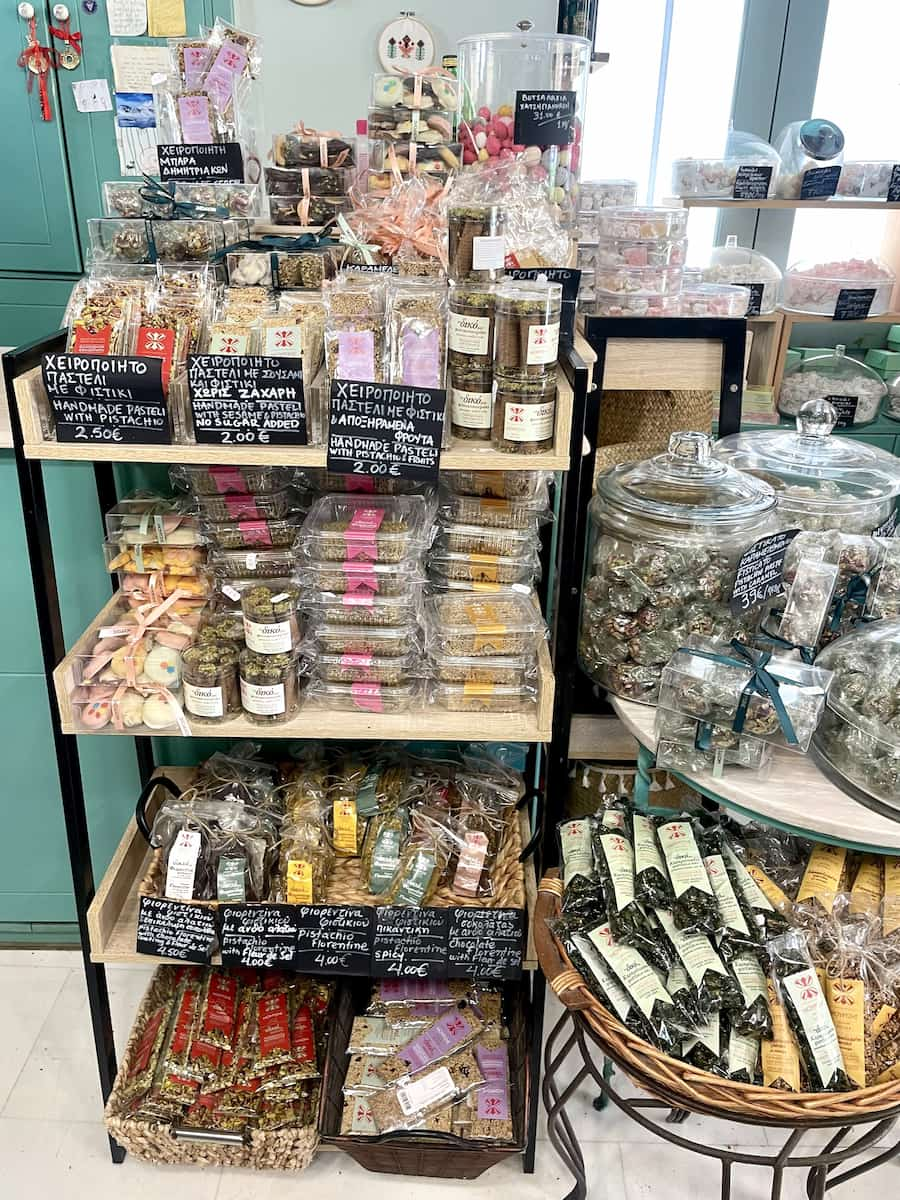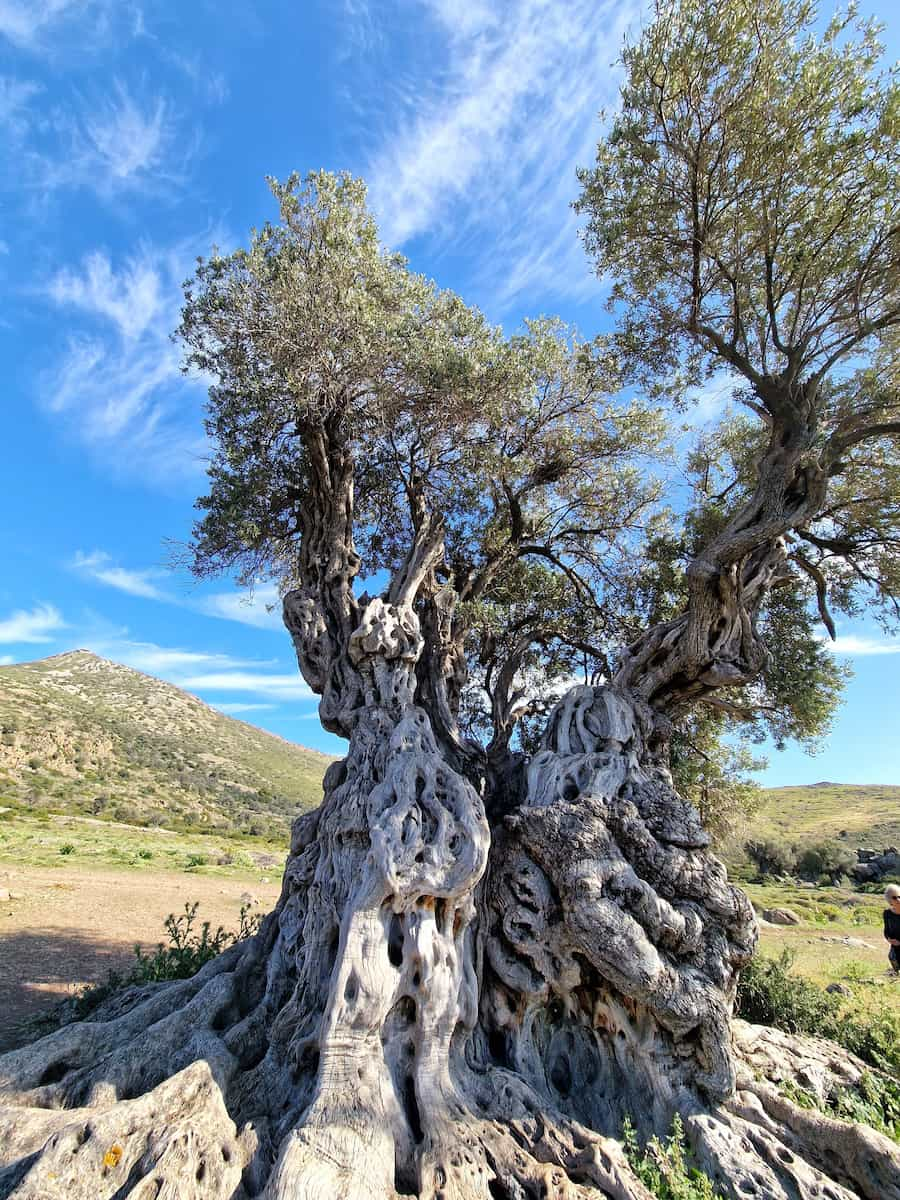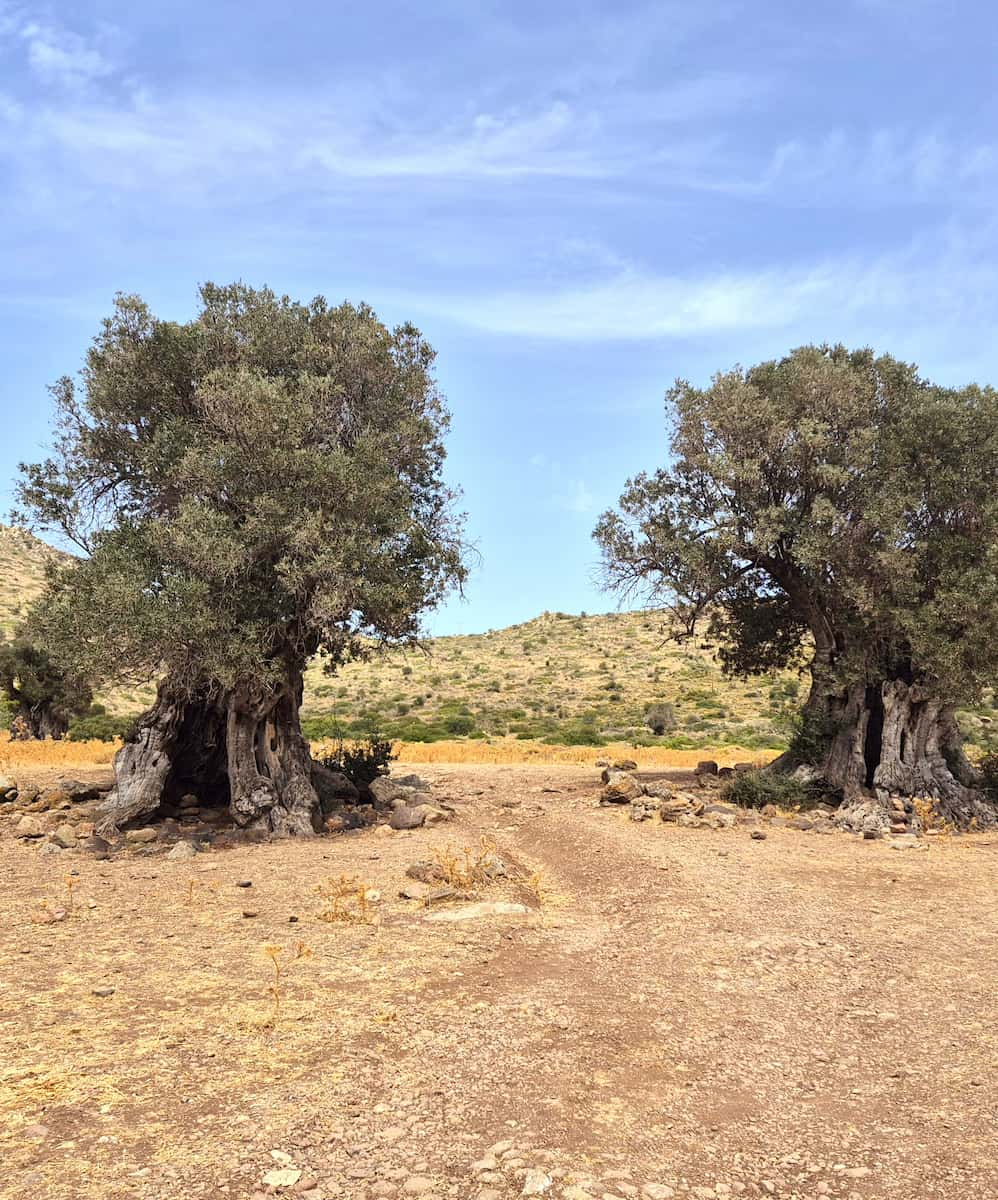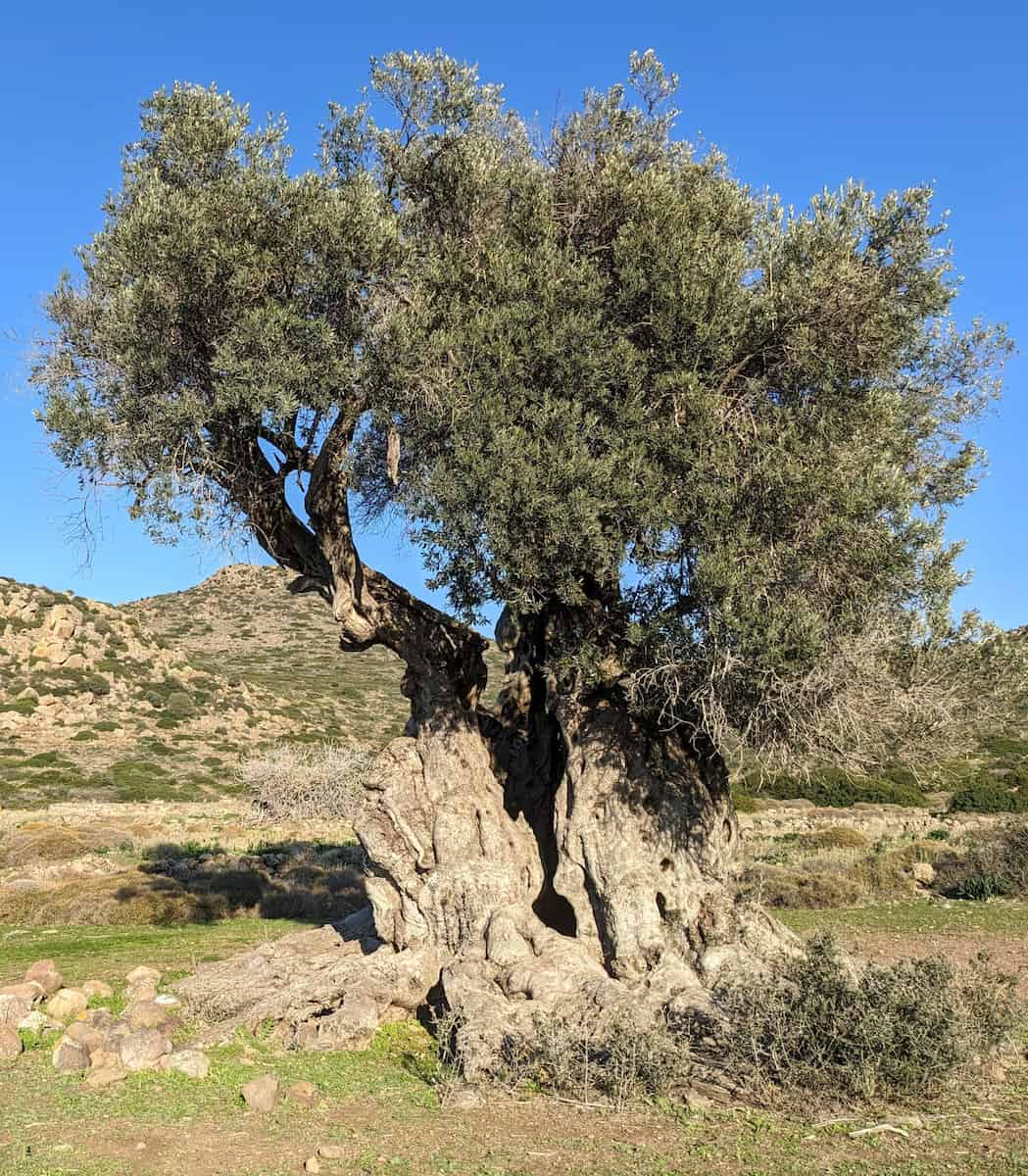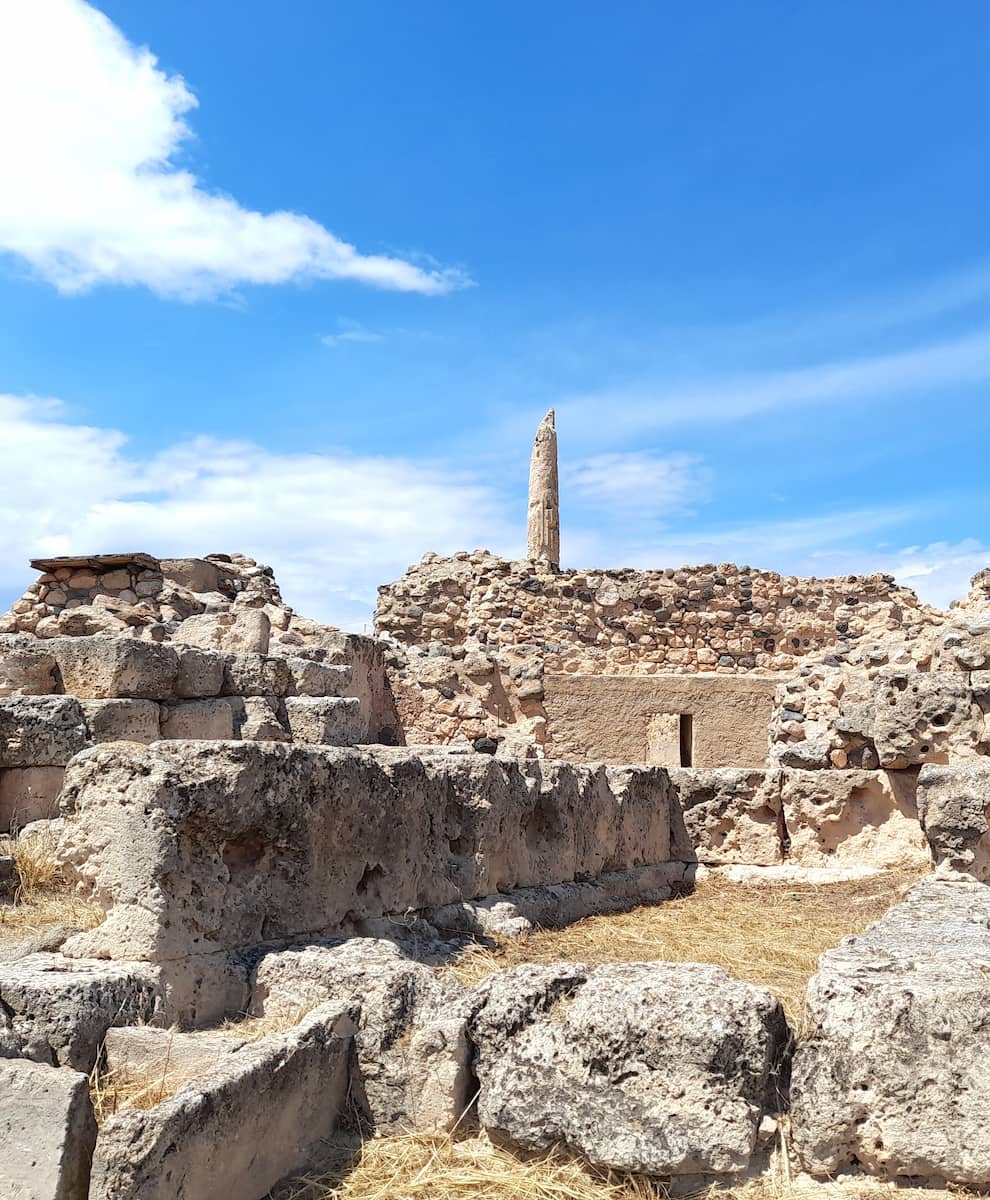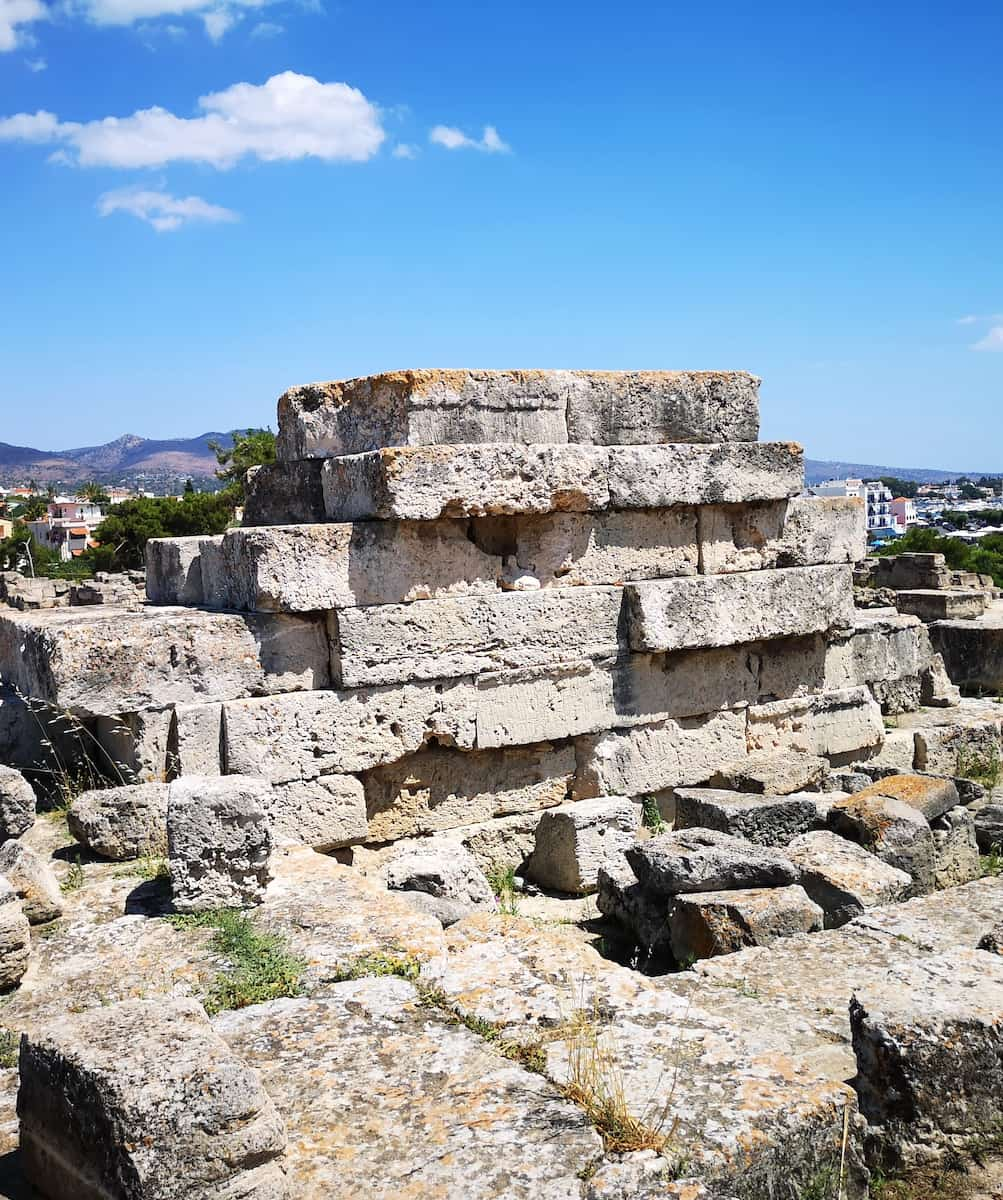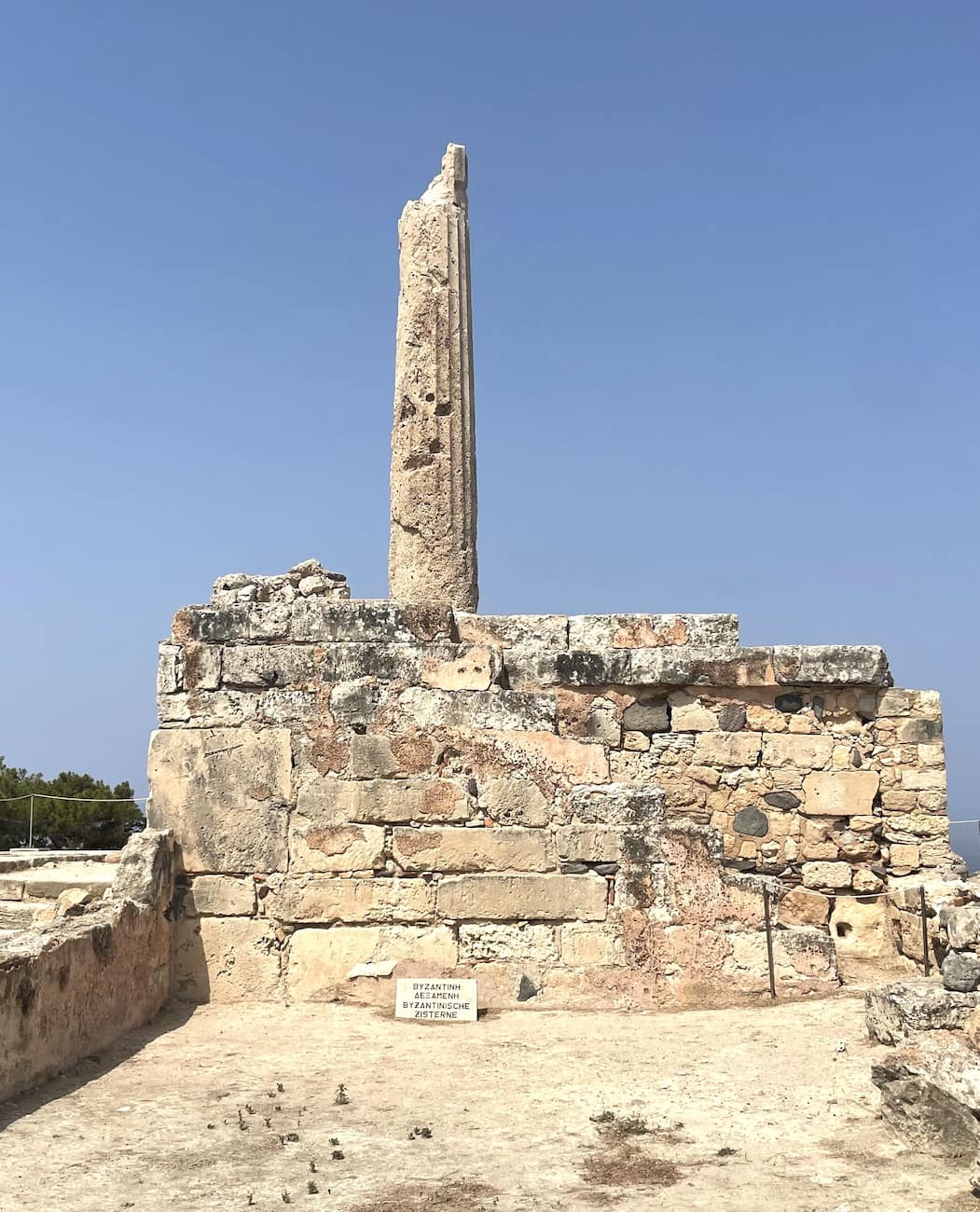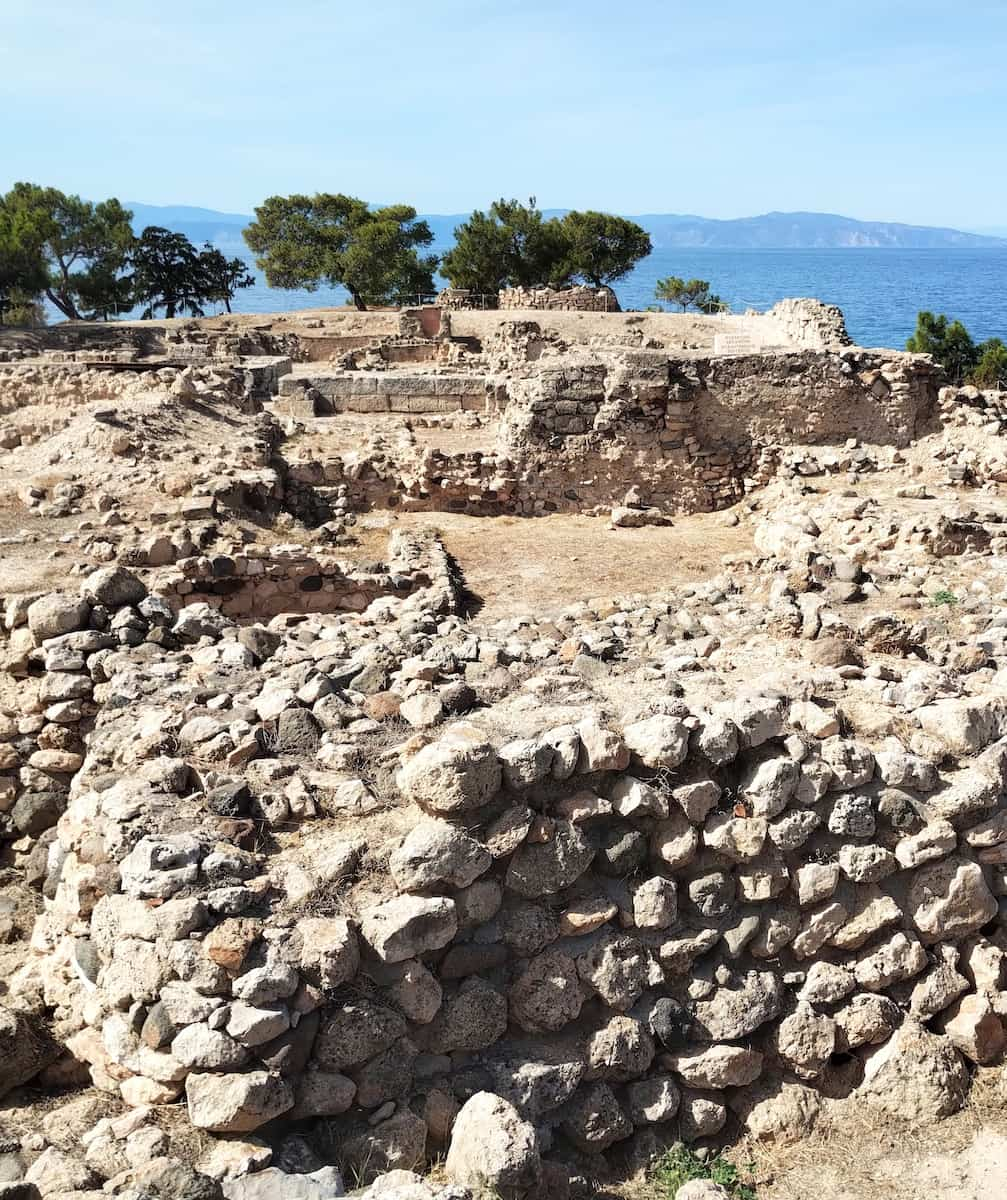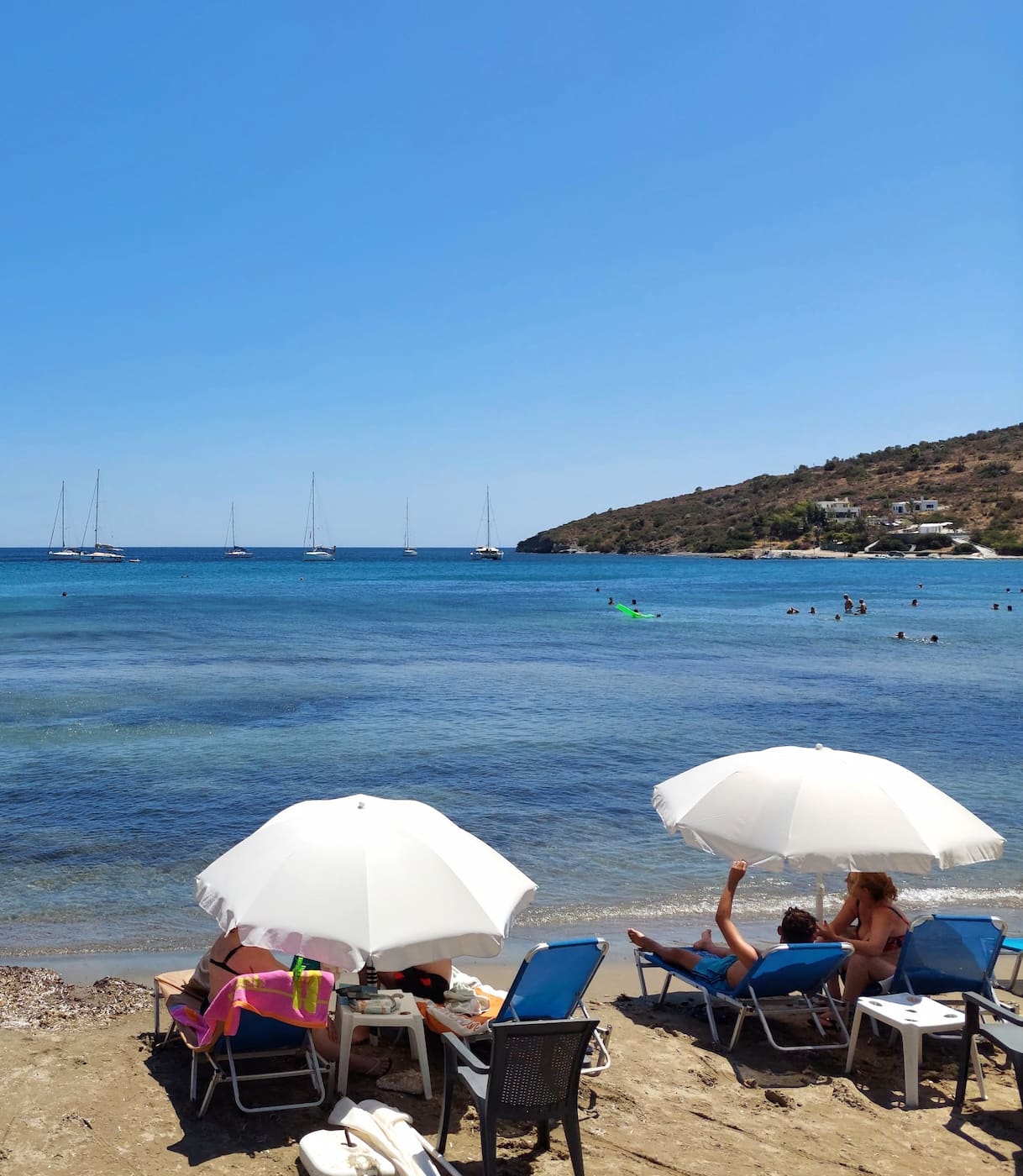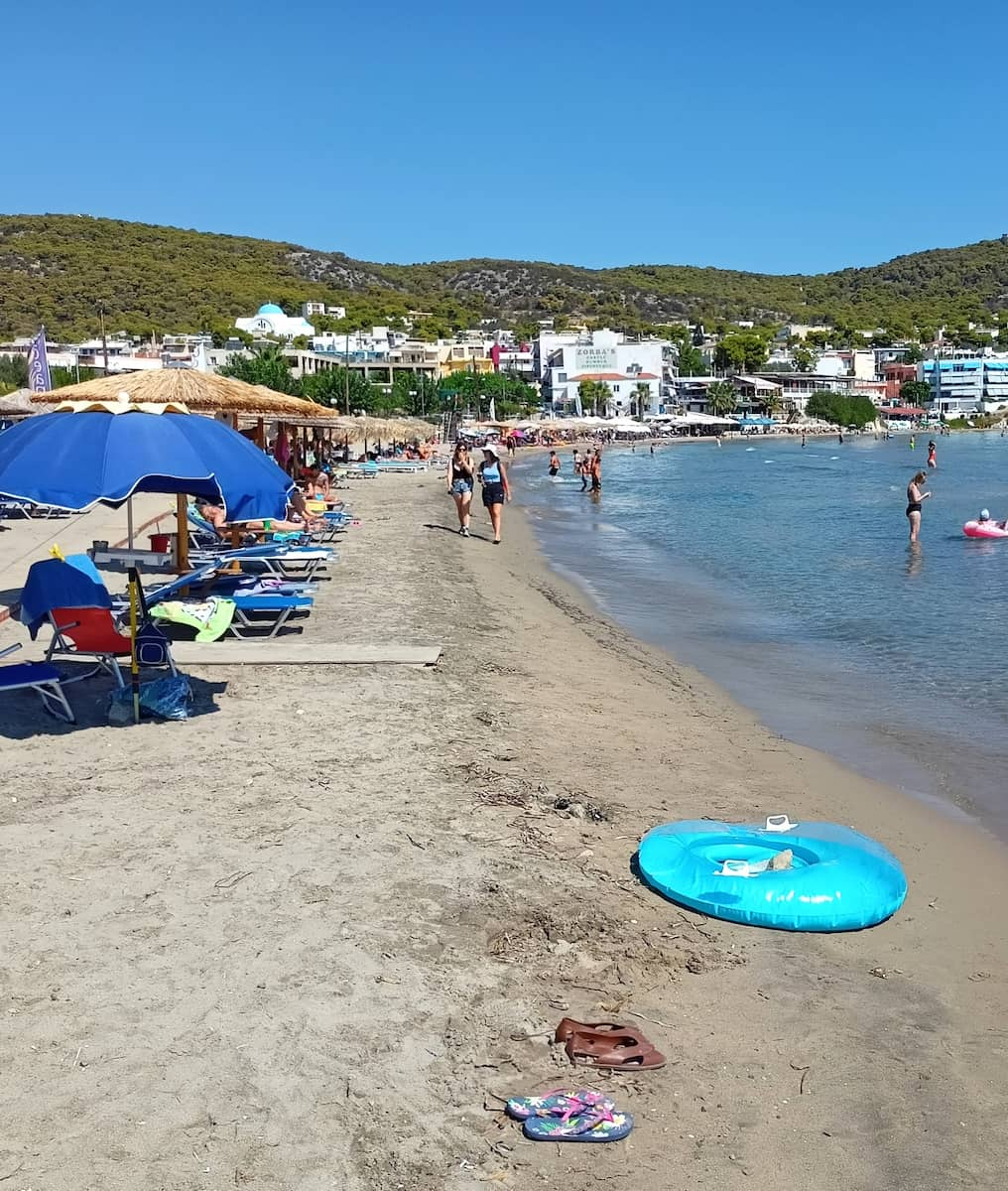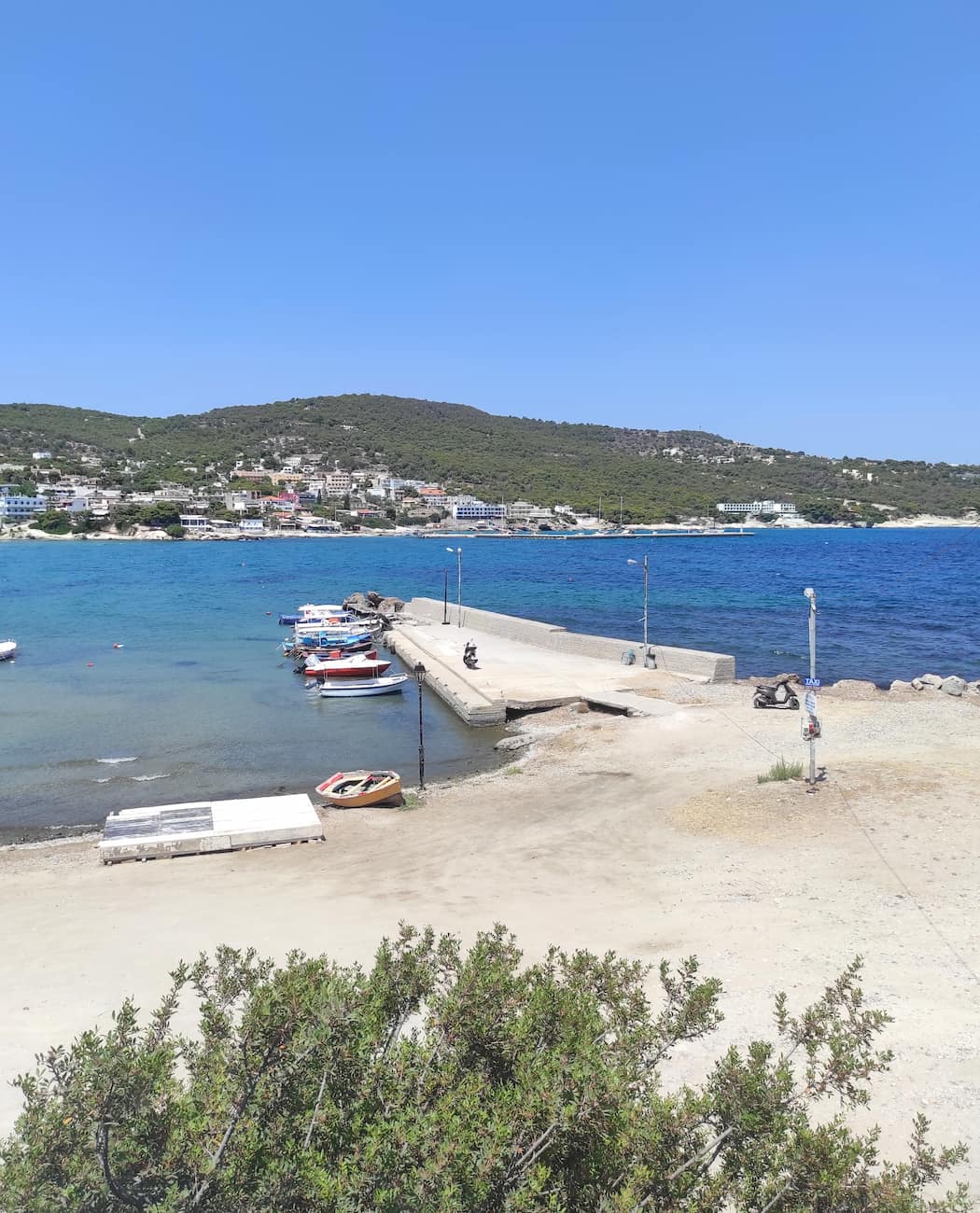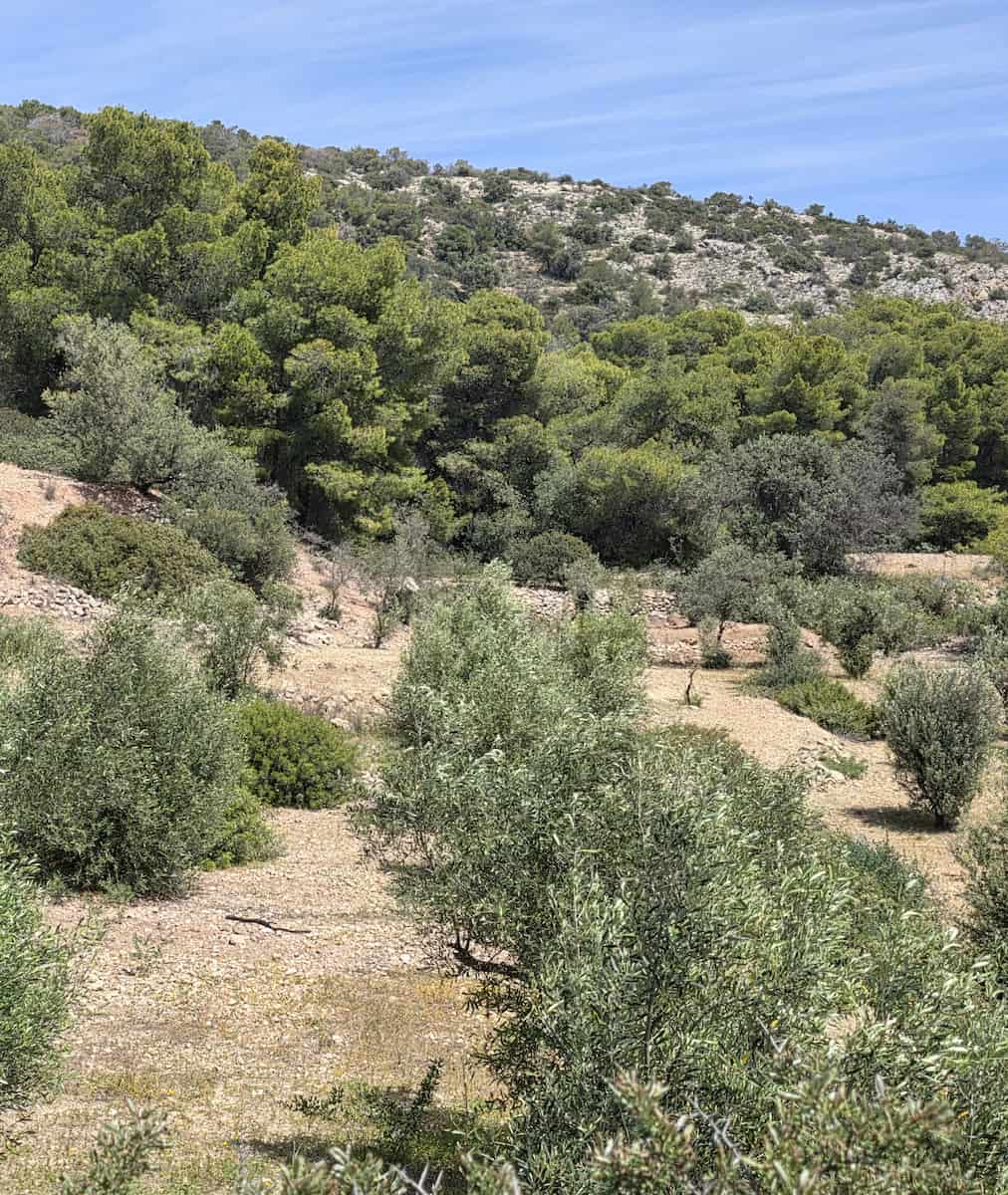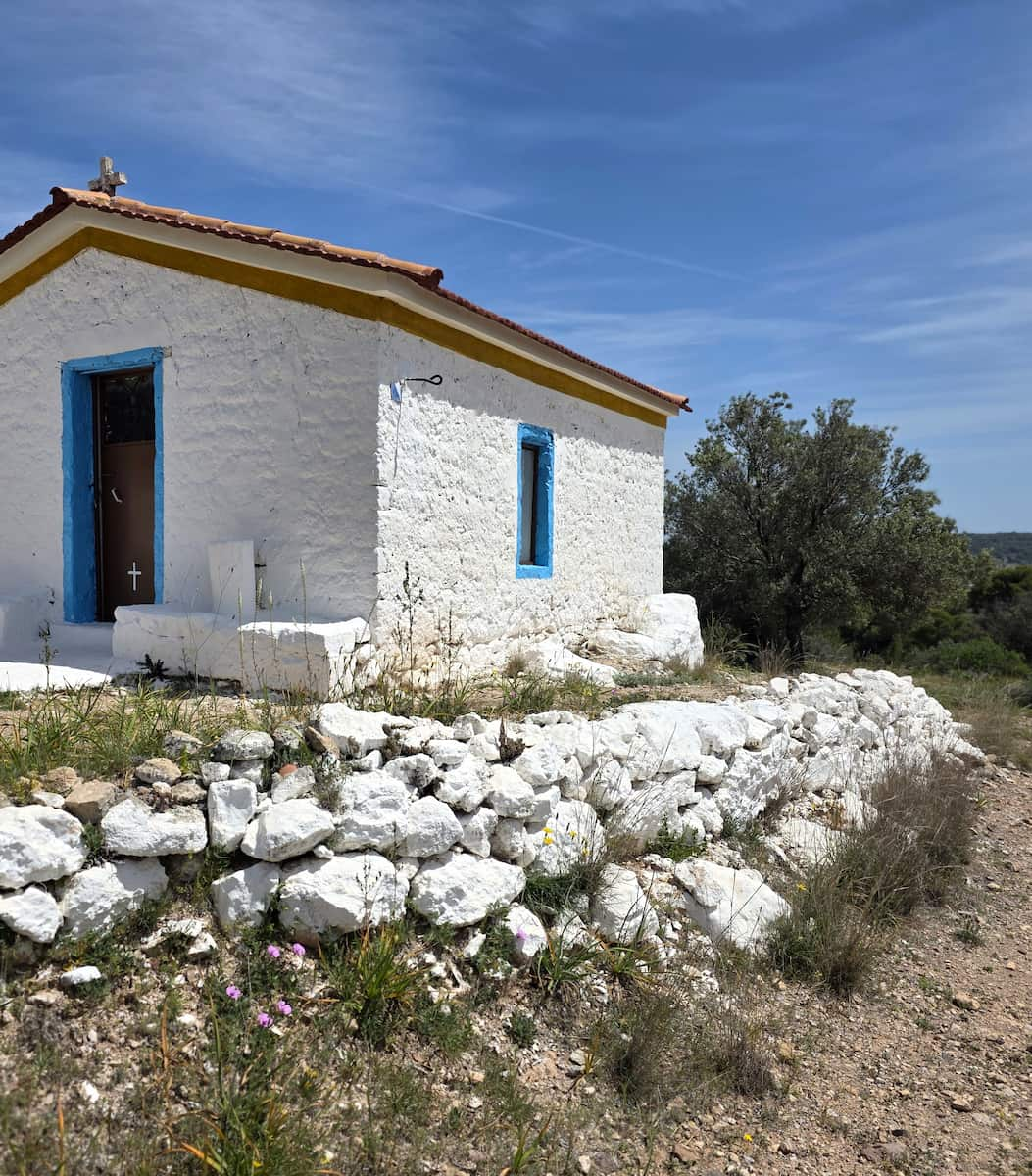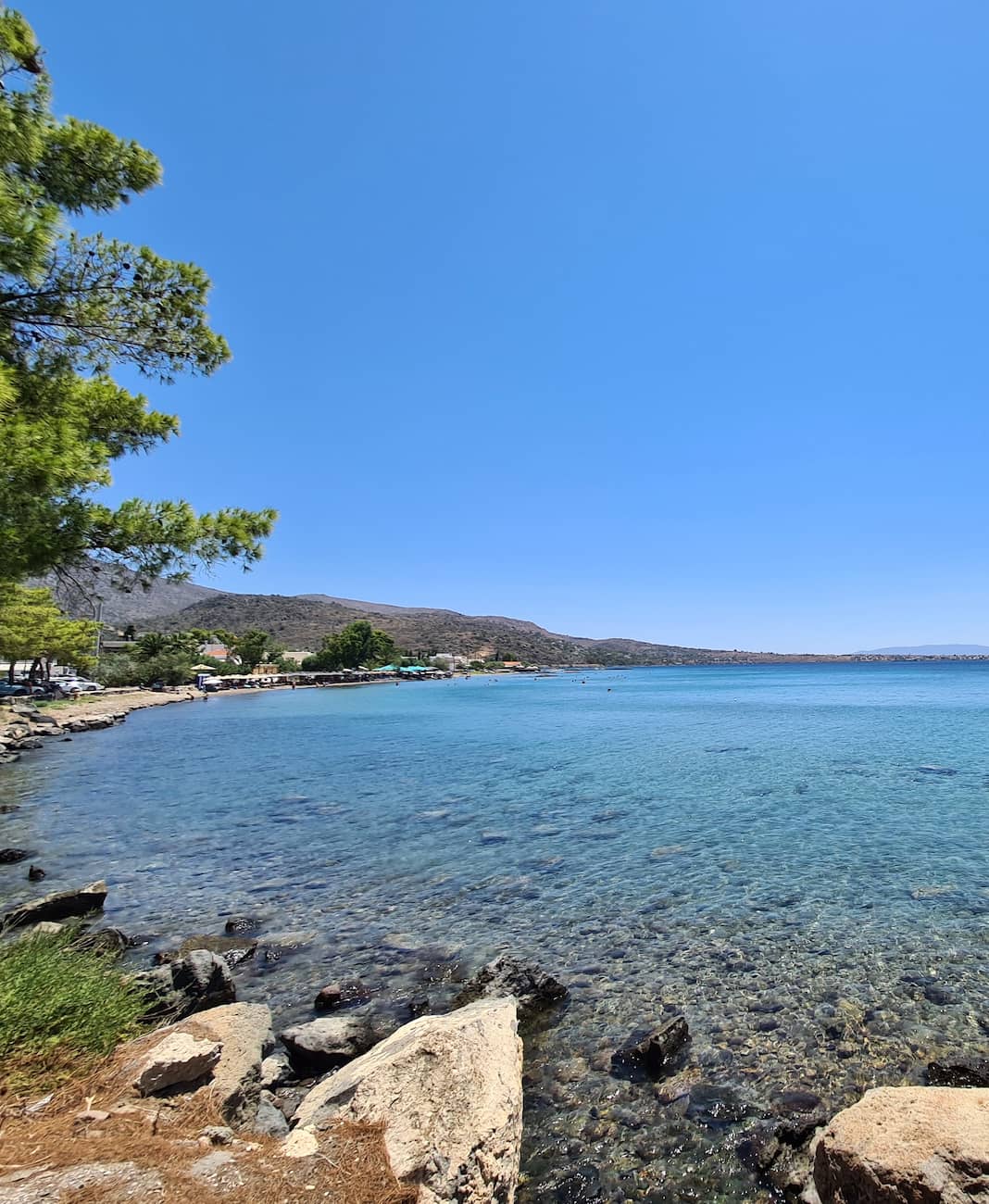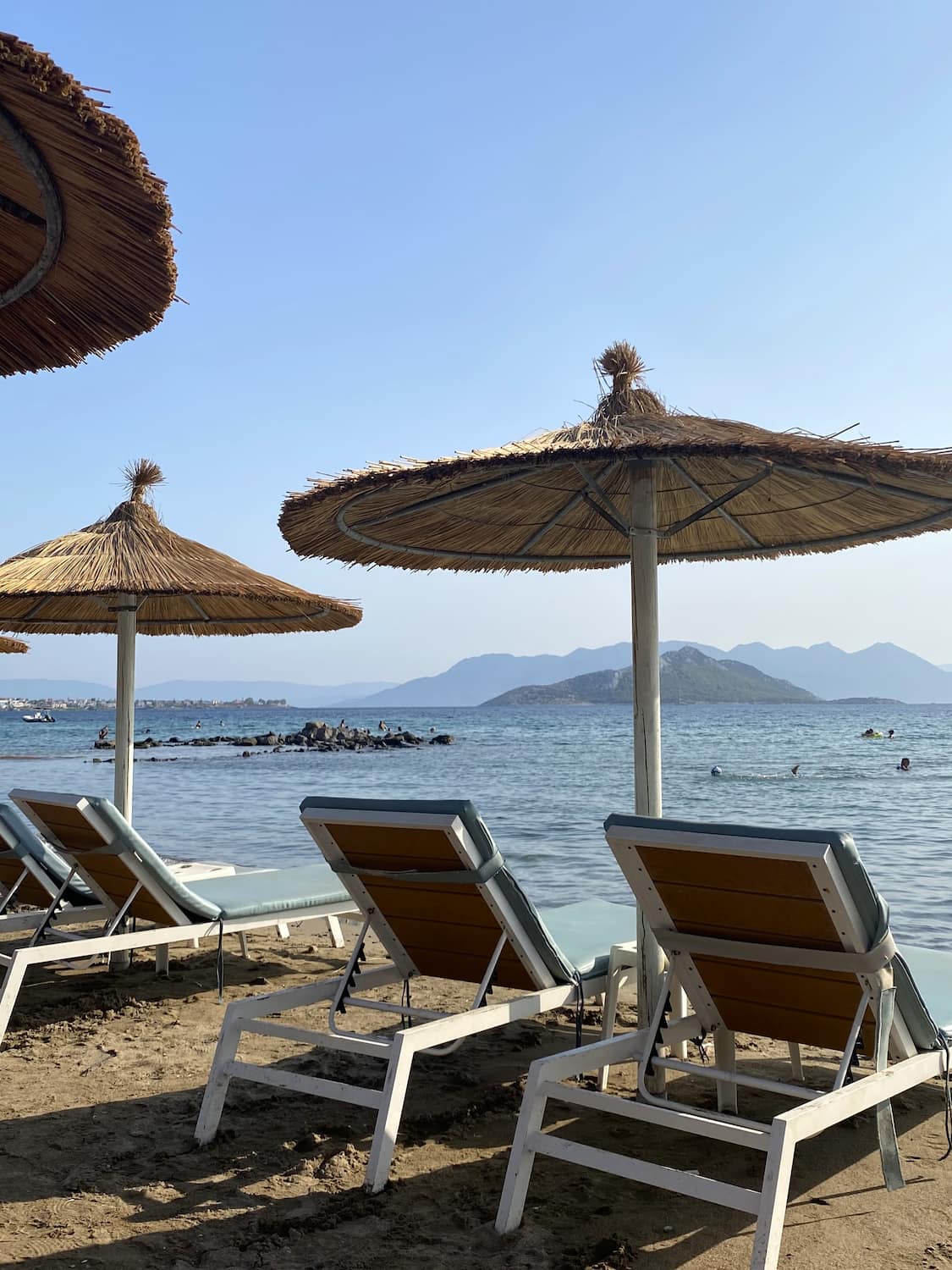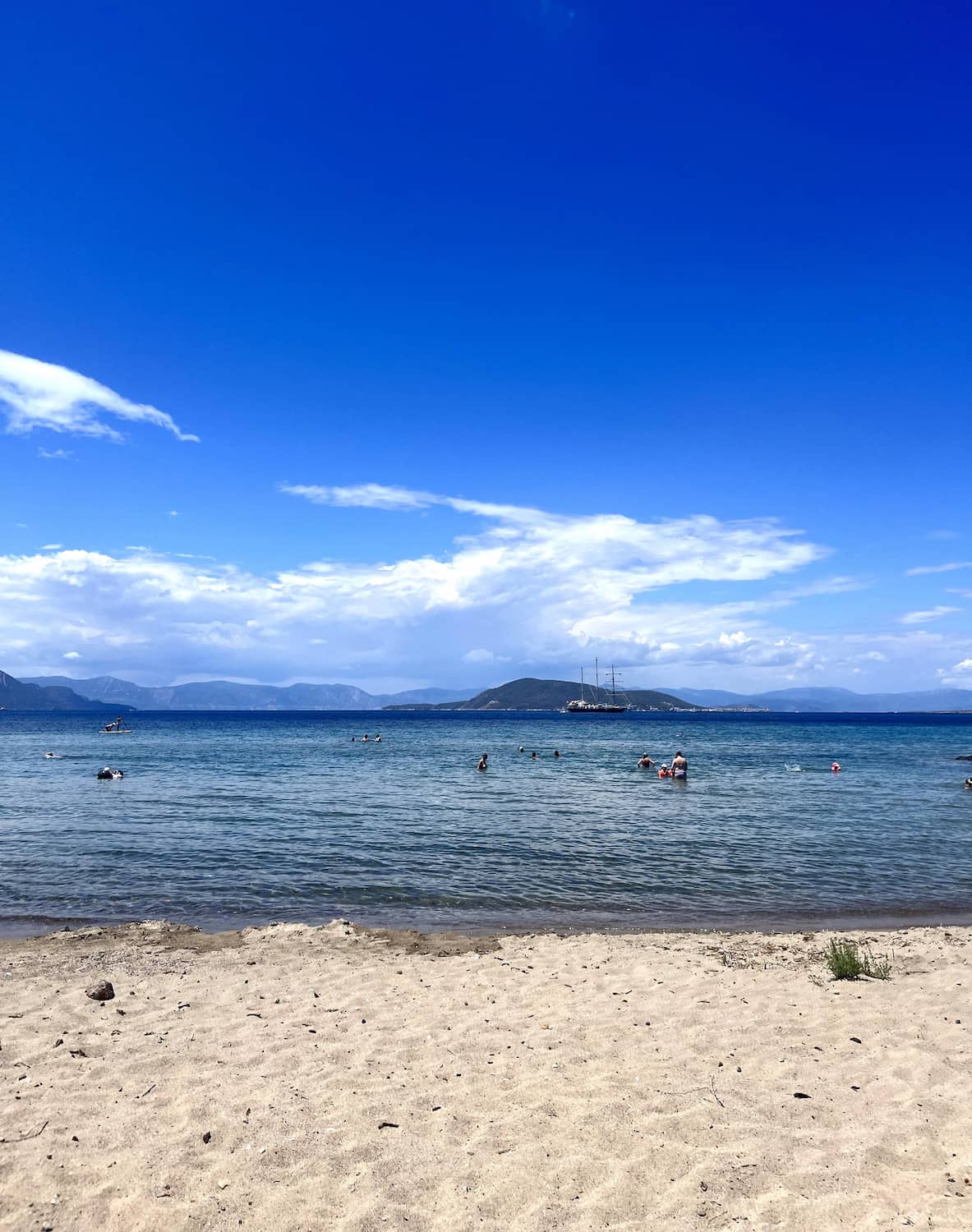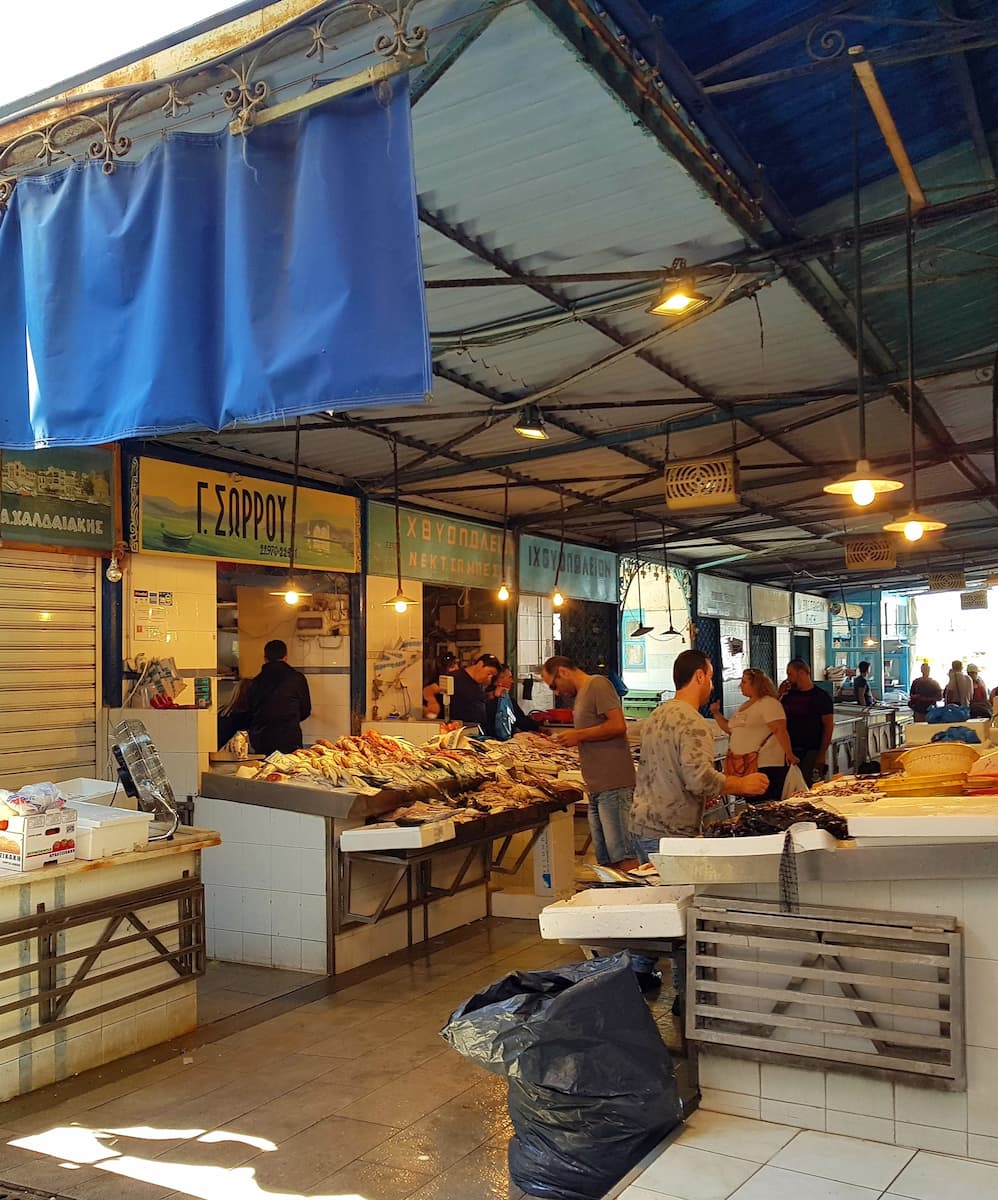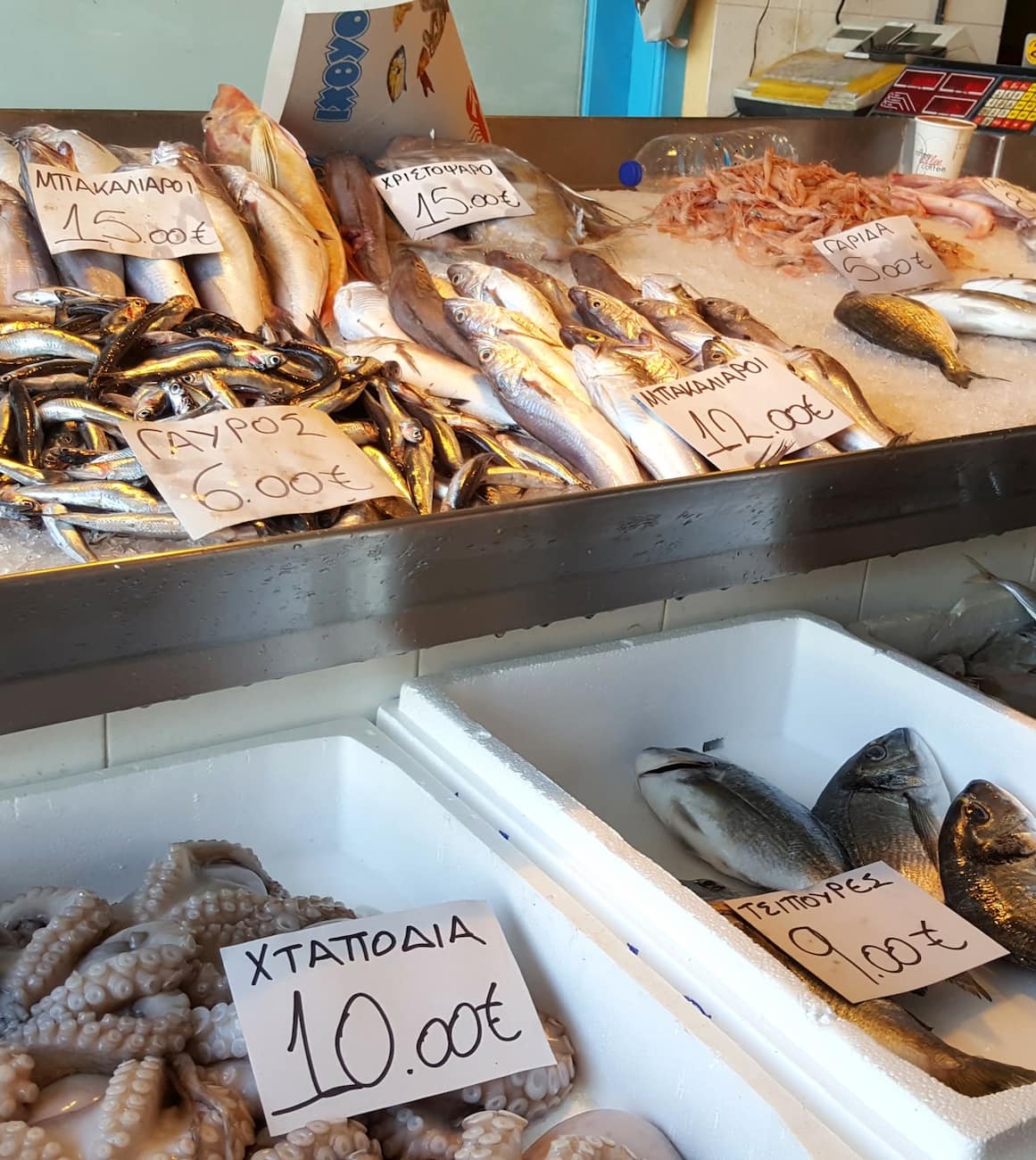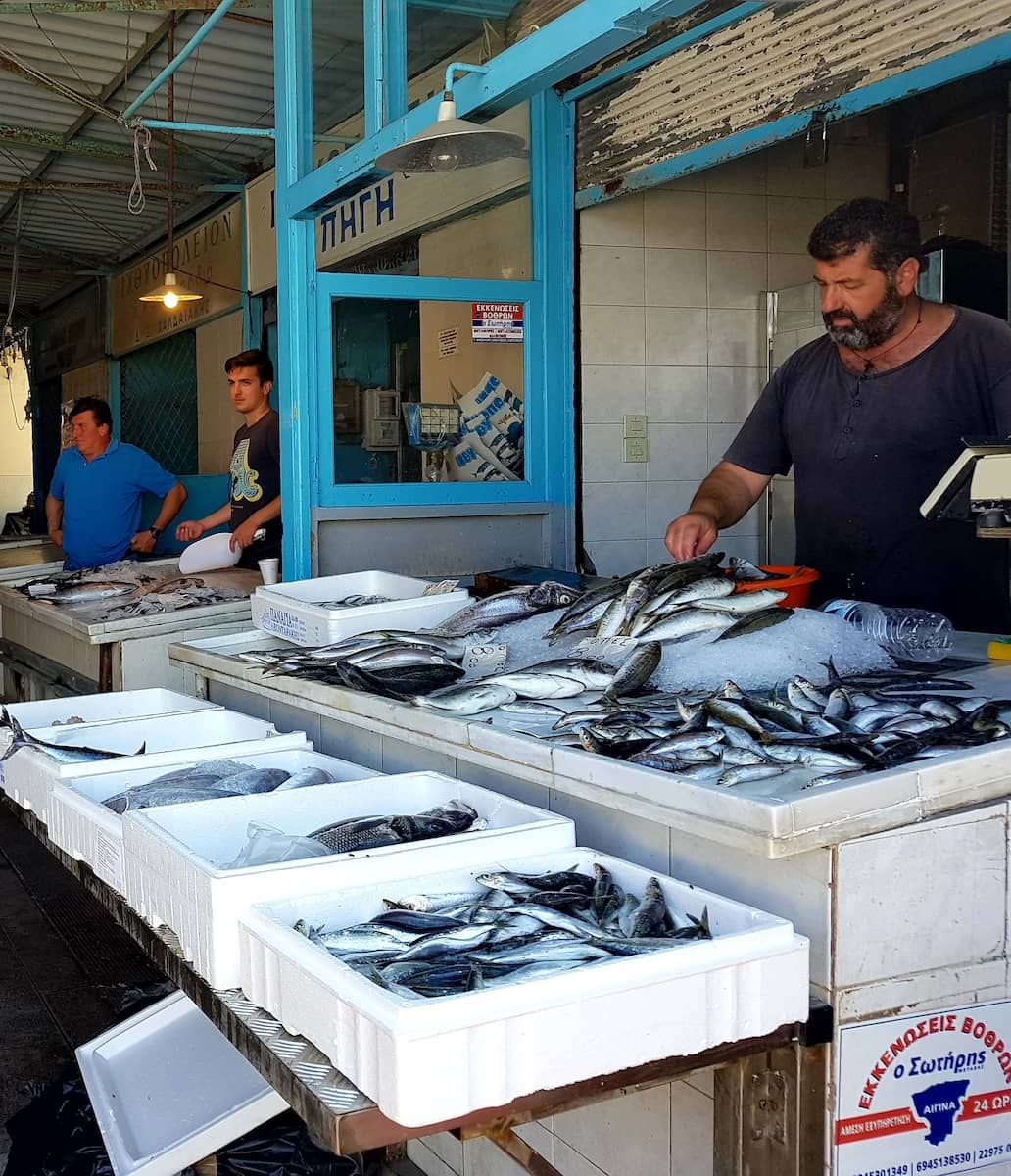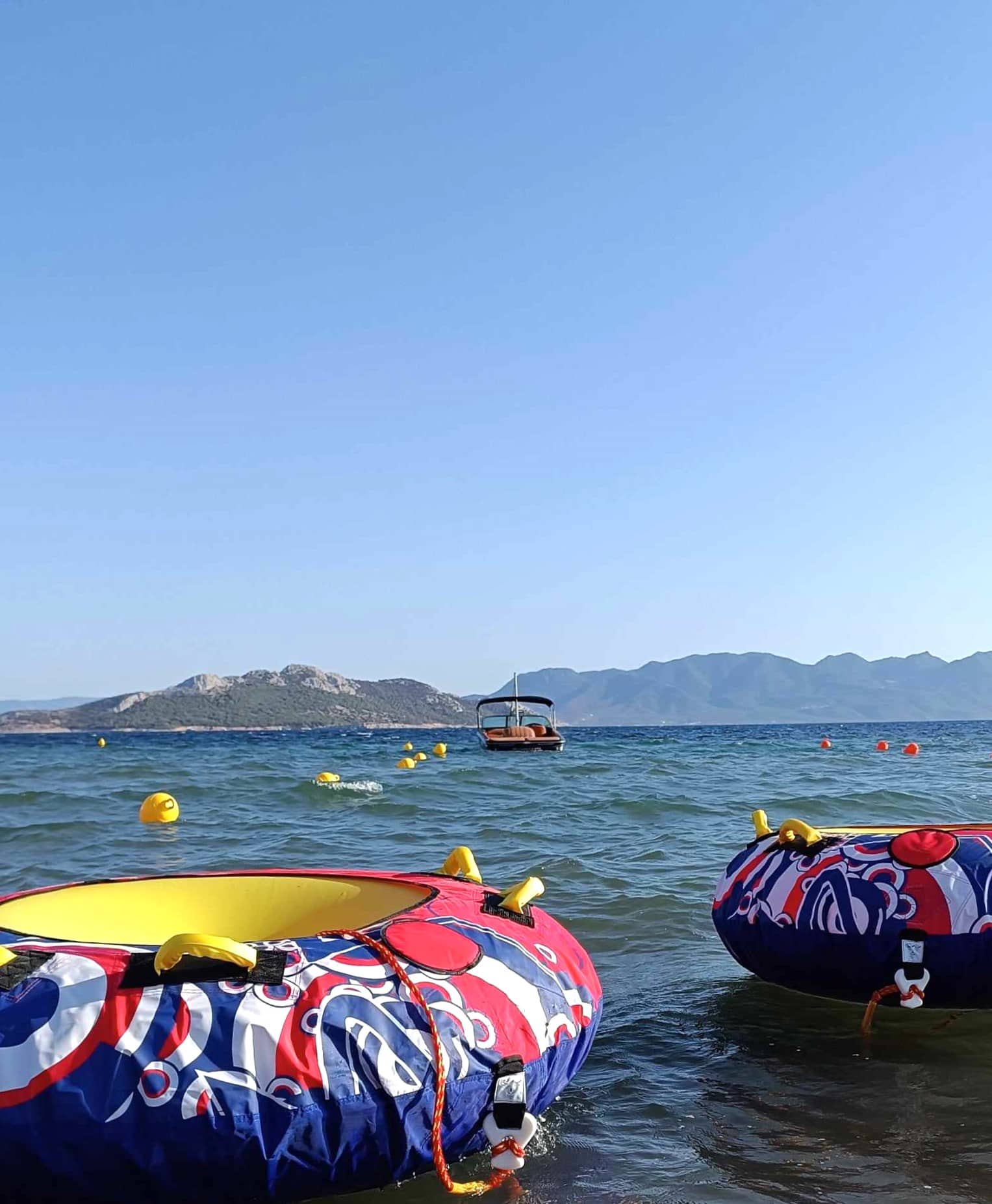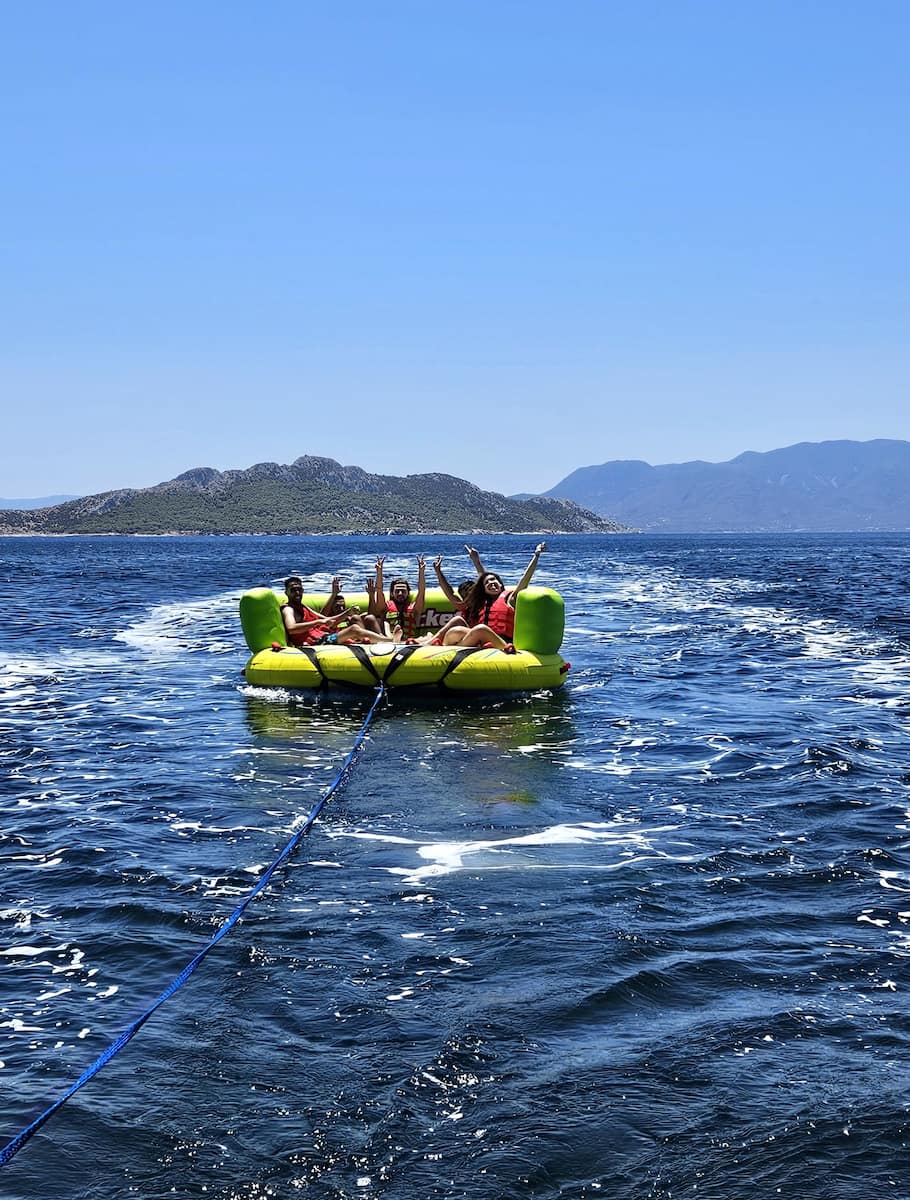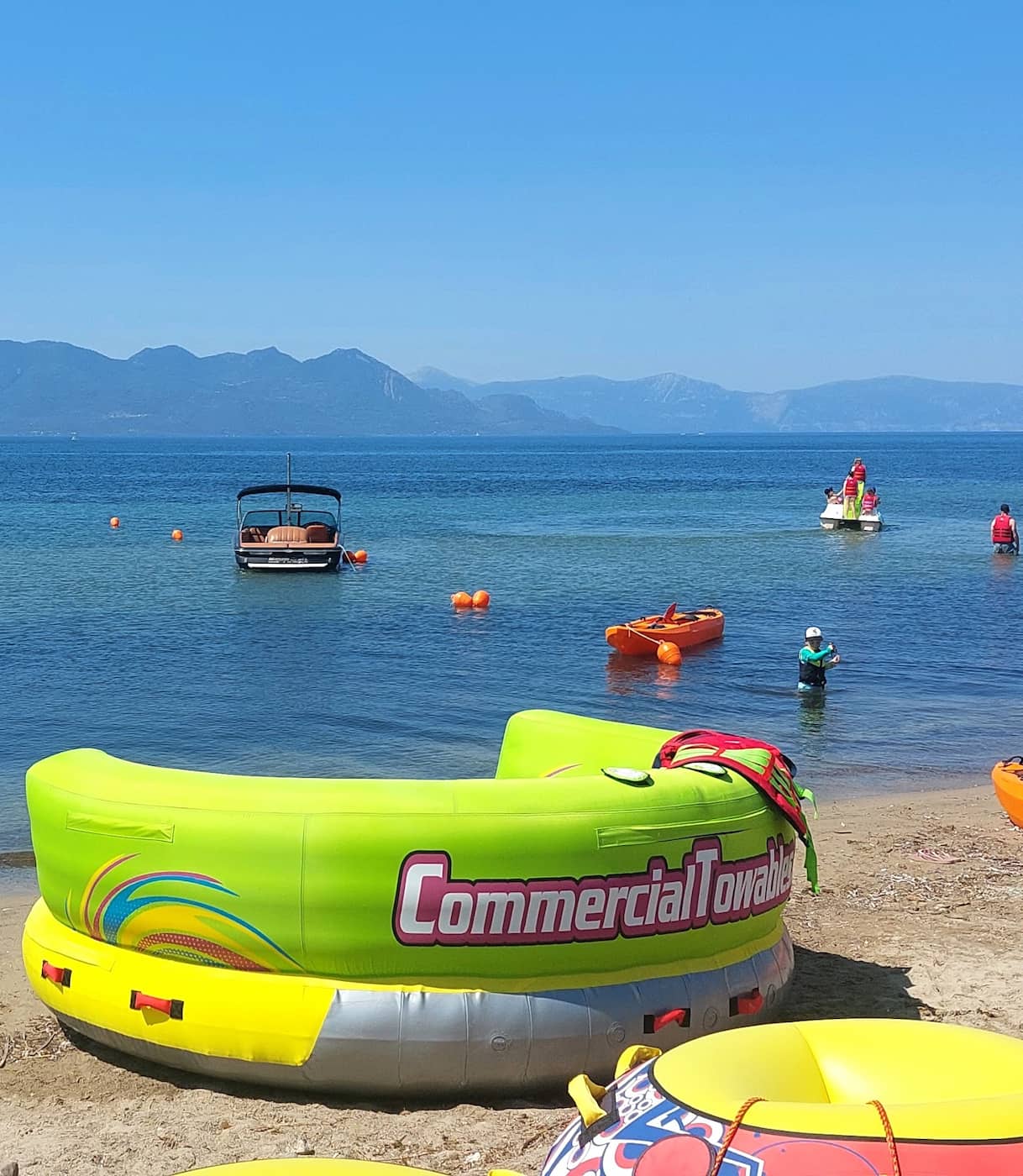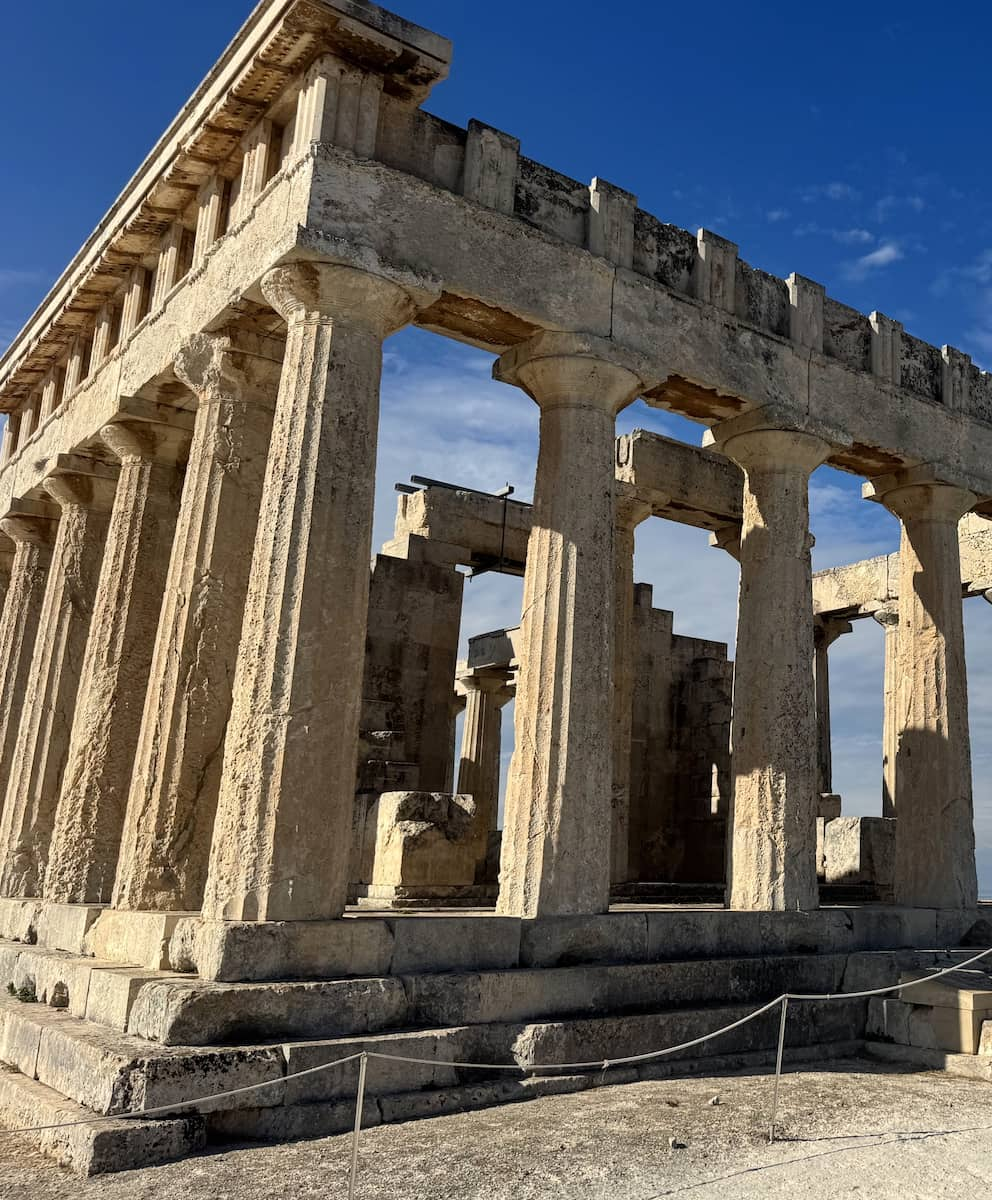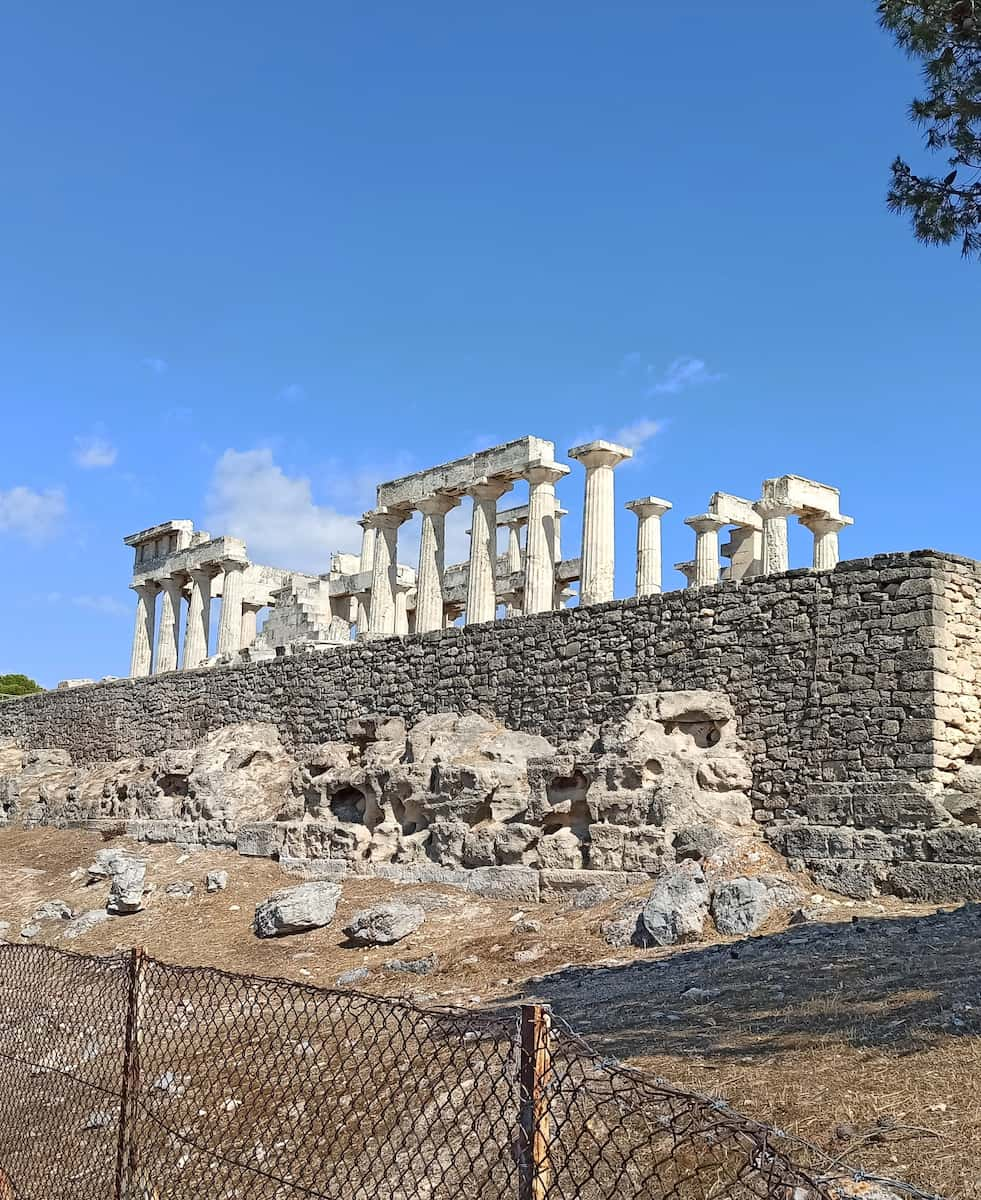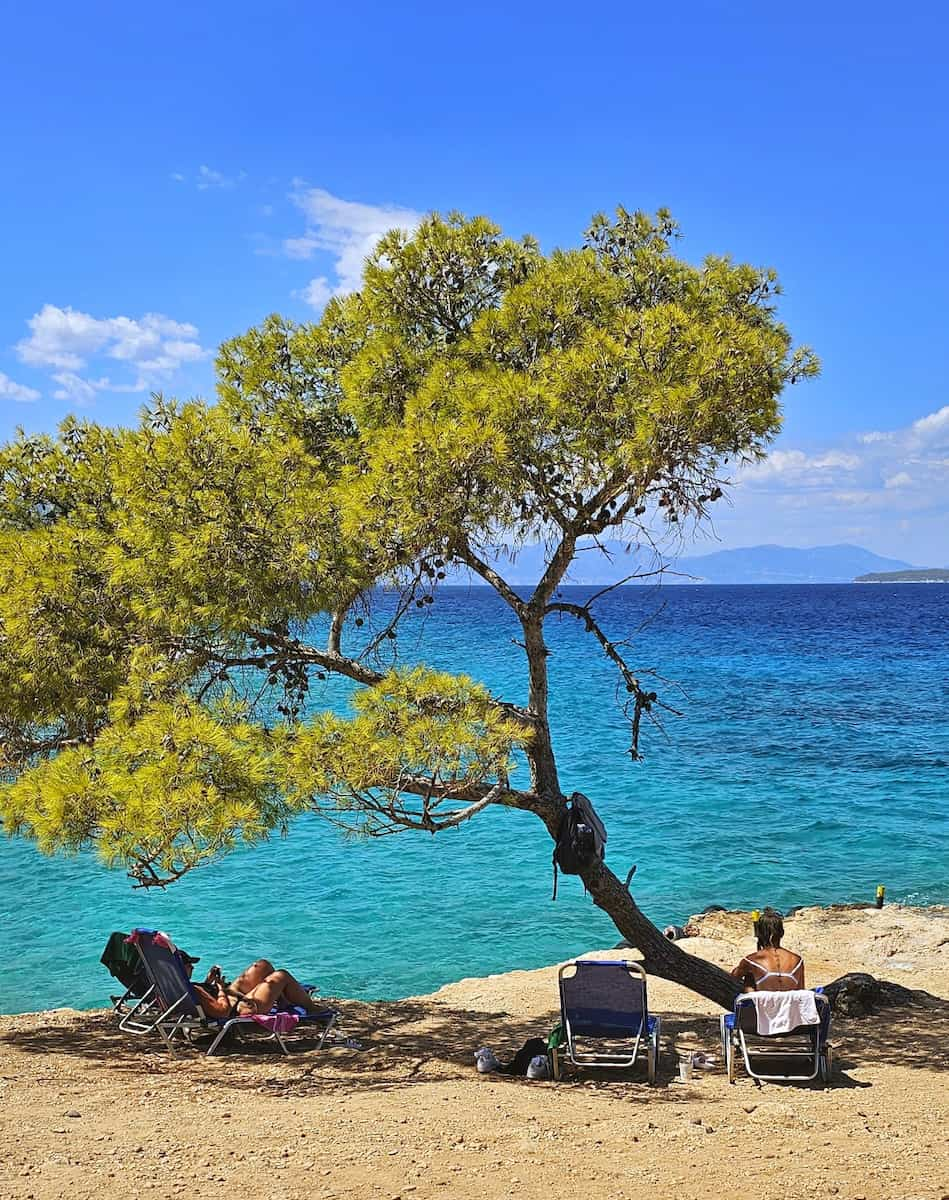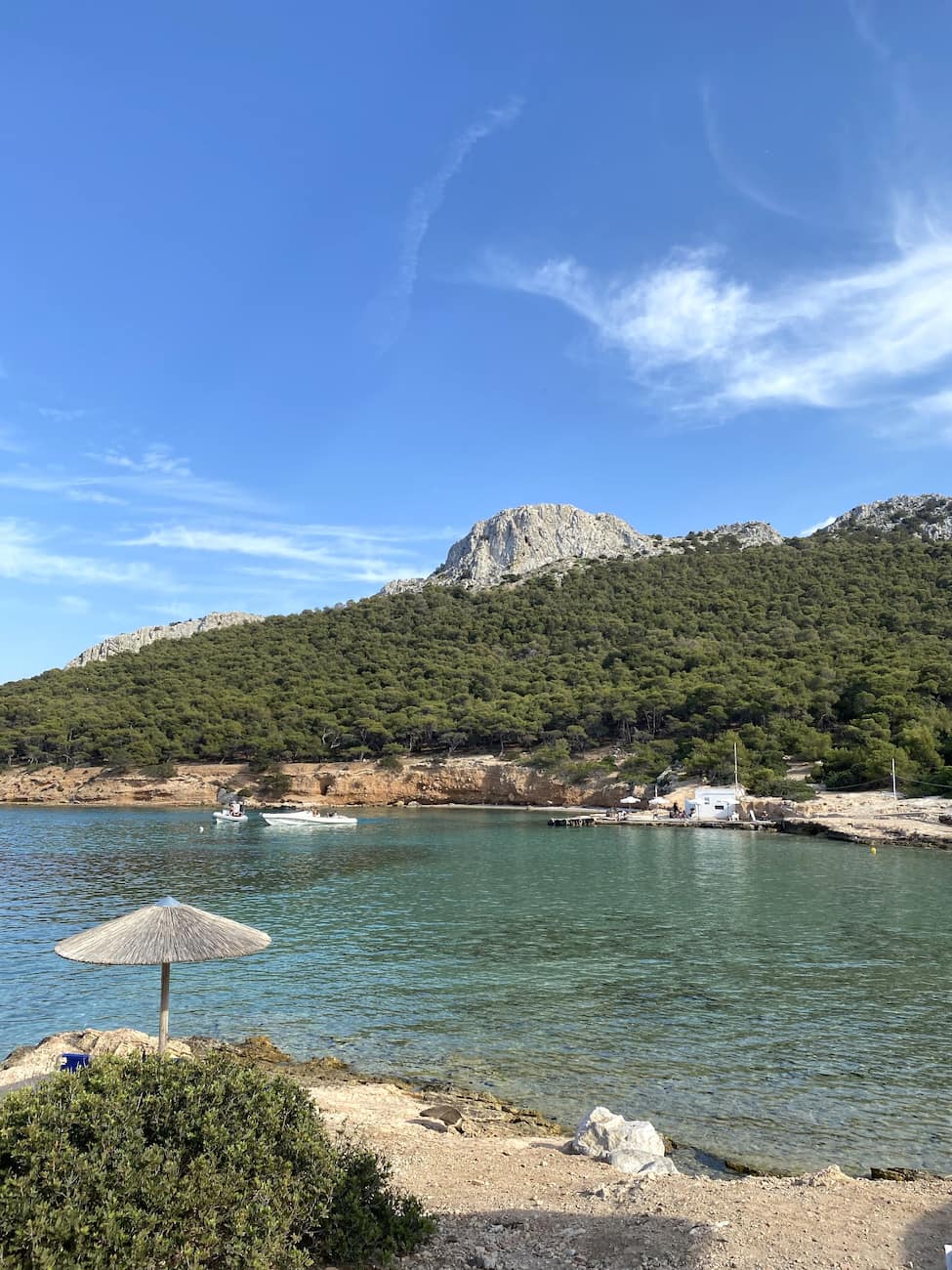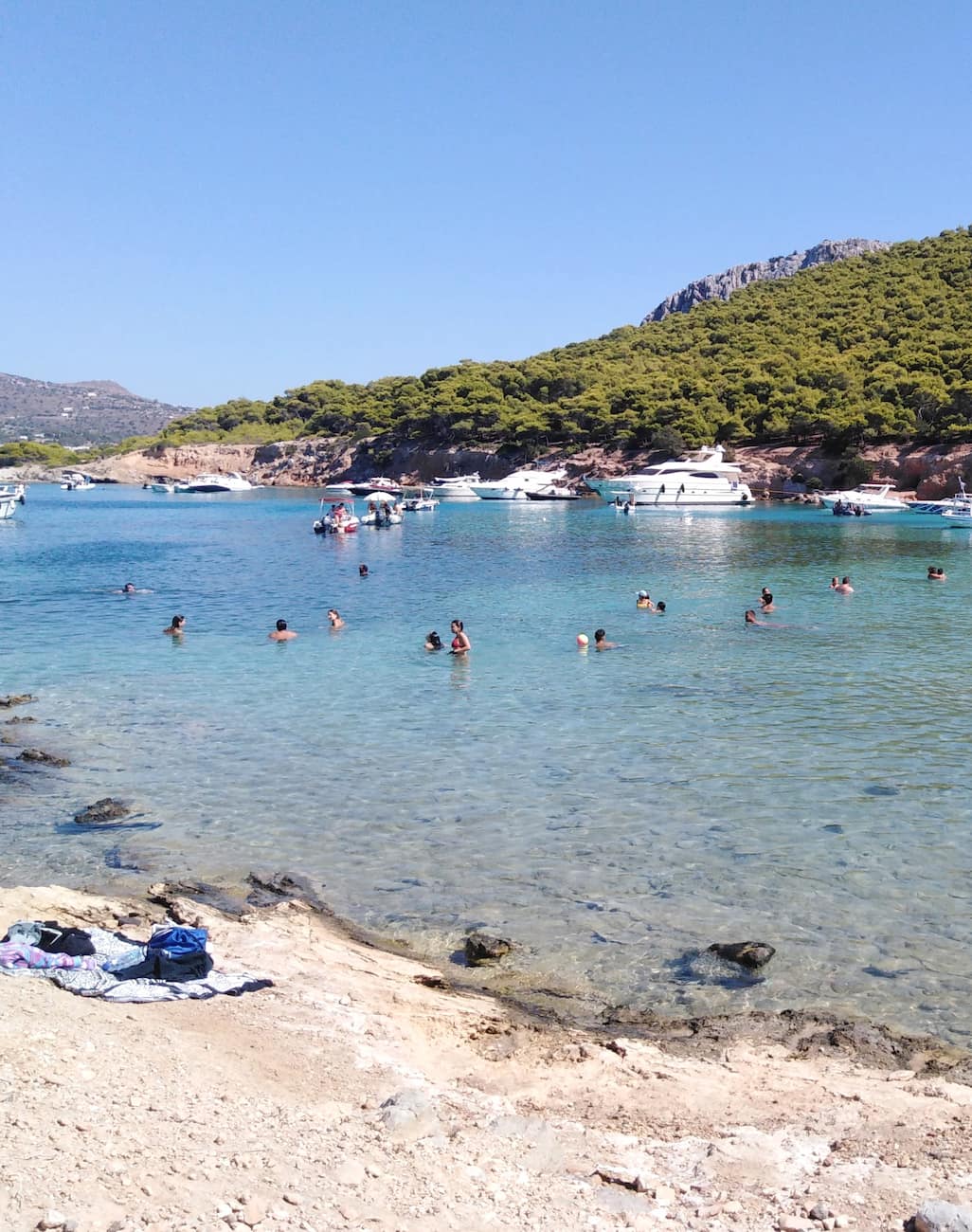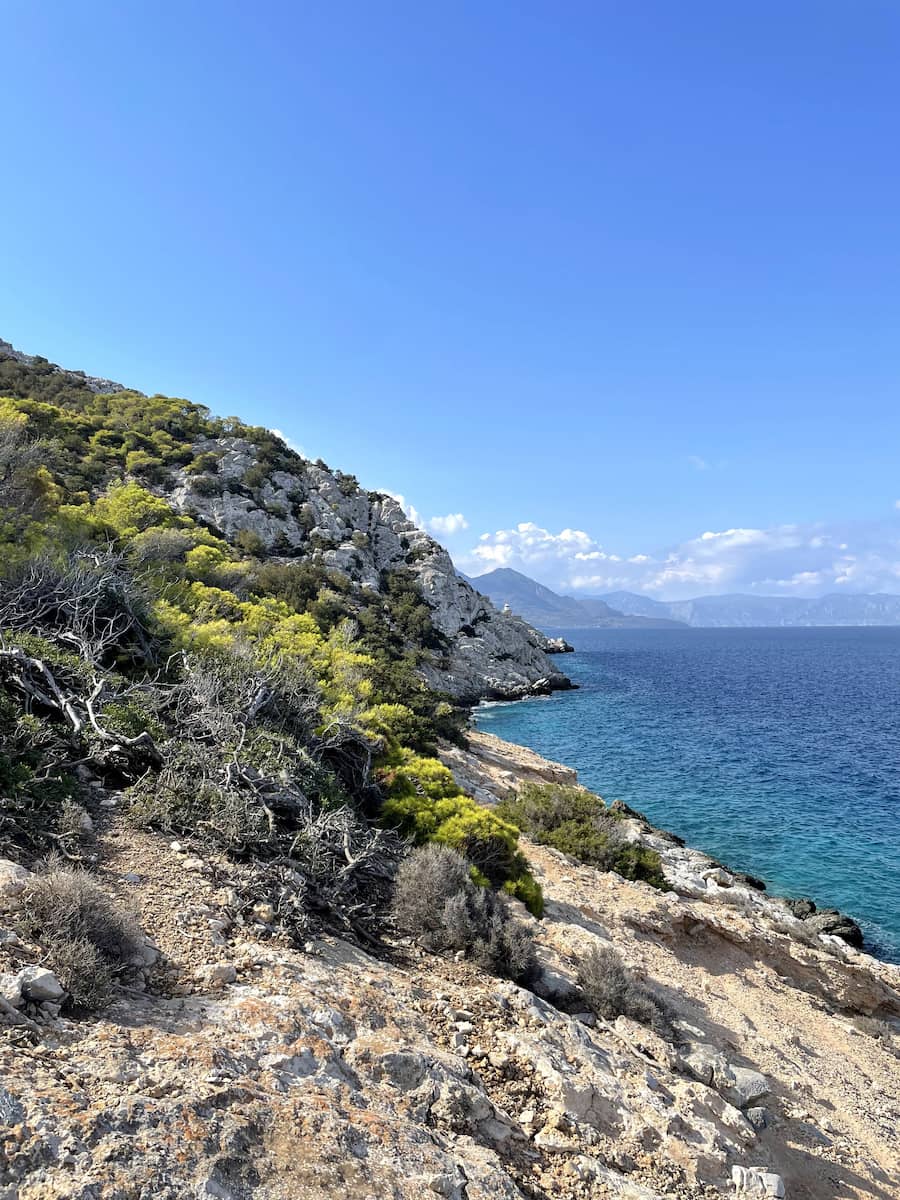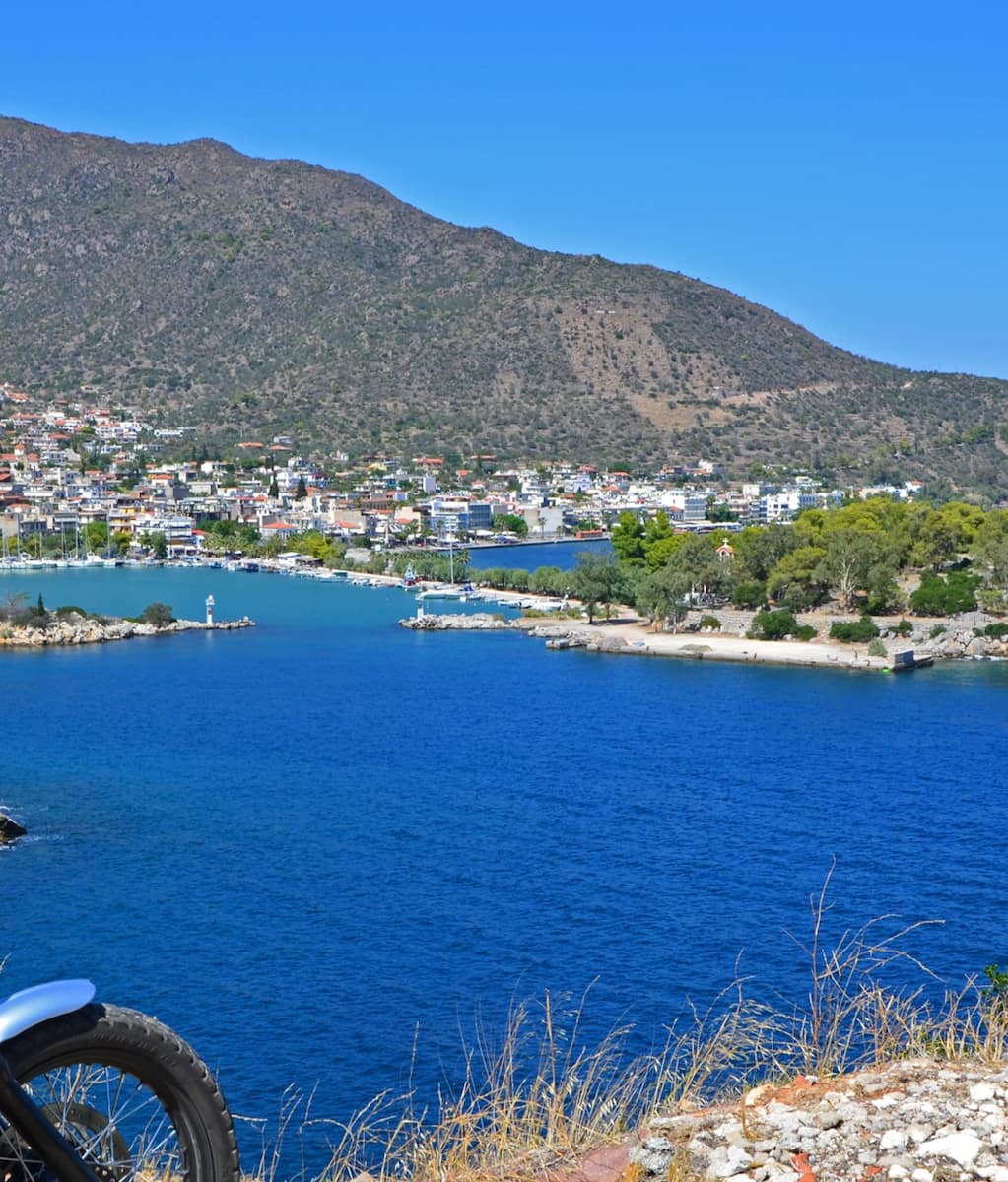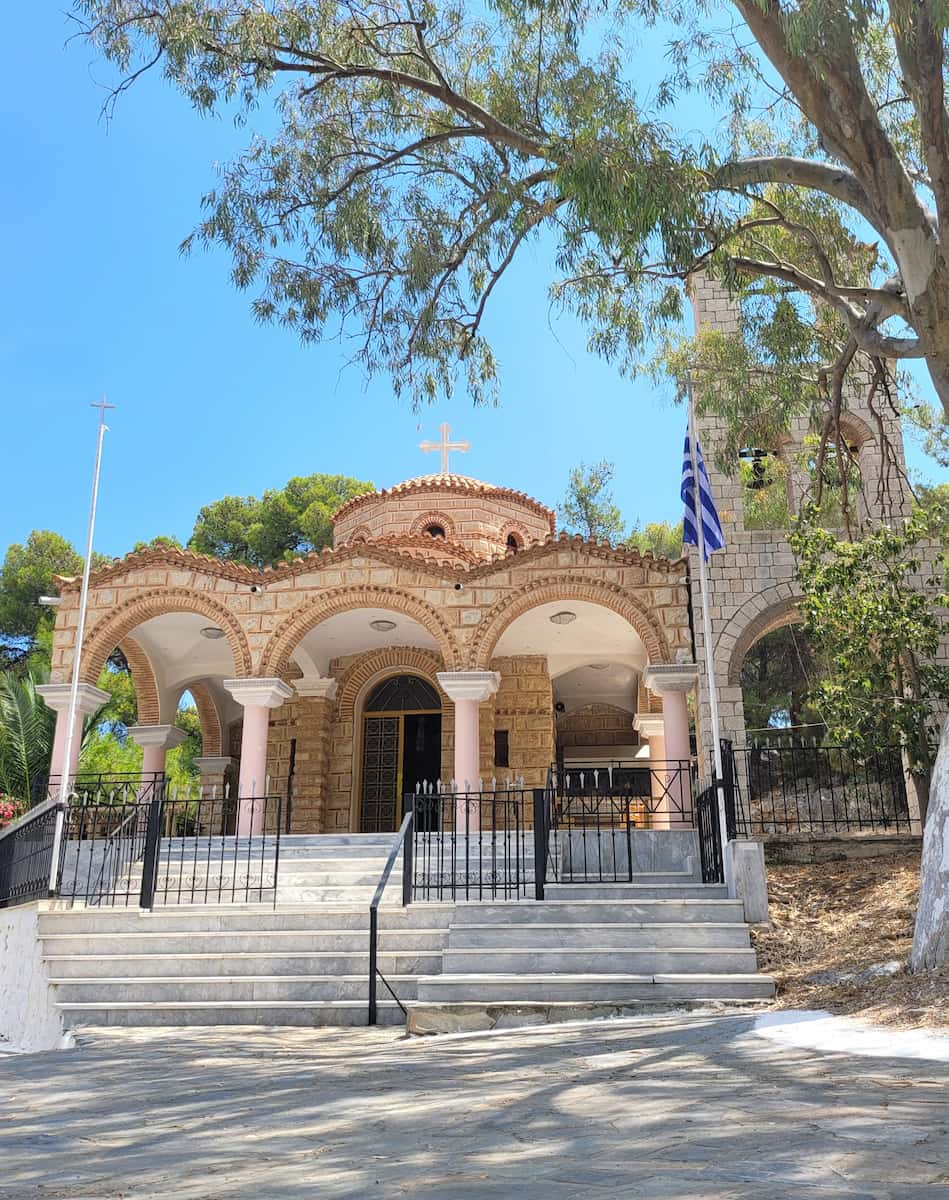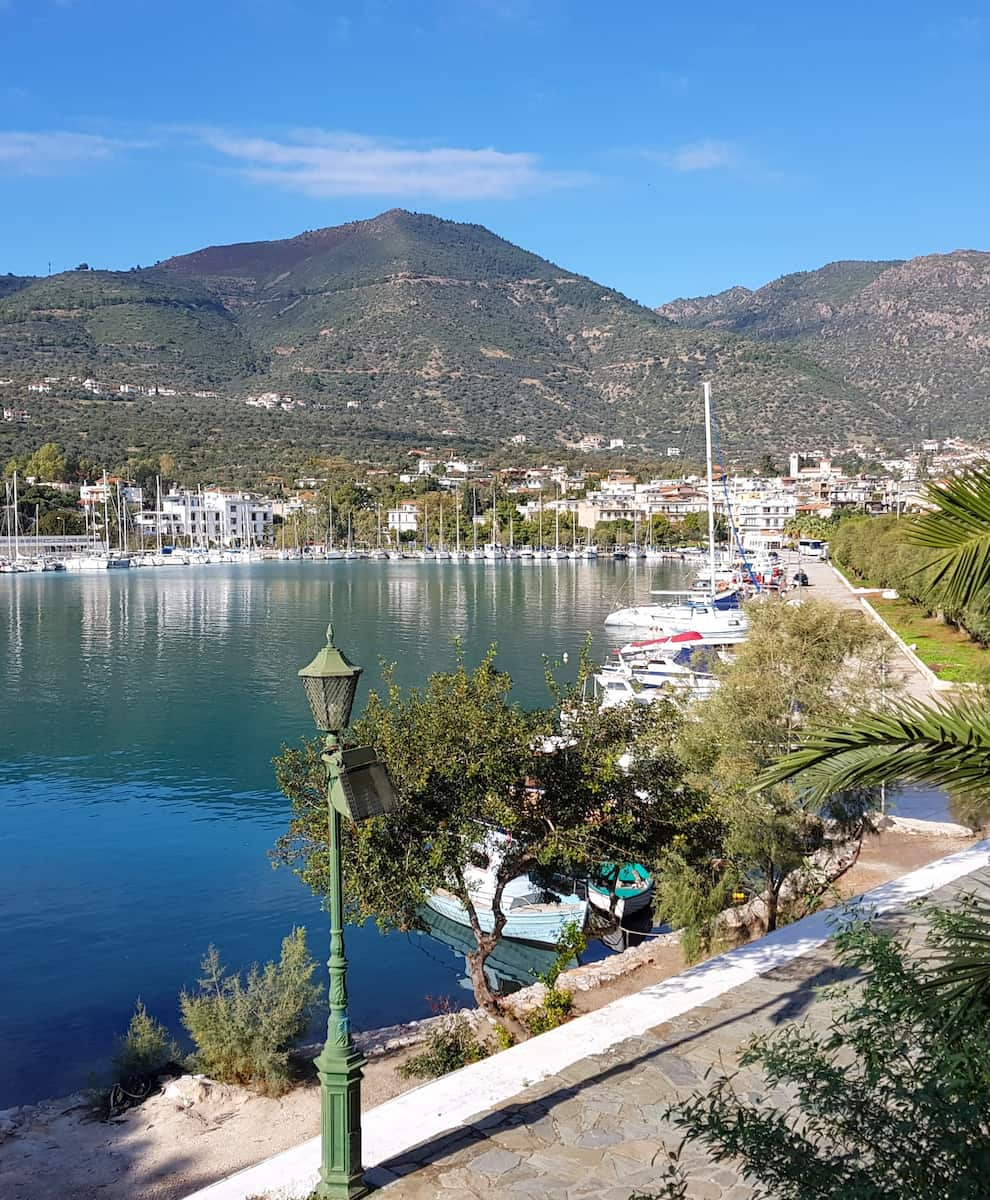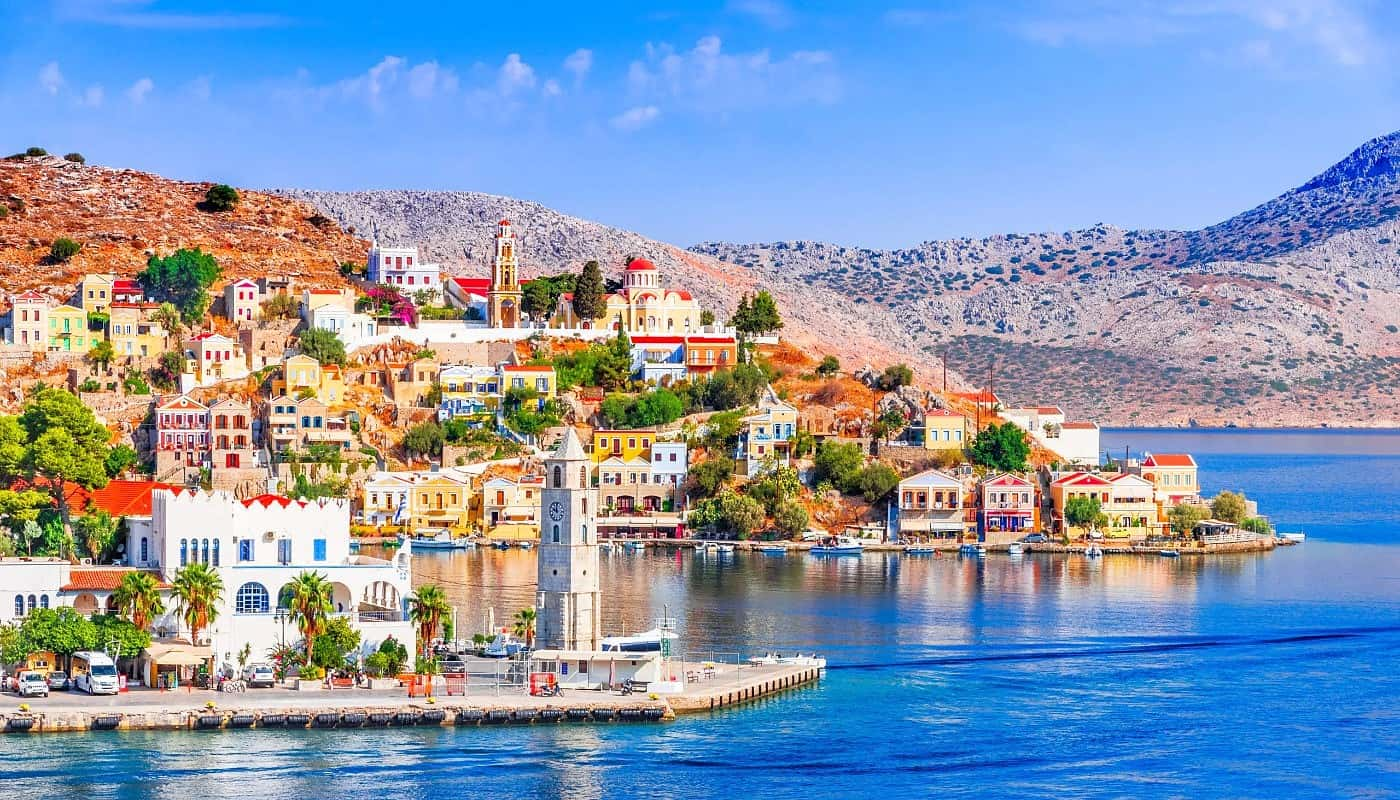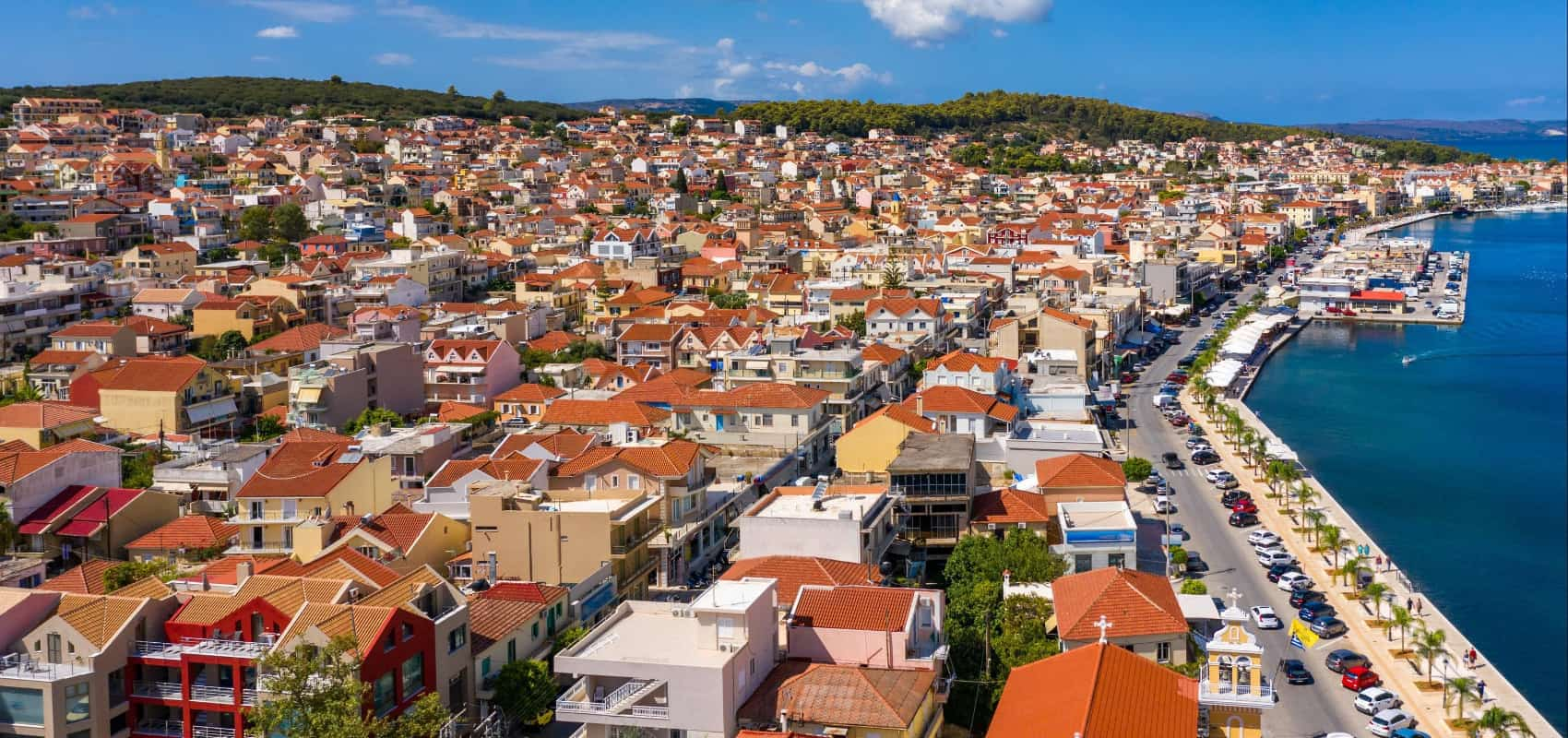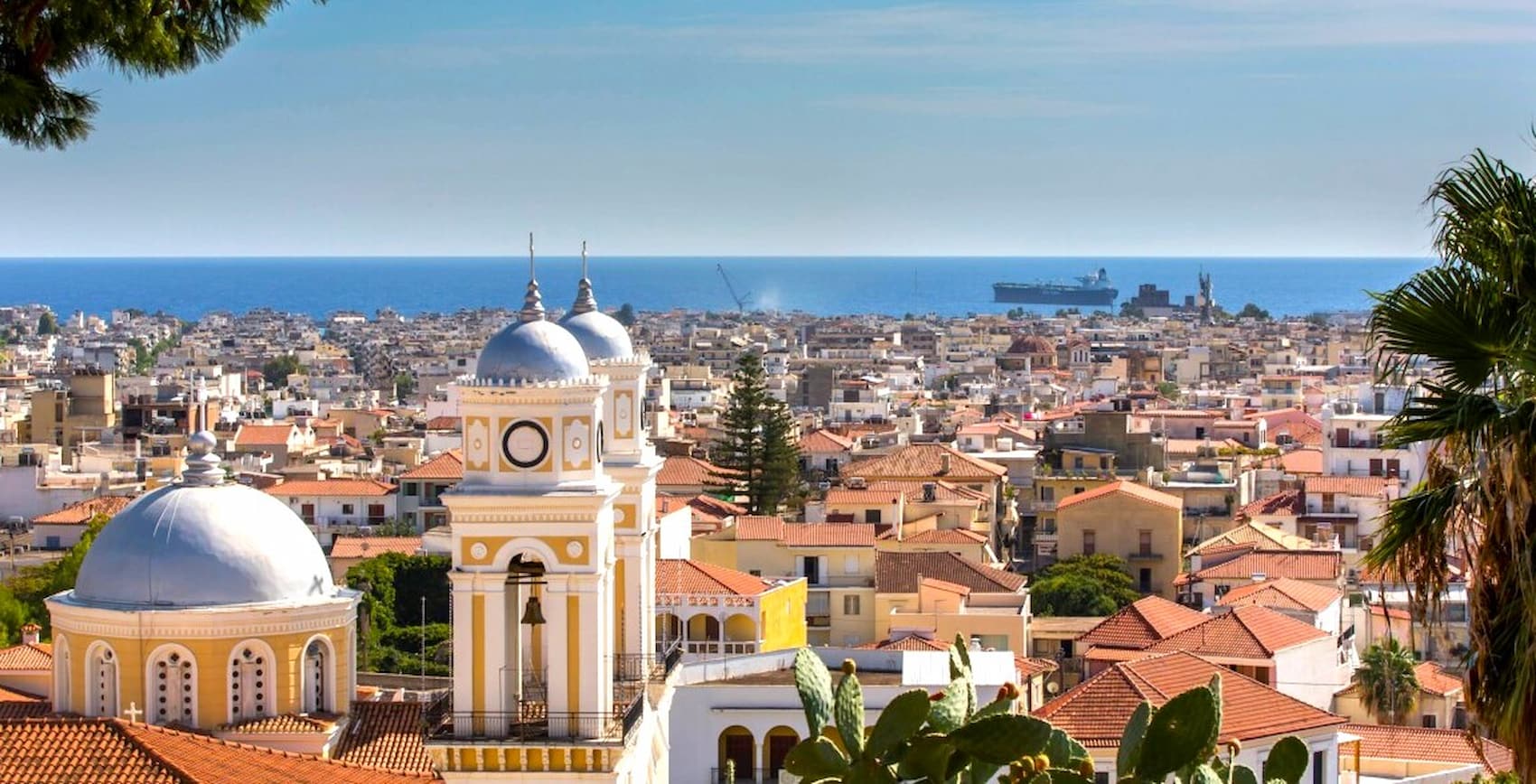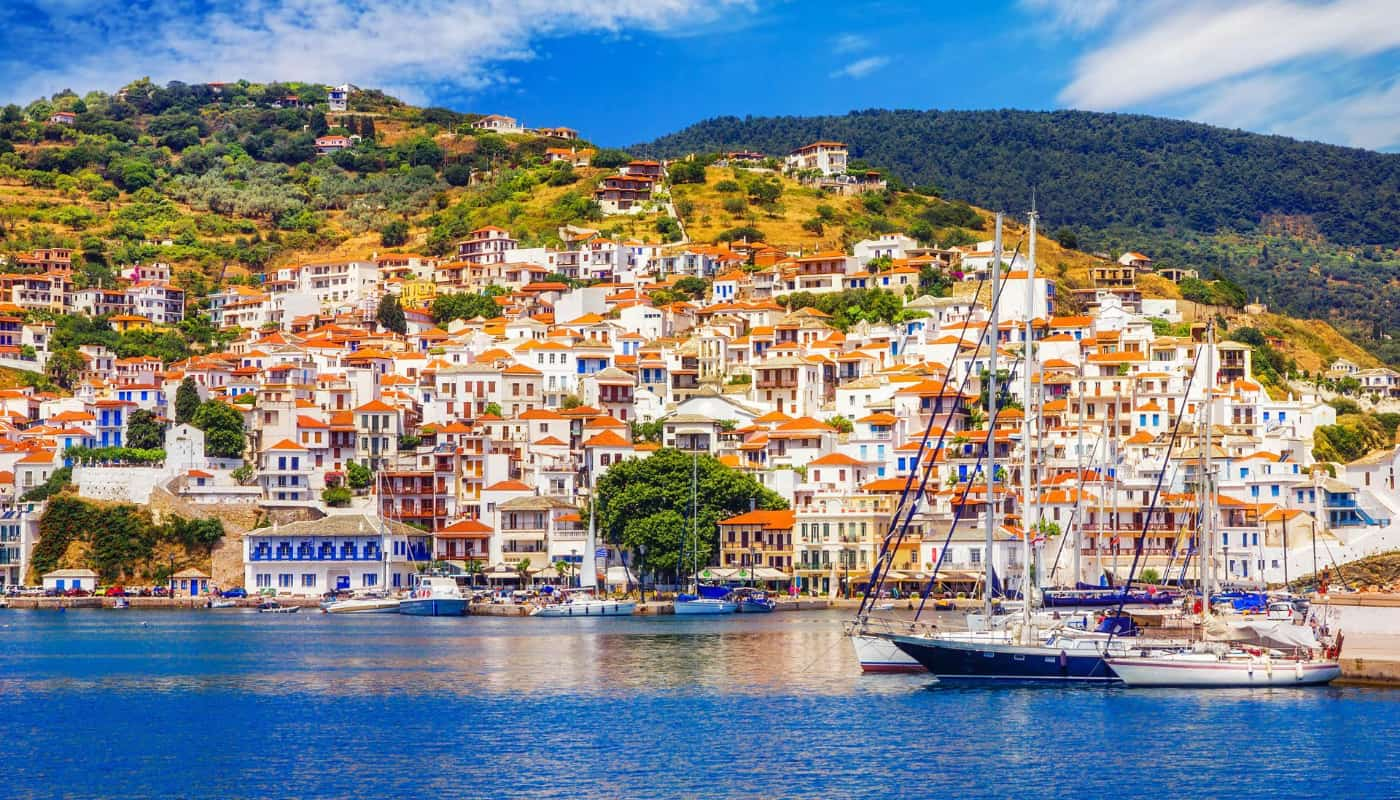Aegina is perhaps one of Greece’s most charming islands, located just an hour’s ferry ride from Athens. Perfect for a one-day cruise or a longer stay, the island offers a mix of history, nature, and local flavors that will captivate any traveler.
Explore the two footpaths of Aegina, such as those around Mount Hellanion or the ancient olive grove, where you’ll marvel at stunning landscapes and beautifully preserved village. For history enthusiasts, visit the governor’s house where Ioannis Kapodistrias was Greece’s first leader after independence, or the Temple of Aphaia, part of Greece’s Sacred Triangle.
🏠 Best Hotels in Aegina
- 💎 Luxury Hotel: Apollo Resort
- ✨ 5-Star: Oikiaegina
- 🏨 4-Star: Villa Alexandra
- 🛏️ 3-Star: Vagia Traditional, Aegina Island
- 💸 Cheap: Hotel Karyatides
- 🏢 Apartament: Voula Apartments
- 👨👩👧👦 For Families: Apollo Resort
- 🏩 For Couples: Rachel Hotel
💁 Best Guided Tours
- Aegina Private City Walking Tour from € 42 (⭐4.9/5)
- Aegina's Island Highlights from € 53 (⭐ 4.9/5)
- Aegina Guided Discovery Tour from € 154 (⭐ 4.9/5)
- Aegina Palaiochora Private Tour from € 46 (⭐ 5.0/5)
Best Things to Do in Aegina, Greece
1. Temple of Aphaia
Archaeological Site. Standing atop a pine-covered hill, the Temple of Aphaia took my breath away with its perfect proportions and commanding views over the Saronic Gulf. This 5th-century BCE Doric temple forms part of a sacred triangle with the Parthenon in Athens and the Temple of Poseidon at Sounion. The energy here is palpable – I felt like I was touching history itself as I explored this well-preserved ancient site with its interpretive boards and small museum.
Photography Spots. The best photos come from the eastern side in the late afternoon when golden light bathes the ancient columns. I spent nearly an hour just watching the changing shadows play across the weathered stone, capturing the tranquil surroundings that make this site so special.
Budget Tip: Visit on the first Sunday of each month from November through March when entry is free. Regular admission is 6€ for adults, with discounts available for students.
Insider Tip: Bring water and wear comfortable shoes – the site has minimal facilities and uneven terrain. The panoramic coastal views make the climb worthwhile, so allow at least 1-2 hours to fully appreciate this historical treasure.
Must-see elements:
- The well-preserved Doric columns dating from 500-490 BC
- The small on-site museum with artifacts from the temple
- The sacred triangle connection with Athens and Sounion
- Panoramic views of the Saronic Gulf
- Ancient altar remains in front of the temple
⭐ Best Activities
- Private Tour in Aegina, Temple of Aphaia and Pistachio Delights – Enjoy a private day trip from Athens to Aegina Island where you’ll explore the magnificent temple and sample local pistachio delicacies with hotel pickup included.
2. Aegina Town
Waterfront Charm. Strolling along Aegina Town’s colorful harbor, I watched fishermen mend nets while cats lounged in patches of sunshine. The neoclassical buildings with their pastel facades create a photographer’s paradise, especially during the golden hour. The bustling waterfront is lined with charming cafes, restaurants, and traditional taverns where you can enjoy the laid-back atmosphere.
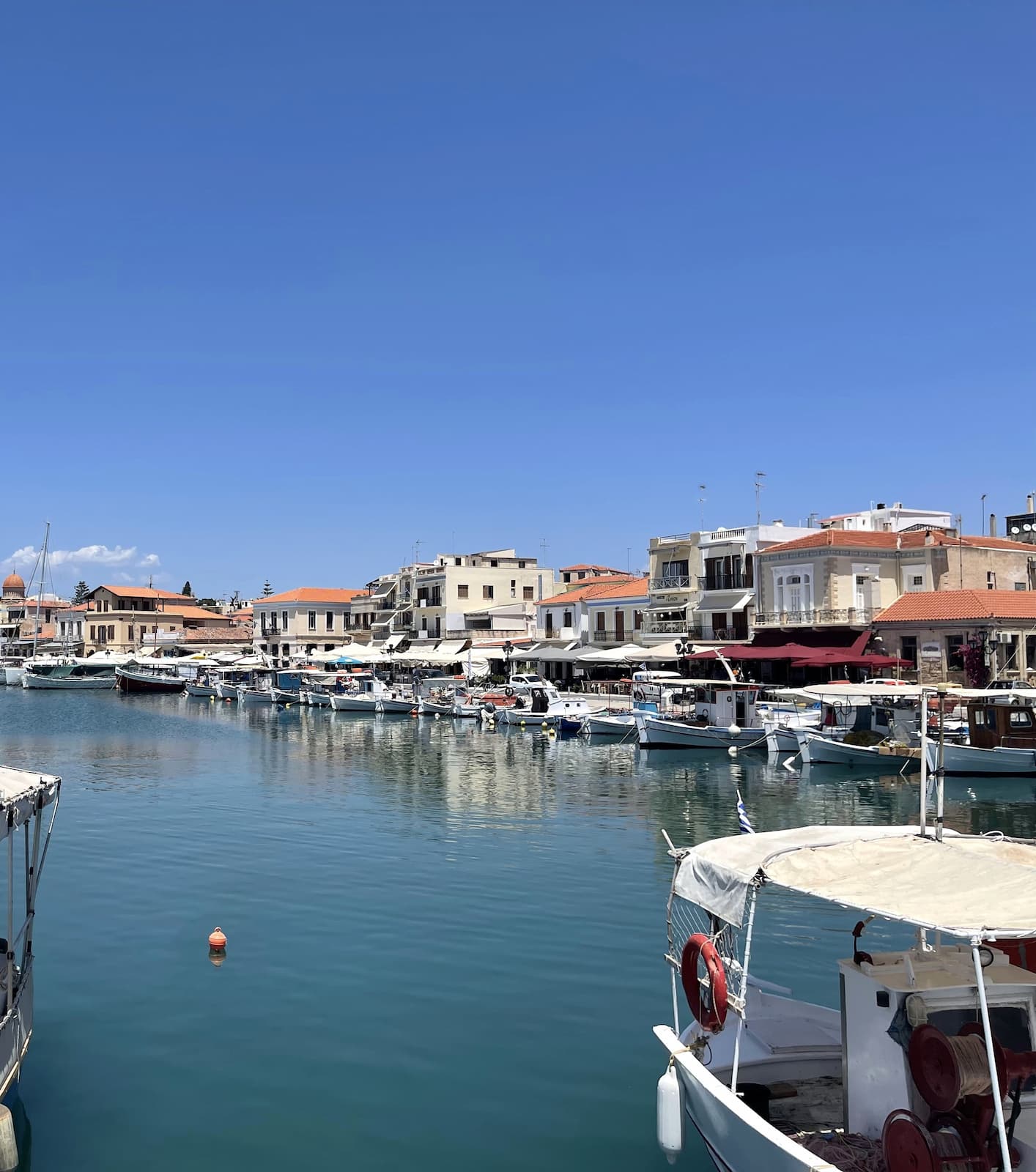
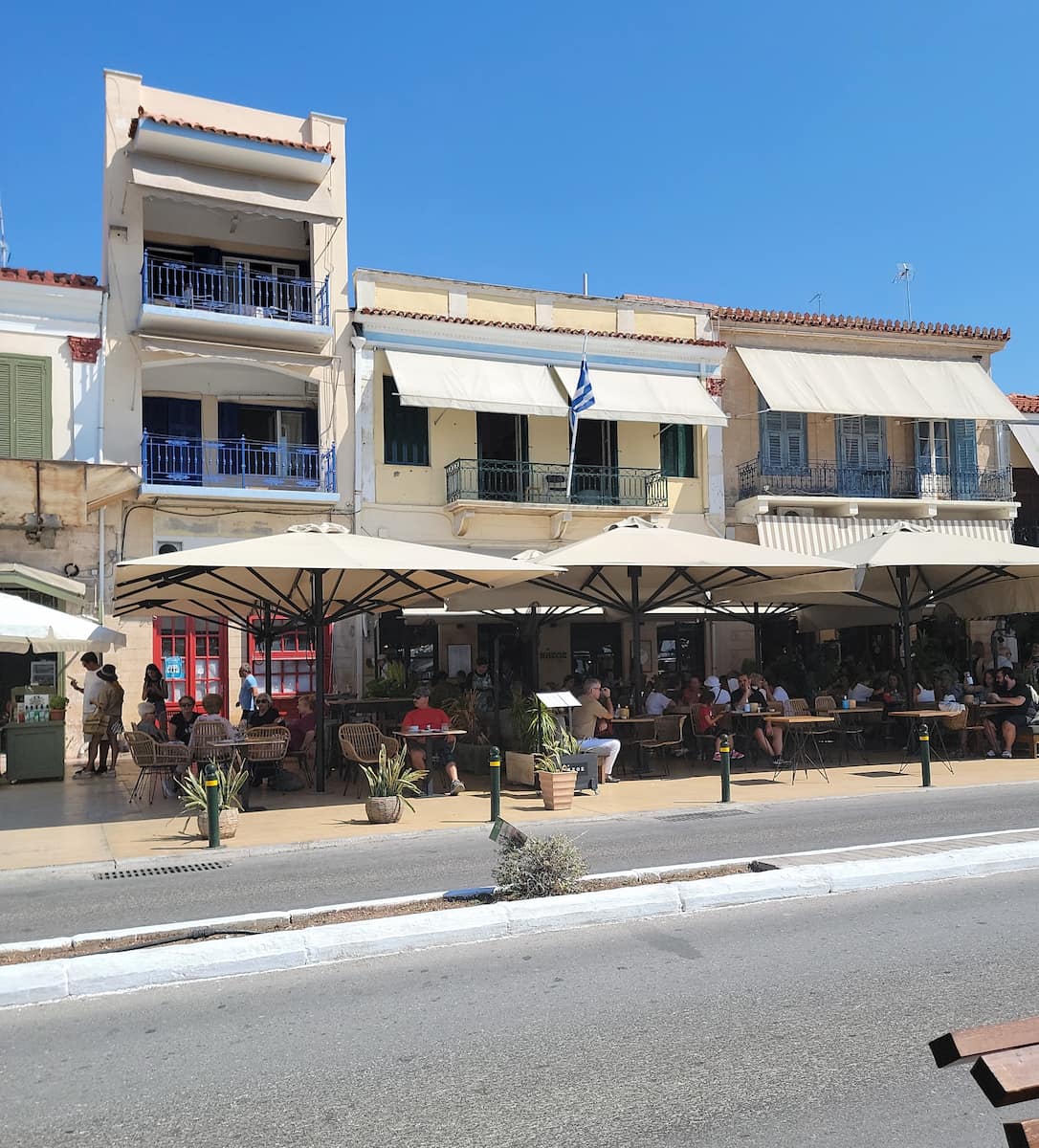

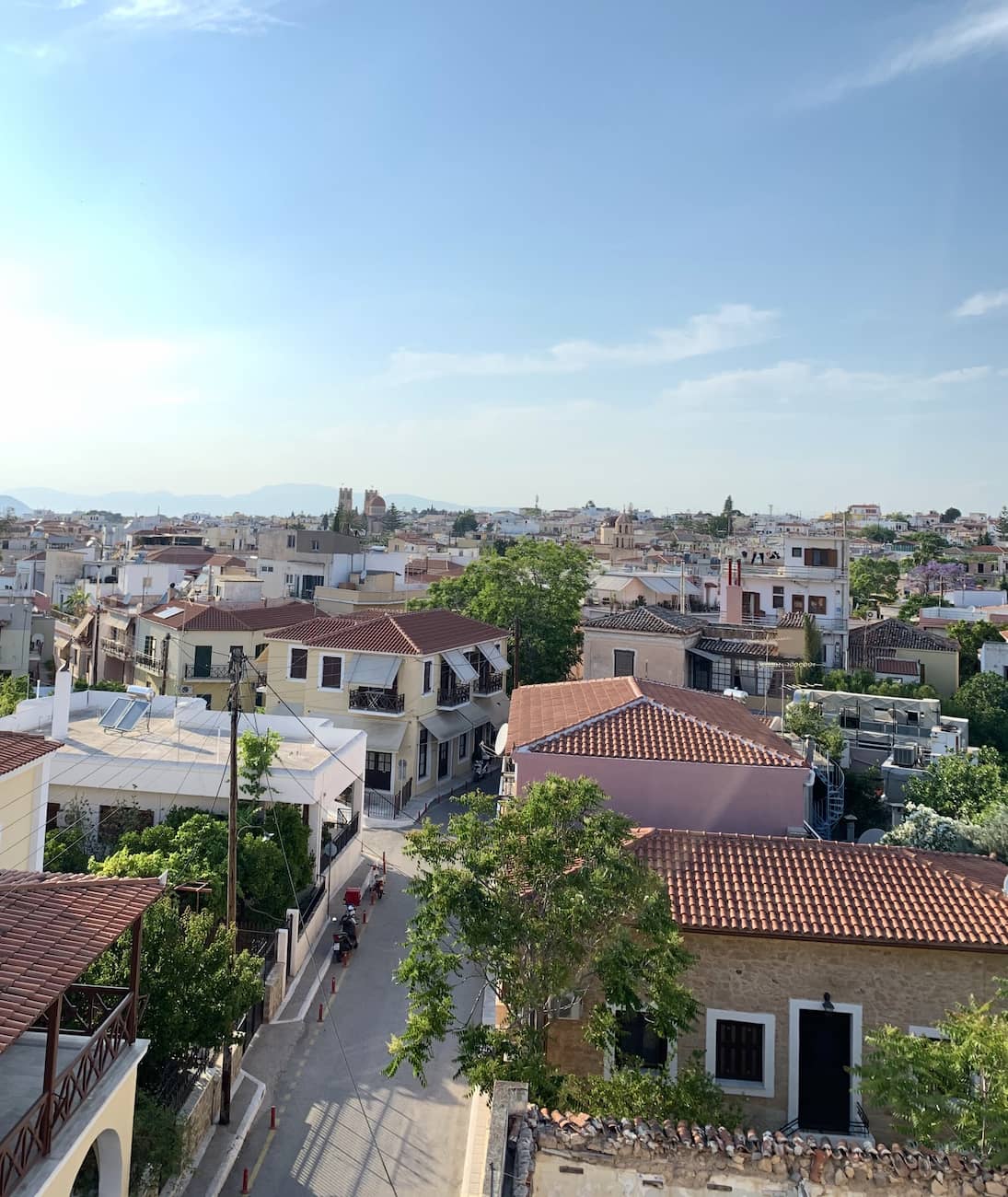
Market Discoveries. The local market near the port of Aegina bursts with pistachio products, fresh seafood, and handmade crafts. I picked up a bag of freshly roasted pistachios (5€/$5.50) that were still warm to the touch – incomparable to anything I’ve tasted elsewhere. The vibrant market streets are filled with shops selling locally produced goods, including fresh fruits, vegetables, honey, and handmade crafts.
Insider Tips: Many visitors rush through Aegina Town on their way to beaches or temples. Take time to wander the back streets where you’ll find hidden squares, local cafés, and authentic Greek life. Don’t miss the Tower of Markellos, a distinctive pink building that once served as the seat of government when Aegina was briefly the capital of modern Greece.
Highlights of Aegina Town:
- Kapodistrian buildings from the early 19th century
- The Archaeological Museum and Historical & Folklore Museum
- Temple of Apollo (Kolona) with its single standing column
- Local pistachio shops and traditional markets
⭐ Best Activities
- Aegina Town Walking Tour – Discover the charming streets and hidden gems of Aegina Town with a knowledgeable local guide who will share fascinating stories about the island’s history and culture.
3. Paleochora Byzantine Village
Historical Hike. Climbing the rocky path to Paleochora, I discovered what locals call the “Mystras of Aegina” – a hillside dotted with 38 Byzantine churches and chapels. The abandoned settlement dates from the 9th century when islanders retreated inland to escape pirate raids and remained the capital of the island until 1826. They say Paleochora has a special energy, and you can really feel it as you wander among the churches that remain of the 366 once standing here.
Spiritual Experience. Inside the tiny churches, faded frescoes tell biblical stories through centuries-old pigments. The silence here is profound, broken only by the occasional goat bell or birdsong. Don’t forget to climb to the top of the hill, where there are traces of the castle built by the Venetians in 1654.
Insider Tip: Visit early morning or late afternoon to avoid the midday heat. The hike takes about 30 minutes from the main road, and there’s no water available on site. You’ll find wells, cisterns, and examples of the ‘souvales’ (water collection tanks) along with incredible views.
What to see in Paleochora:
- 38 surviving Byzantine churches with ancient frescoes
- Venetian castle ruins at the hilltop
- Traditional water collection systems (souvales)
- Panoramic views of the surrounding countryside
- Historical remains from the 9th century settlement
- Evidence of the island’s medieval capital
4. Agios Nektarios Monastery
Religious Significance. The impressive Agios Nektarios Monastery honors Greece’s most recently declared saint. Walking through its grand courtyard, I was struck by the peaceful atmosphere and the devotion of pilgrims who come to touch the saint’s silver tomb. This serene monastery is surrounded by lush gardens and panoramic views, making it ideal for quiet reflection and spiritual healing.
Architectural Beauty. The monastery’s Byzantine-style church features stunning mosaics and a soaring dome. Even as a non-religious visitor, I found the craftsmanship awe-inspiring. It’s home to the largest church in the Balkans, making it an important religious site for Orthodox Christians.
Budget Tip: Entry is free, but modest dress is required – shoulders and knees must be covered. The monastery provides wrap skirts and shawls if needed, and visiting hours are 7:00 AM to 7:00 PM in summer and 7:00 AM to 5:00 PM in winter.
Features of Agios Nektarios Monastery:
- Saint Nektarios’ tomb and relics
- The largest church in the Balkans
- Beautiful Byzantine mosaics and architecture
- Peaceful gardens and grounds
- The saint’s preserved living quarters
- Holy water source believed to have healing properties
- Spectacular views of the surrounding countryside
⭐ Best Activities
- Aegina Island: Private Day Getaway to Sapphire Waters and Fishing Villages – Escape Athens for a day to explore Aegina’s beautiful beaches, traditional fishing villages, and crystal-clear waters on this private guided tour.
5. Pistachios Tasting and Shopping
Local Delicacy. Aegina’s pistachios are famous throughout Greece for their intense flavor. At Moraitís Pistachio Shop in Aegina Town, I sampled everything from traditional roasted nuts to innovative pistachio butter, chocolate-covered treats, and even pistachio liqueur. The island is renowned for its pistachio production, and you’ll find these green treasures incorporated into various local products.
Culinary Adventure. The pistachio ice cream at Mourtzis on the waterfront (4€/$4.40 per scoop) was a revelation – creamy, nutty, and not too sweet. I paired it with a strong Greek coffee for the perfect afternoon pick-me-up. Don’t miss the annual Fistiki Fest in mid-September, when the whole waterfront transforms into a celebration of this local delicacy.
Common Tourist Mistake: Don’t buy pistachios from the first shop you see. Prices and quality vary, so compare a few places before making your purchase. The best shops often offer free samples so you can taste before buying.
Pistachio products to try in Aegina:
- Freshly roasted pistachios
- Pistachio ice cream
- Pistachio butter
- Pistachio-based sweets and pastries
- Pistachio liqueur
- Pistachio pesto
- Chocolate-covered pistachios
- Pistachio-infused honey
⭐ Best Activities
- Aegina Organic Pistachio Orchard Tour with Factory Visit – Learn about Aegina’s famous pistachios with a guided tour of an organic orchard and processing facility, complete with tastings of these delicious local treats.
6. Ancient Olive Grove of Eleonas
Living History. Walking among the gnarled trunks of thousand-year-old olive trees in Eleonas was like stepping into another time. Some of these trees have been producing olives since Byzantine times, their massive trunks twisted into sculptural forms by centuries of growth. This olive grove even inspired the fashion house Hermès, which chose it as a backdrop for a photoshoot.
Sensory Experience. The silver-green leaves rustled in the breeze, creating a soothing soundtrack as I explored the grove. In autumn, the ground beneath the trees is carpeted with tiny olives ready for harvest, and the dazzling light that bathes Aegina creates perfect conditions for photography.
Insider Tip: Visit with a local guide who can point out the oldest trees and explain traditional harvesting methods. Giorgos at Aegina Olive Tours (25€/$27.50 per person) offers excellent two-hour walks through this living museum of agricultural history.
Highlights:
- Millennium-old olive trees with sculptural trunks
- Traditional olive harvesting techniques
- Peaceful walking paths through the grove
- Photogenic landscapes in golden hour light
- Connection to Byzantine agricultural history
- Hermès photoshoot location
- Seasonal olive harvesting (October-November)
7. Perdika Village
Fishing Tradition. The charming fishing village of Perdika captured my heart with its whitewashed houses and blue-shuttered windows. Local fishermen still mend their nets along the harbor, where cats wait hopefully for scraps. This traditional settlement on the southwest coast of Aegina offers a perfect escape from the busier parts of the island.
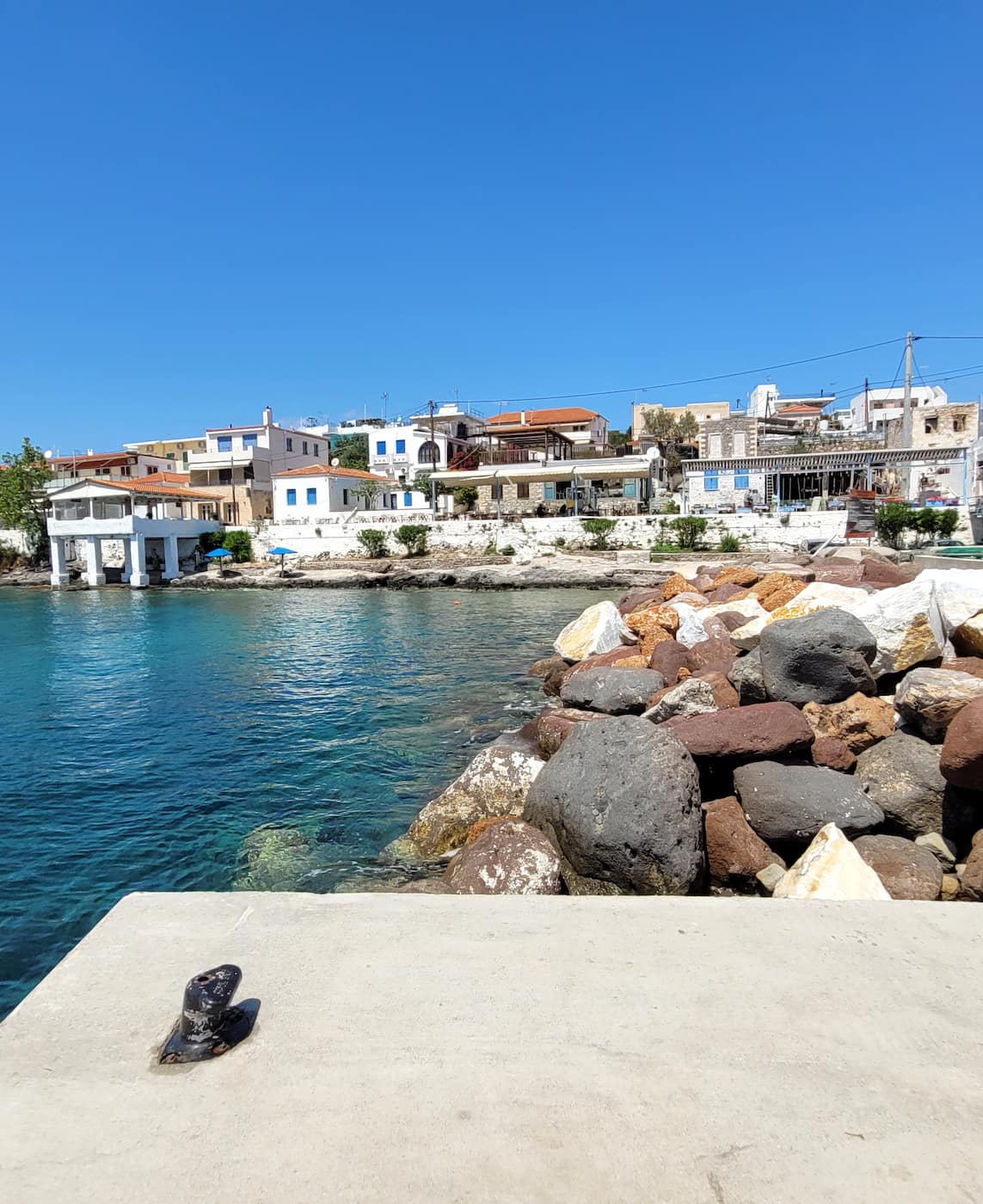
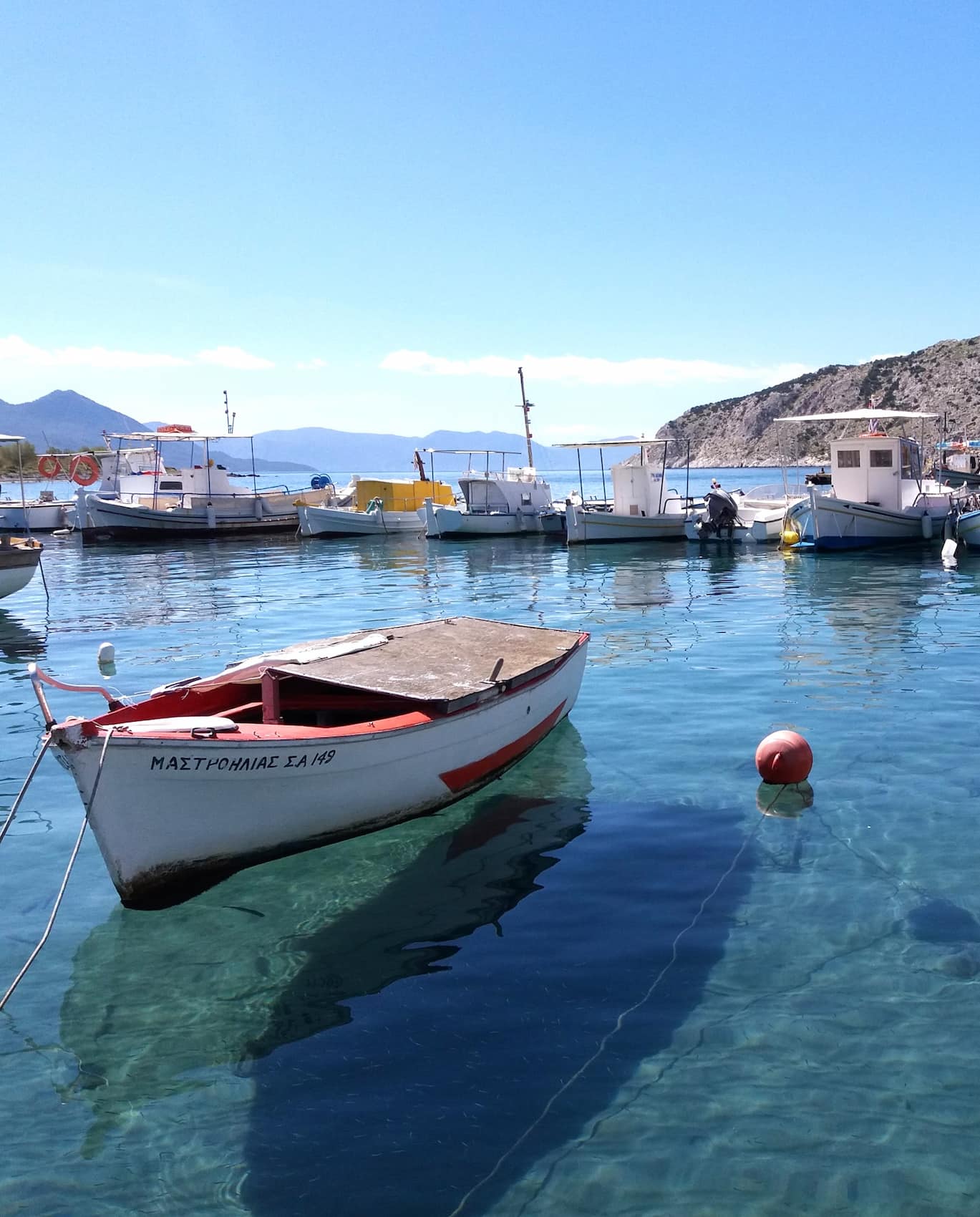
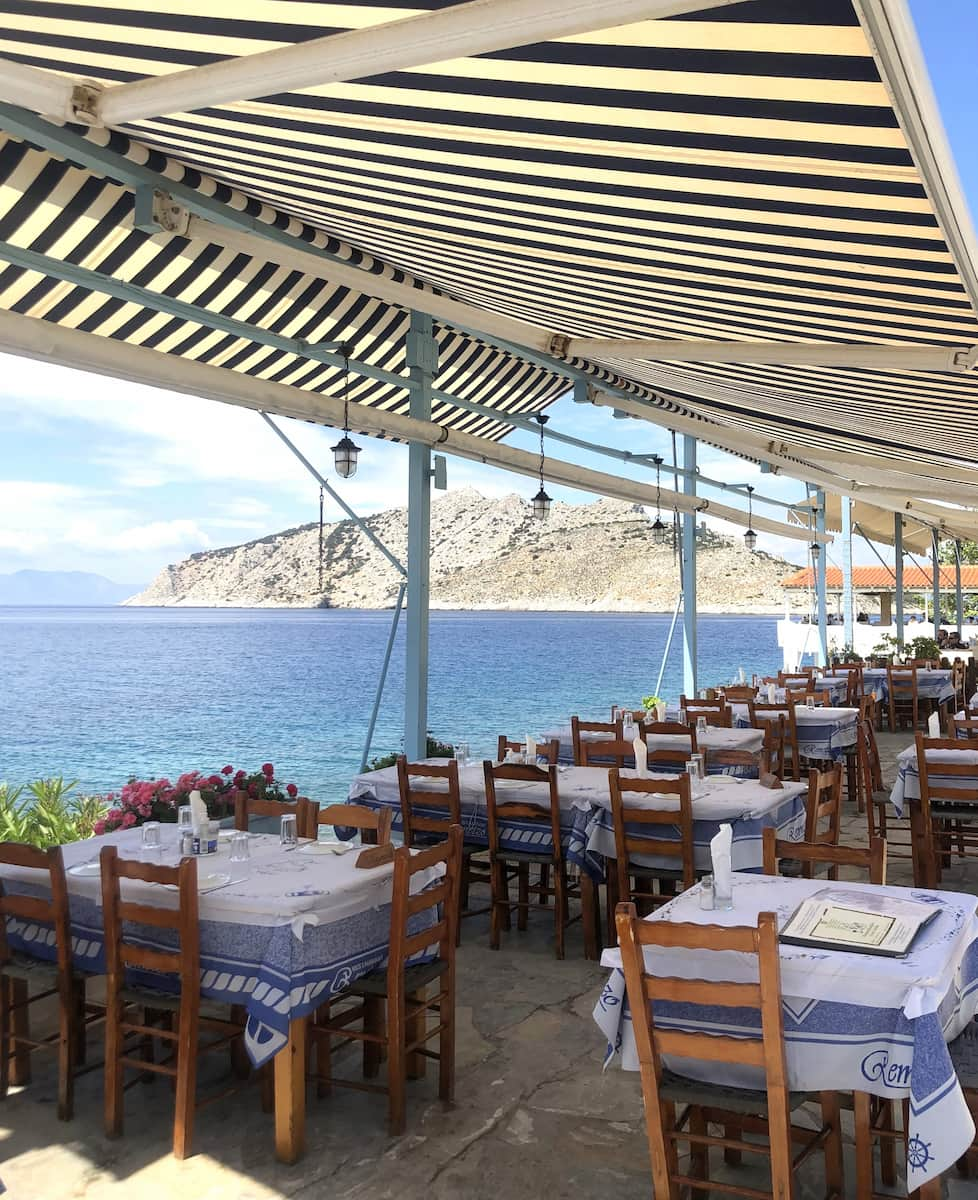
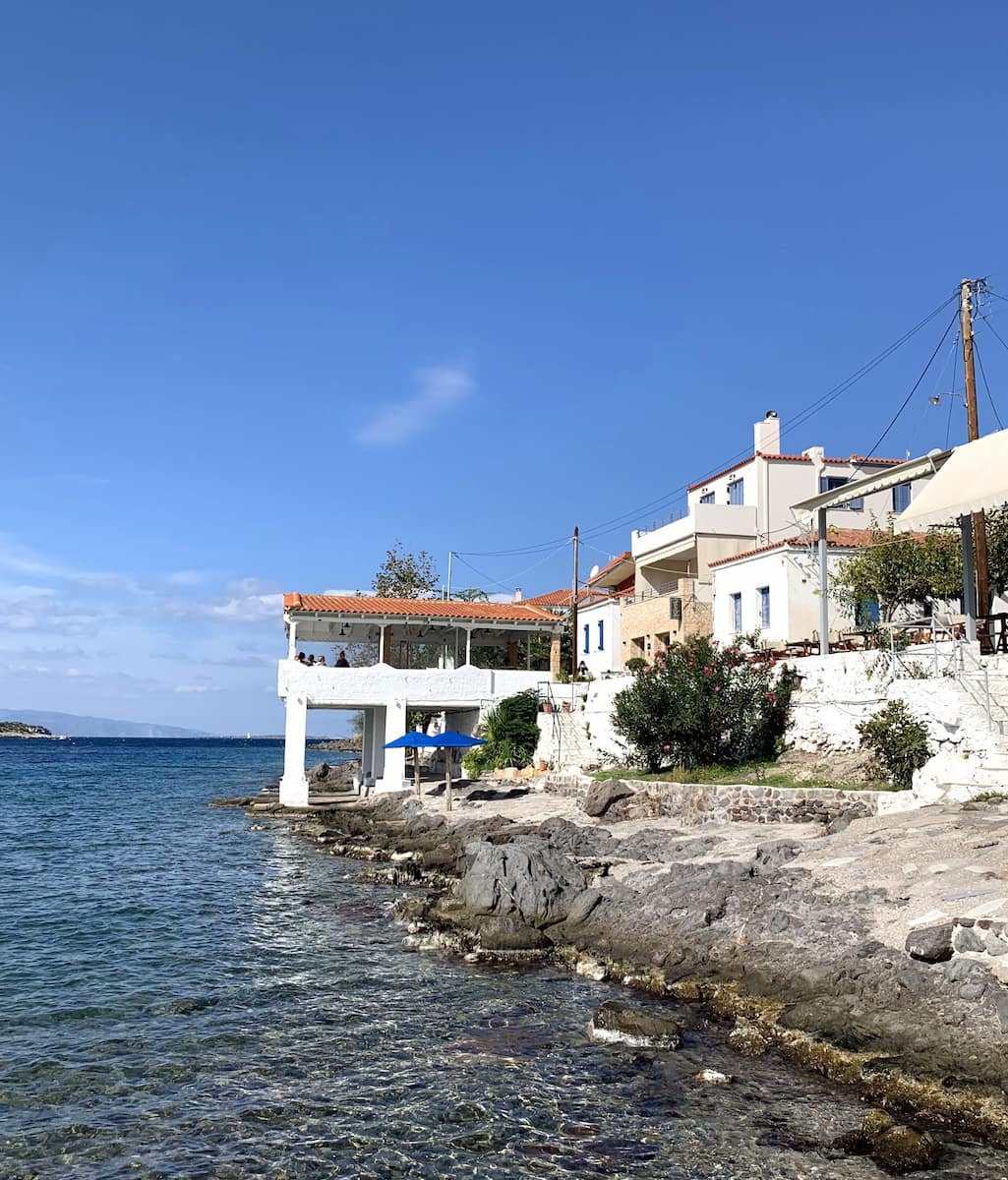
Seafood Heaven. I enjoyed the freshest fish at Nontas taverna, where the catch of the day is displayed on ice for you to select. My grilled sea bream (22€/$24) was simply prepared with olive oil, lemon, and oregano – perfection on a plate. Perdika is also the departure point for boats to uninhabited Moni Island, a quick 10-minute journey to crystal-clear waters.
Budget Tip: Order mezedes (small plates) to share instead of main courses. You’ll taste more dishes and spend less while enjoying the authentic flavors of this fishing village.
What to do in Perdika:
- Watch fishermen at work in the picturesque harbor
- Dine at authentic seafood tavernas
- Take a boat to Moni Island (10€ round trip)
- Enjoy sunset views over the Saronic Gulf
- Explore the narrow streets with traditional architecture
- Photograph the blue and white buildings
- Visit the small church overlooking the harbor
8. Temple of Apollo (Kolona)
Historical Significance. The Temple of Apollo, also known as Kolona, is another must-see for history buffs. Although only one column remains standing, its importance as a religious and cultural center during ancient times cannot be overstated. The site also houses an Archaeological Museum, which I found incredibly informative.
Museum Highlights. Inside the museum, I saw artifacts ranging from pottery to statues that date back thousands of years. It’s small but packed with treasures that help you understand Aegina’s role in ancient Greek civilization.
| Entry Fee (Museum + Site) | Cost (€) | Cost (USD) | Best Time to Visit |
|---|---|---|---|
| Adults | 4€ | $4.40 | Early morning |
| Students | Free | Free | Anytime |
Common Tourist Mistake: Many visitors skip the museum after seeing the column – don’t! It’s worth spending an extra 30 minutes here to dive deeper into Aegina’s history.
Things to Do in Aegina with Kids
1. Monastery of the Holy Trinity of Aegina
Spiritual Significance. Standing on the hill of Xantos, just 6 kilometers from Aegina Town, I found myself deeply moved by the Holy Trinity Monastery. This sacred place, where Saint Nektarios lived for 13 years until his death in 1920, radiates a peaceful energy that’s almost tangible.
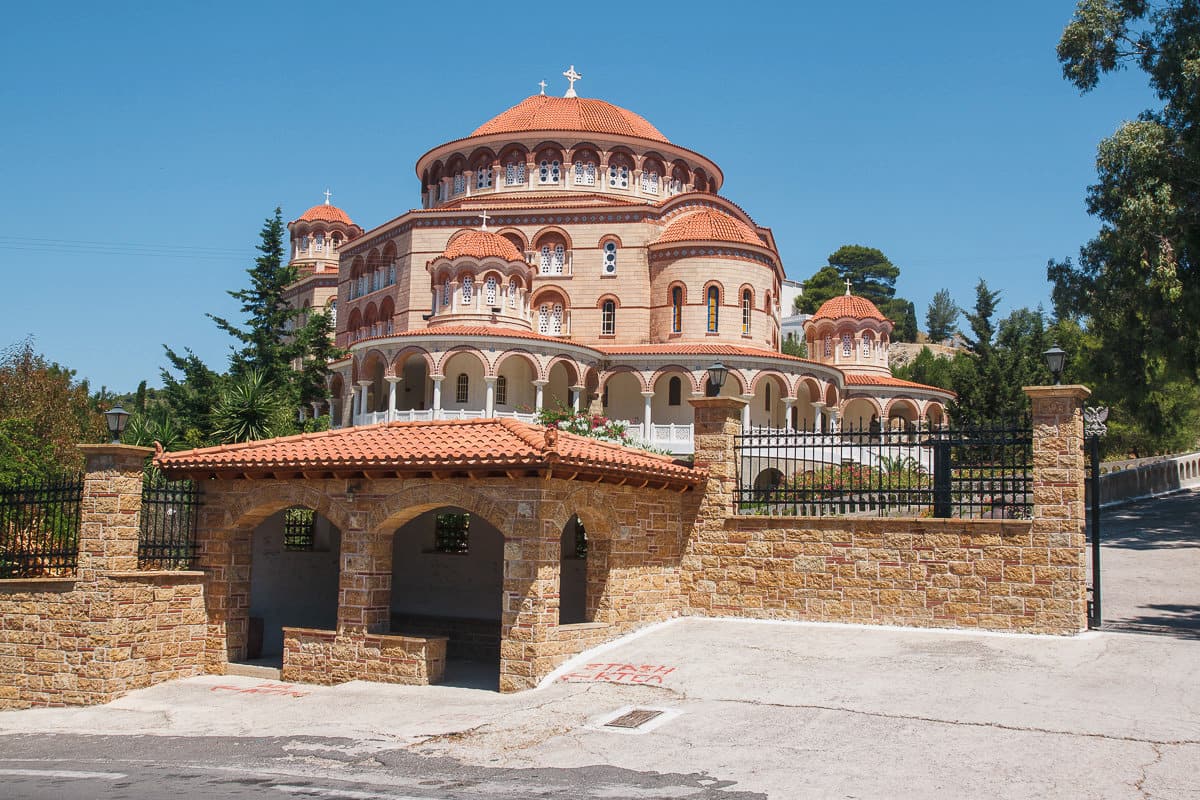
Historical Connection. What many visitors don’t realize is that this site has ancient roots. During the Byzantine era, another monastery dedicated to the Life Giving Spring stood here, where Saint Athanasia once led an ascetic life. It was these abandoned ruins that Saint Nektarios discovered and began rebuilding in 1904, establishing the monastery we see today.
Budget Tip: The monastery provides free head coverings and wrap skirts for women who arrive unprepared, but bringing your own scarf saves time during busy periods.
Saint’s Quarters. The most moving part of my visit was seeing the humble room where Saint Nektarios once lived. Preserved in its original condition, this small cell contains his simple belongings – a stark contrast to the grandeur of the church below.
2. Family-Friendly Beaches
Safe Swimming. Agia Marina Beach quickly became our family favorite with its shallow, gently sloping shoreline. The water stays knee-deep for several meters, making it ideal for younger children. My 5-year-old nephew could play independently while we relaxed nearby.
Beach Facilities. Unlike some Greek beaches that are beautiful but basic, Agia Marina offers everything families need: clean restrooms, changing cabins, and plenty of tavernas serving kid-friendly meals. The beach chairs at Ammos Beach Bar (10€/$11 for two loungers and an umbrella) were comfortable, and the staff brought drinks right to our spots.
| Beach Comparison | Facilities | Water Depth | Food Options |
|---|---|---|---|
| Agia Marina | Full | Very shallow | Many |
| Beaches of Marathonas | Basic | Moderate | Few |
| Souvala | Good | Gradual | Several |
Common Tourist Mistake: Many families head straight to Aegina Town’s beach, which can be crowded and less child-friendly. The short bus ride to Agia Marina (2€/$2.20 per person) is worth it for the superior swimming conditions.
3. Aegina Wildlife Hospital
Animal Encounters. The Aegina Wildlife Hospital was an unexpected highlight of our family trip. This rescue center cares for injured birds and animals from across Greece. My nephew was moved to tears watching volunteers tend to a wounded falcon, while my niece couldn’t stop talking about the baby turtles being rehabilitated.
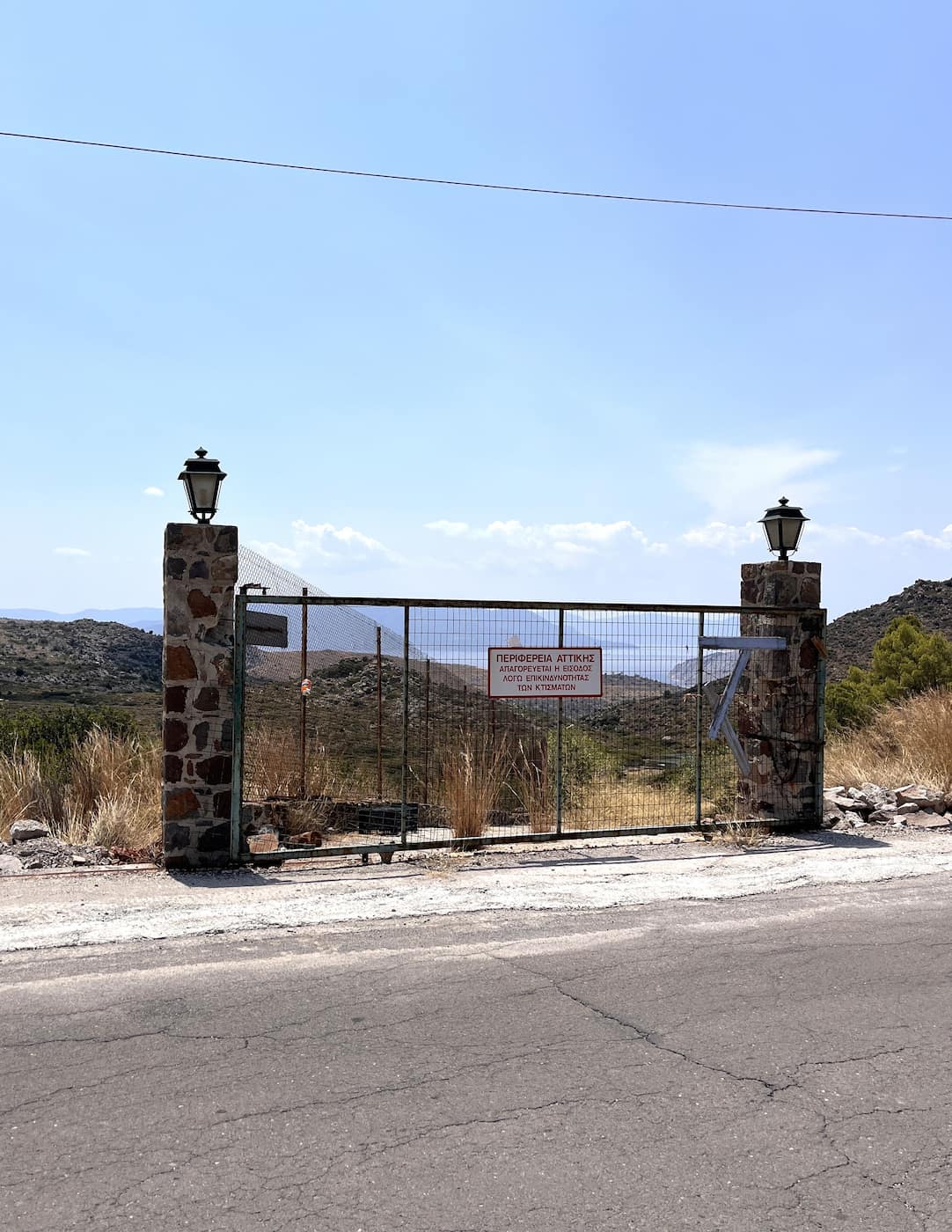
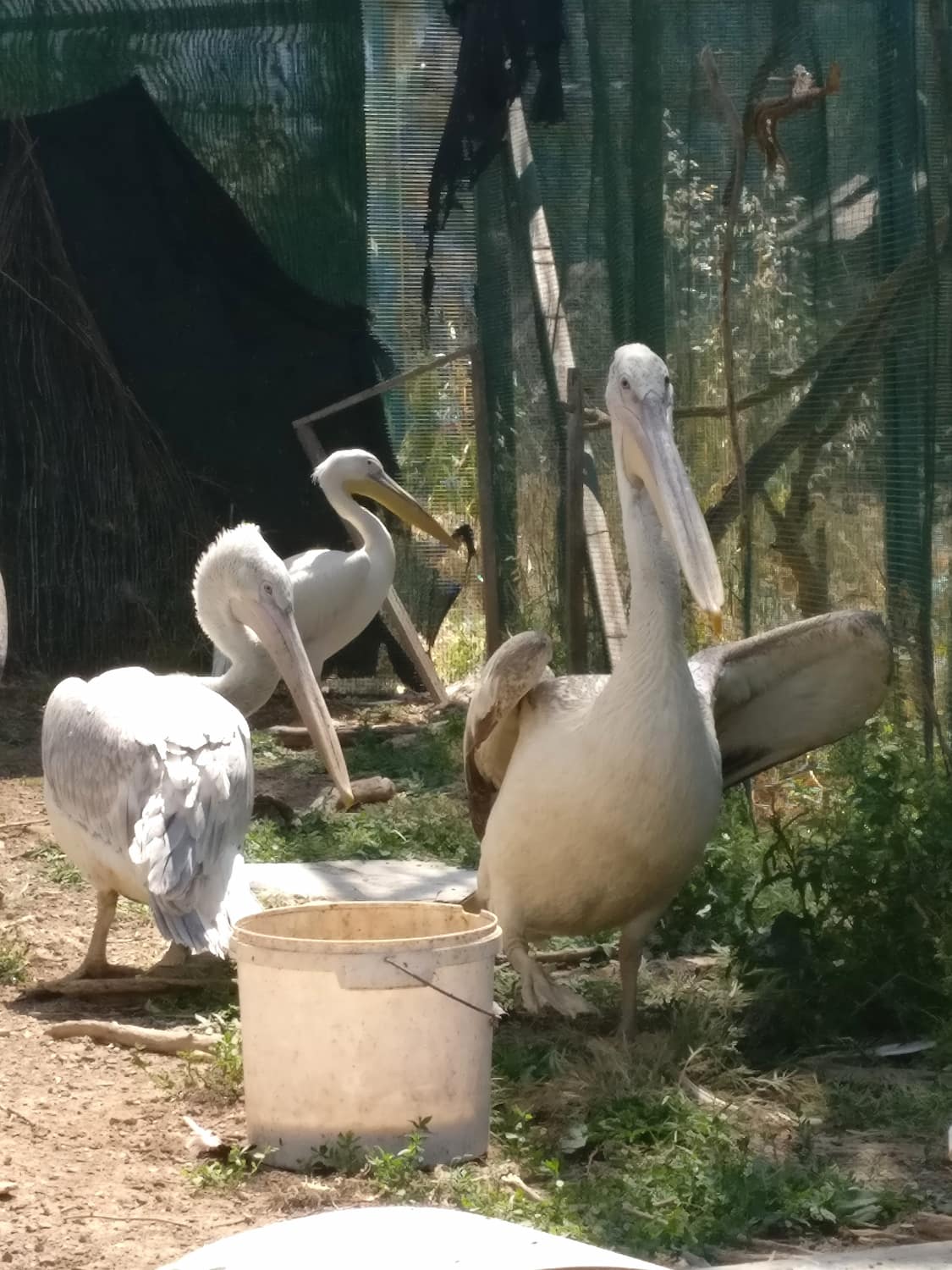
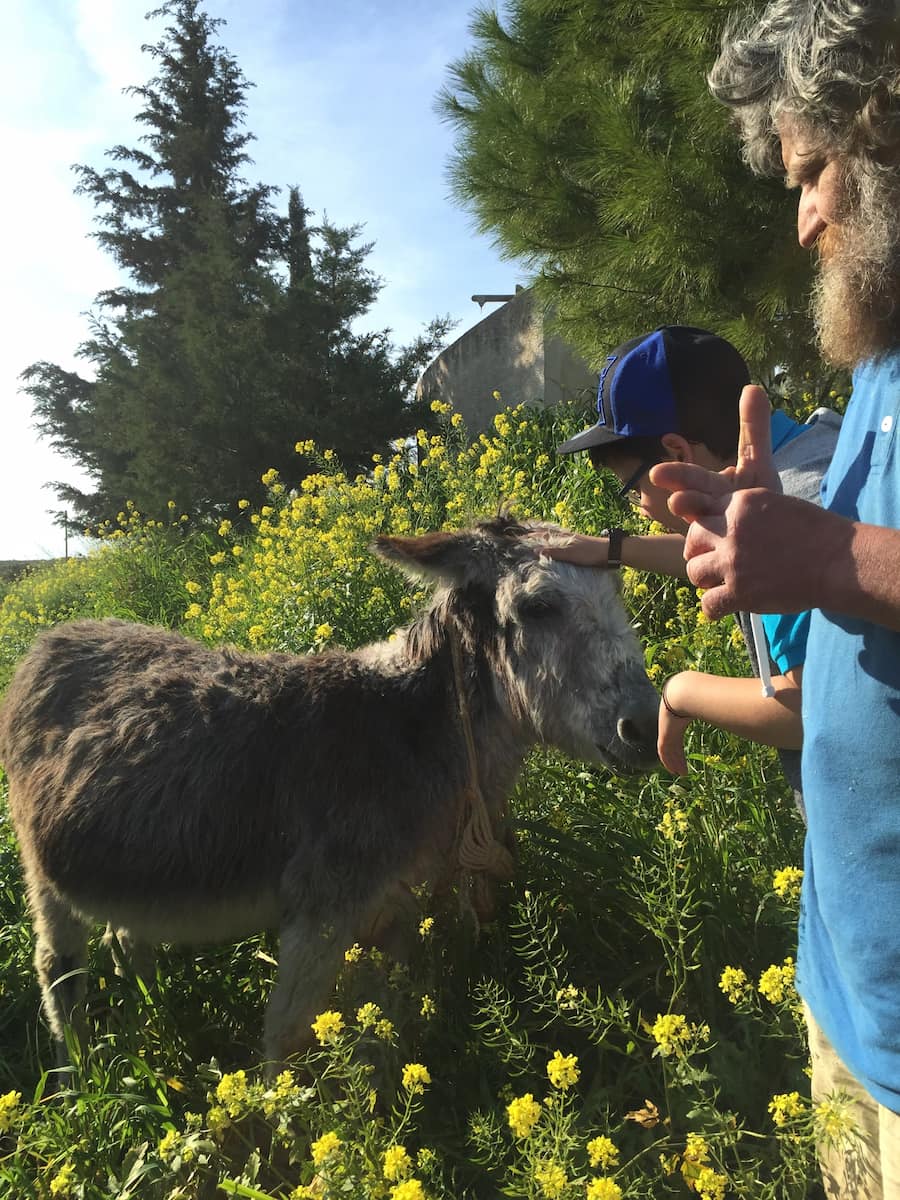
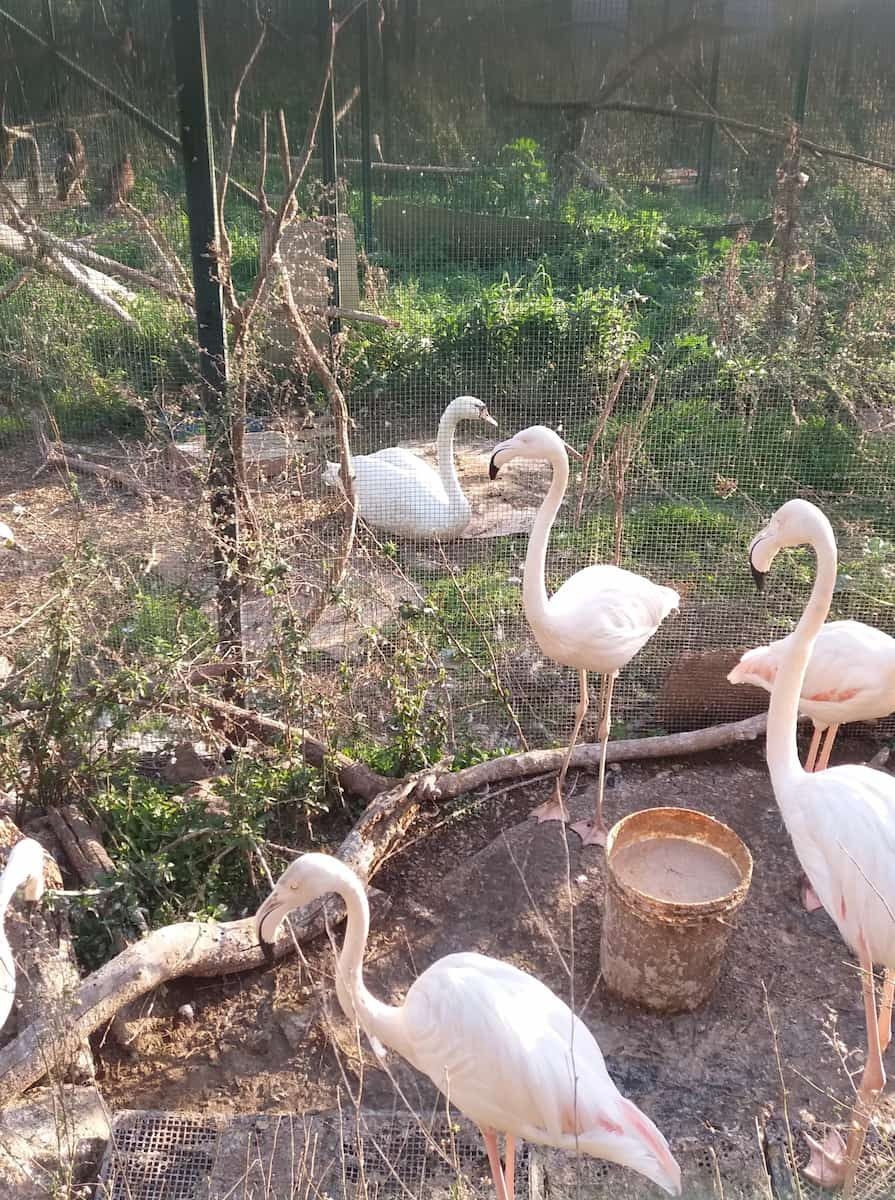
Educational Value. The staff took time to explain their conservation work in simple terms the children could understand. They even got to help prepare food for some of the animals – an experience that taught them about wildlife protection in a hands-on way.
Budget Tip: The hospital runs on donations, but they won’t turn anyone away. If you’re traveling on a tight budget, offer to volunteer for an hour instead of making a monetary contribution.
4. Outdoor Cinema
Evening Entertainment. The open-air cinema in Aegina Town was magical for the whole family. Watching a movie under the stars, with the scent of jasmine in the air, created an enchanting atmosphere unlike any indoor theater. The children were mesmerized by the novelty of it all.
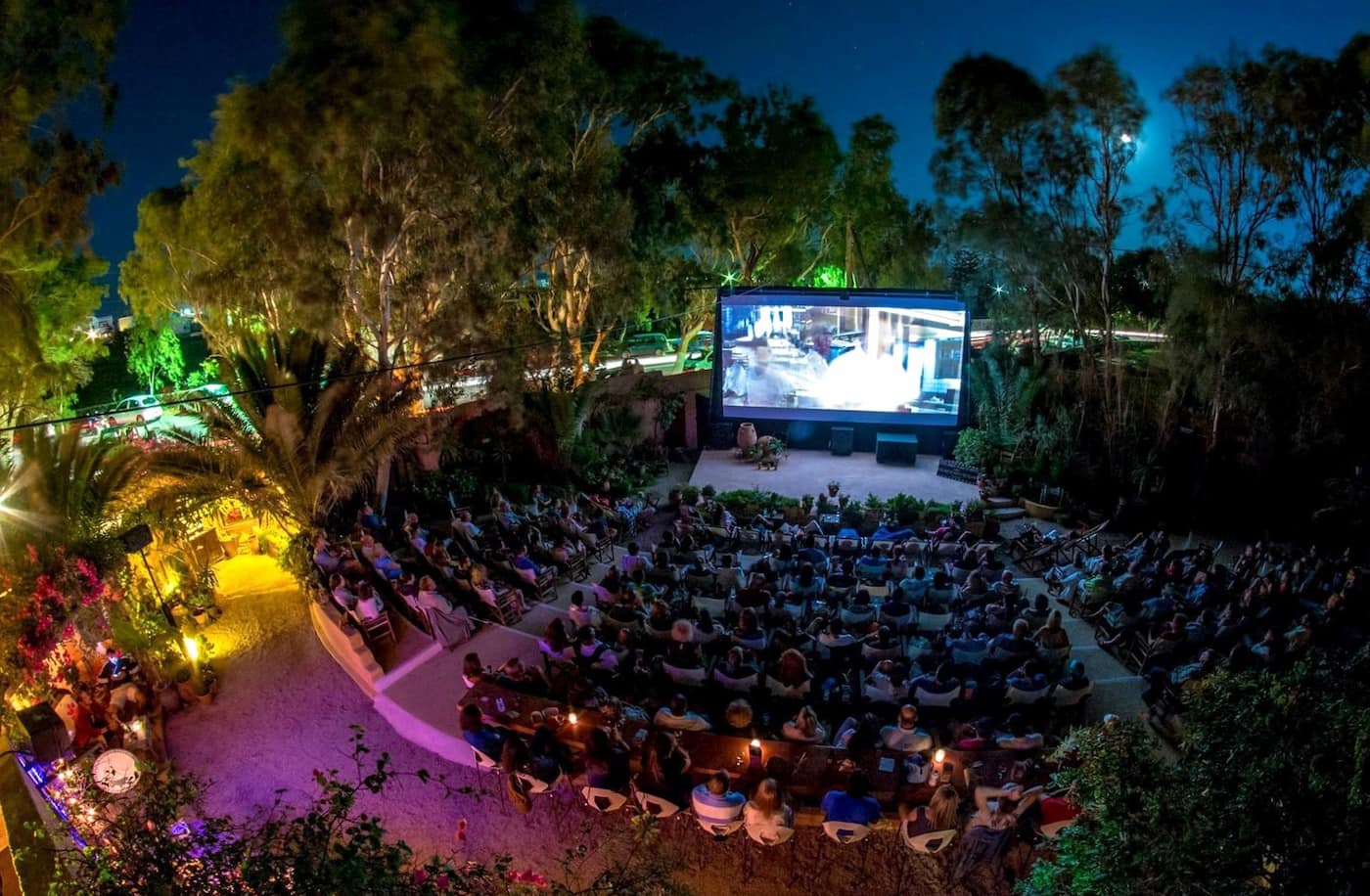
Local Tradition. The Aegina Summer Cinema shows a mix of international films (usually dubbed or subtitled in Greek) and family-friendly options. We caught an animated feature that had both adults and children laughing together – a perfect way to wind down after a day of sightseeing.
Common Tourist Mistake: Many visitors don’t realize the cinema only operates during summer months (June-September) and that screenings typically start at 9PM when it’s fully dark. Check the schedule posted around town or ask at the tourist information office.
Insider Tip: Bring a light sweater or jacket even on warm evenings – the sea breeze can make it surprisingly cool once the sun sets.
5. Tower of Markellos
Venetian Origins. Built during the second Venetian occupation of Aegina (18th century), this impressive structure originally served as a watchtower to protect the harbor. I was fascinated to learn that it was part of a larger fortification system constructed by the Venetians who were anticipating Turkish attacks.
Revolutionary History. The tower gets its name from Spyridon Markellos, a Greek revolutionary and member of the Filiki Eteria (Society of Friends), who purchased and renovated the abandoned building in 1802. Standing in front of this historical edifice, I couldn’t help but imagine the secret meetings and passionate discussions about Greek independence that once took place within these walls.
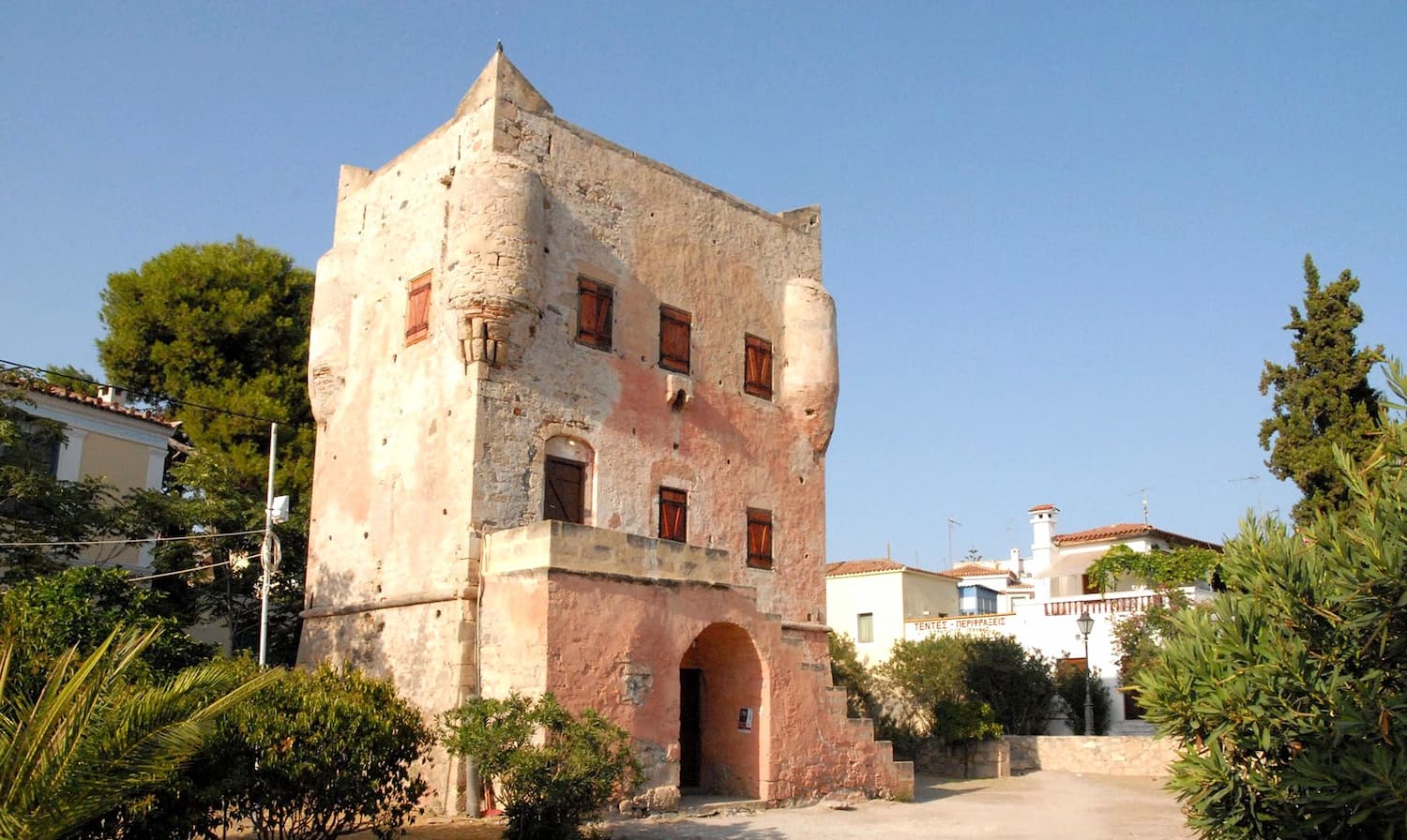
Capital Connection. Perhaps the most intriguing aspect of the Tower of Markellos is its role as the seat of government when Aegina served as Greece’s first capital. From 1826 to 1828, this building housed the temporary government committee before Ioannis Kapodistrias, Greece’s first head of state after independence, moved the capital to Nafplio.
Historical Significance. Standing in the shadow of this tower, I felt connected to a pivotal moment in Greek history. This building witnessed the birth of modern Greece, hosting important figures like G. Koundouriotis, I. Kolletis, and K. Favieros during the revolution. For history enthusiasts, it’s a must-see landmark that tells the story of Greece’s journey to independence.
Free Things to Do in Aegina
1. Hiking the Footpaths of Aegina
Natural Exploration. Discovering Aegina’s network of footpaths was one of my most rewarding experiences on the island. The trails wind through pine forests, olive groves, and rocky hillsides, offering spectacular views at every turn. One morning, I set out early to beat the heat and followed a path from Aegina Town toward Mount Oros, breathing in the scent of wild herbs crushed underfoot.
Wildlife Encounters. Along these trails, I spotted several species of the island’s birdlife – colorful European bee-eaters, majestic buzzards circling overhead, and tiny warblers flitting through the undergrowth. The spring wildflowers created carpets of color that made me stop every few minutes to take photos.
Insider Tip: The best hiking season is from March to May when temperatures are mild and the landscape bursts with wildflowers. Avoid hiking during the midday heat in summer (June-August).
2. Local Churches
Spiritual Journey. Aegina is dotted with beautiful churches that welcome visitors free of charge. I was particularly moved by the peaceful atmosphere inside the small Byzantine churches of Paleochora. Their weathered stone exteriors give way to interiors where faded frescoes tell biblical stories through centuries-old pigments.
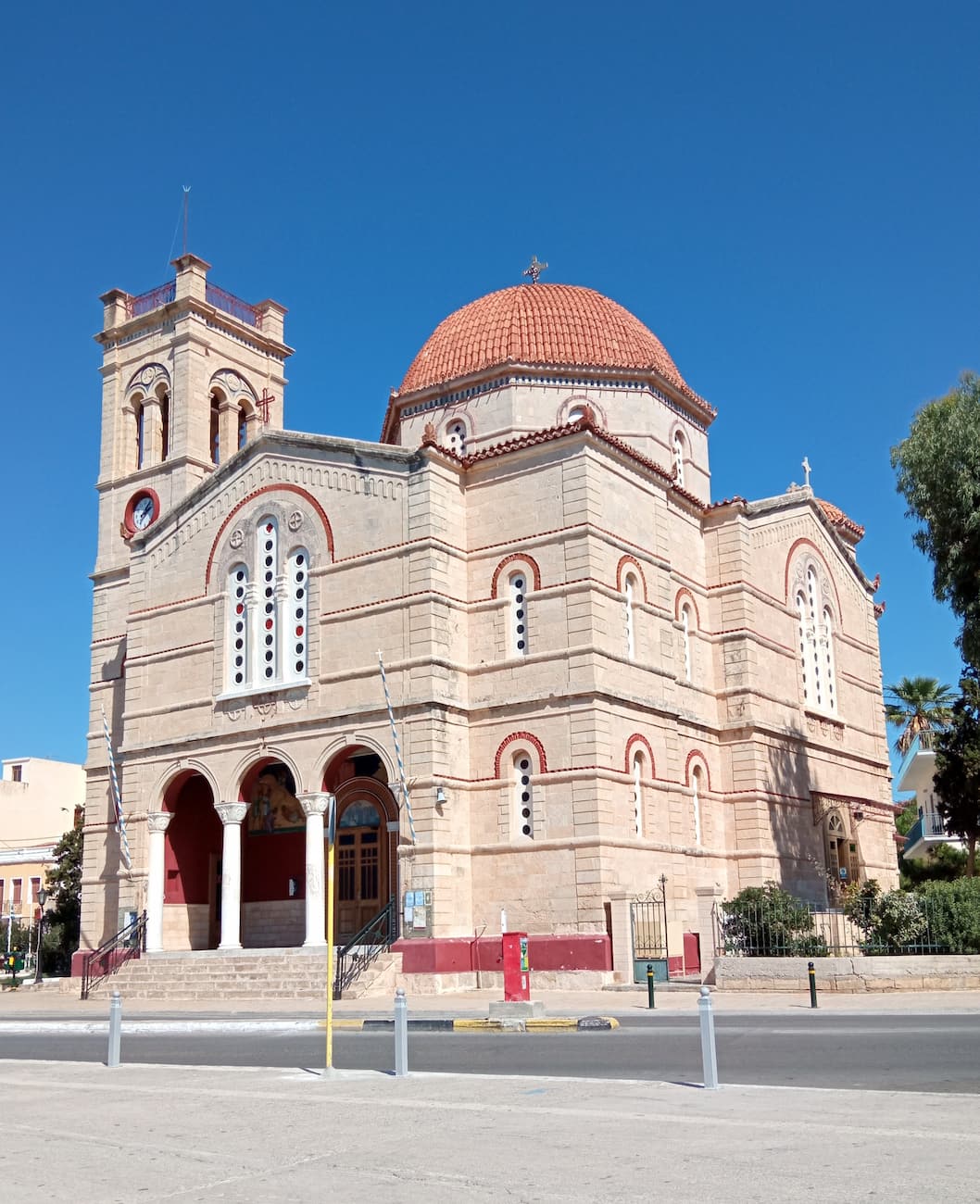

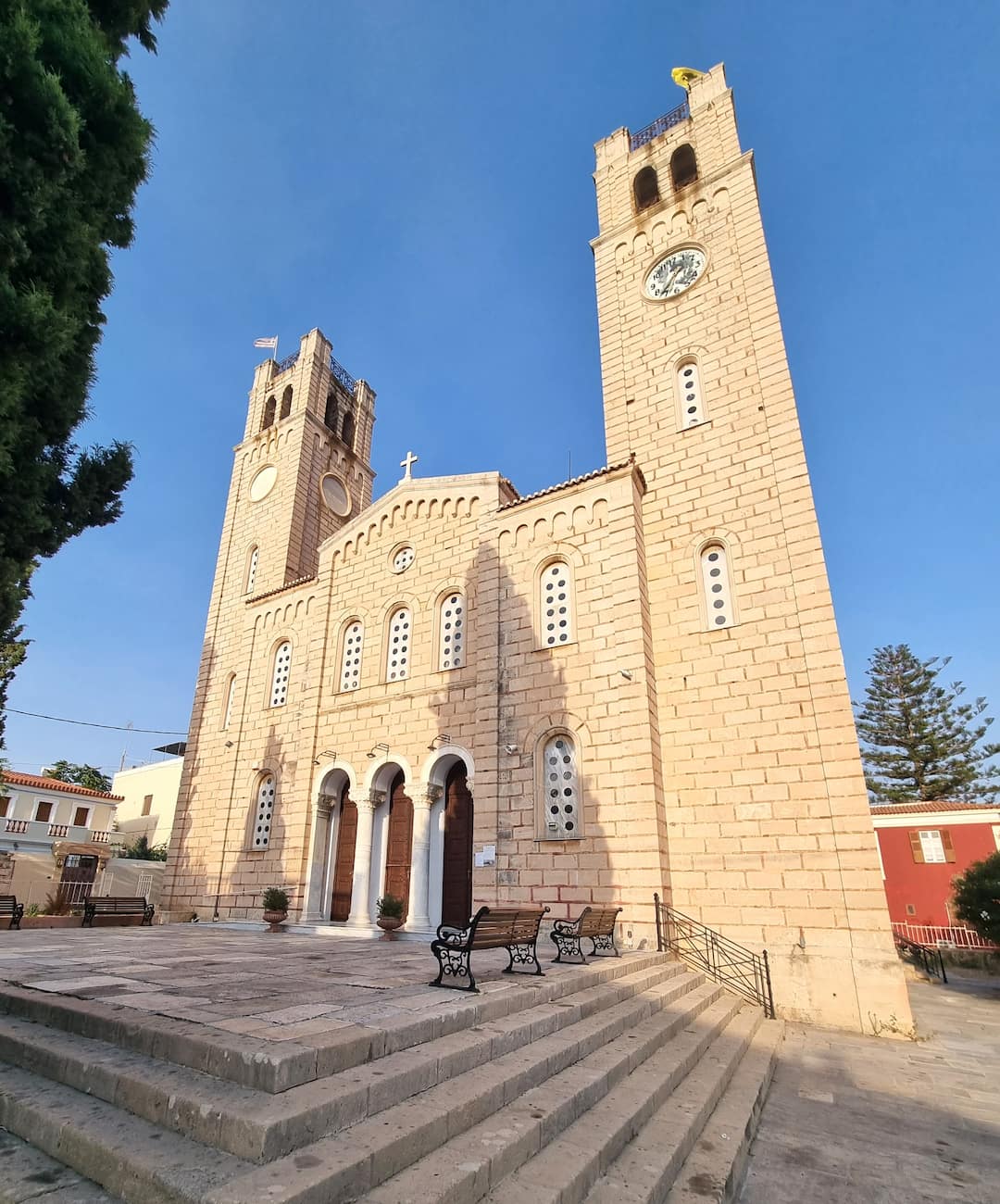
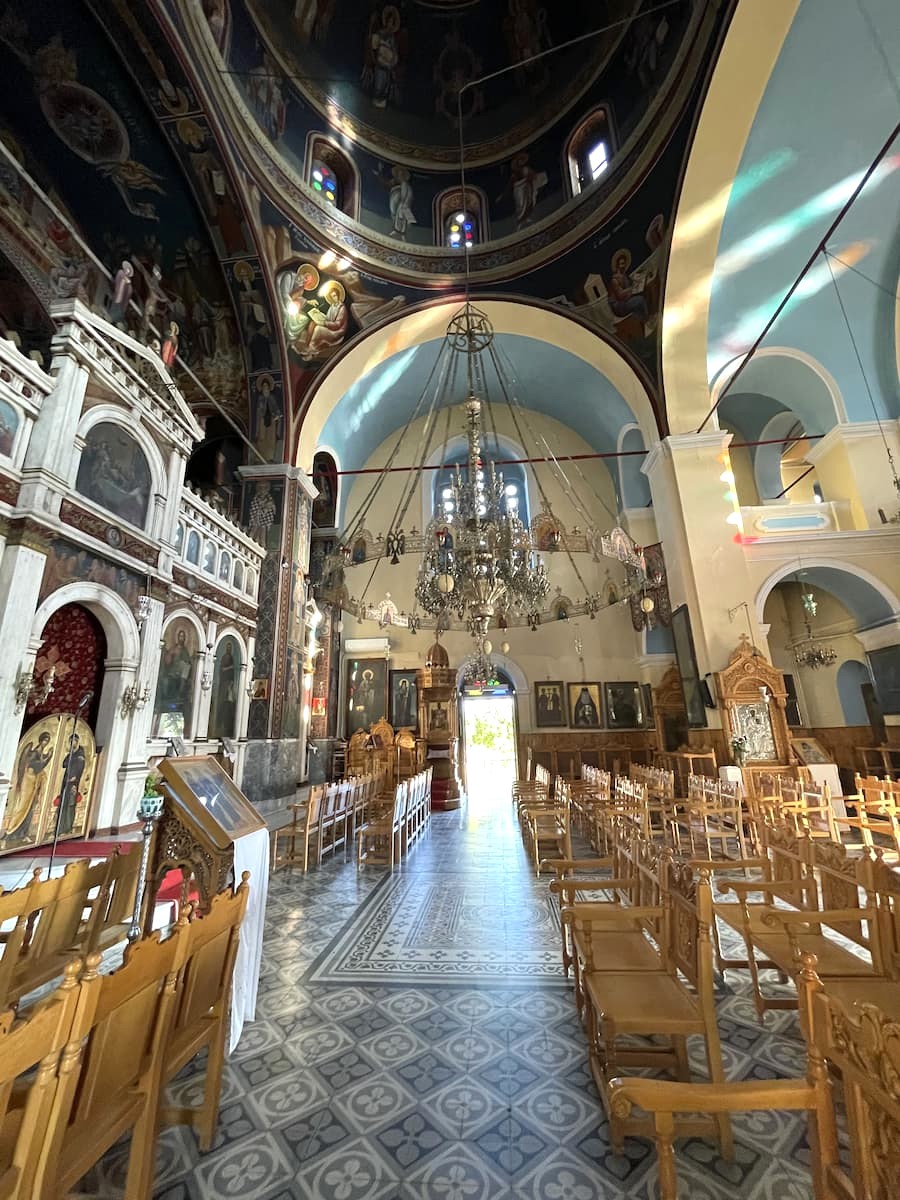
Architectural Beauty. Each church has its own character – from tiny whitewashed chapels perched on hillsides to the grand Church of Agios Nektarios with its impressive domes. Even if you’re not religious, these buildings offer fascinating glimpses into Greek Orthodox traditions and architectural styles.
Budget Tip: Churches are always free to enter, but modest dress is required (shoulders and knees covered). I kept a light scarf in my bag to cover my shoulders when needed.
3. Aegina’s Beaches
Coastal Treasures. Unlike many Mediterranean destinations, Aegina’s beaches remain largely free to enjoy. I discovered that Marathonas Beach has sections without sunbed rentals where you can spread your towel on the golden sand at no cost. The crystal-clear waters were perfect for swimming and snorkeling.
Sunset Magic. For a truly memorable experience that costs nothing, I headed to Aegina’s west coast near Perdika to watch the sunset. The sky exploded with colors as the sun dipped below the horizon, casting a golden glow across the Saronic Gulf.
Insider Tip: Visit Zenobia Beach if you’re looking for a quieter experience away from crowds. It’s a bit harder to reach but offers peaceful swimming in turquoise waters.
4. Local Markets and Window Shopping
Cultural Immersion. Wandering through Aegina’s local markets provided fascinating insights into island life. The fish market near the port bustles with activity in the morning as fishermen display their fresh catch. I watched locals haggle over glistening fish while cats prowled hopefully around the edges.
Pistachio Paradise. Aegina is famous for its pistachios, considered among the best in the world. The shops along the waterfront display these treasures in various forms – from freshly roasted nuts to pistachio butter, pesto, and sweets. Many offer free samples, so I tasted several varieties without spending a euro.
| Market | Best Time to Visit | What to See |
|---|---|---|
| Fish Market | 7-10 AM | Fresh catch of the day |
| Farmers Market | Saturday mornings | Local produce, honey, olive oil |
Common Tourist Mistake: Don’t feel obligated to buy something after sampling products. It’s perfectly acceptable to taste and move on, though I found the pistachio products so delicious that I couldn’t resist purchasing some as souvenirs.
Seasonal Activities in Aegina
1. Summer Water Sports (June-August)
Aquatic Adventures. The crystal-clear waters around Aegina become a playground during summer months. At Agia Marina Beach, I tried windsurfing for the first time – an exhilarating experience of catching the Aegean breeze while skimming across turquoise waters. The instructors at Aegina Watersports were patient with beginners like me.
Underwater Exploration. Snorkeling near Moni Island revealed a vibrant underwater world. Schools of colorful fish darted around my mask as I floated above patches of seagrass. The water was so clear I could see at least 15 meters ahead – a memory that still brings me joy months later.
| Water Activity | Cost (€) | Cost (USD) | Location |
|---|---|---|---|
| Windsurfing (1hr) | 25€ | $27.50 | A. Marina |
| Jet Ski Rental (20min) | 40€ | $44 | A. Marina |
| Snorkel Gear Rental | 10€/day | $11/day | Various beaches |
Common Tourist Mistake: Many visitors don’t realize how strong the sun’s reflection on water can be. I learned the hard way – apply waterproof sunscreen repeatedly, even on cloudy days.
Summer water activities in Aegina:
- Windsurfing and kitesurfing at Agia Marina
- Jet ski rentals and banana boat rides
- Paddleboarding along the coastline
- Scuba diving trips to nearby reefs
- Snorkeling at Moni Island and Klima Beach
- Sailing excursions around the Saronic Gulf
- Fishing trips with local fishermen
- Beach volleyball at organized beaches
2. Spring Hiking Trails (March-May)
Wildflower Wonderland. Hiking Aegina’s footpaths during spring was a sensory feast. The island transformed into a carpet of wildflowers – delicate anemones, bright poppies, and purple thyme covered the hillsides. One morning, I followed the trail from Sfentouri toward Mount Oros, breathing in the intoxicating scent of wild herbs with each step.
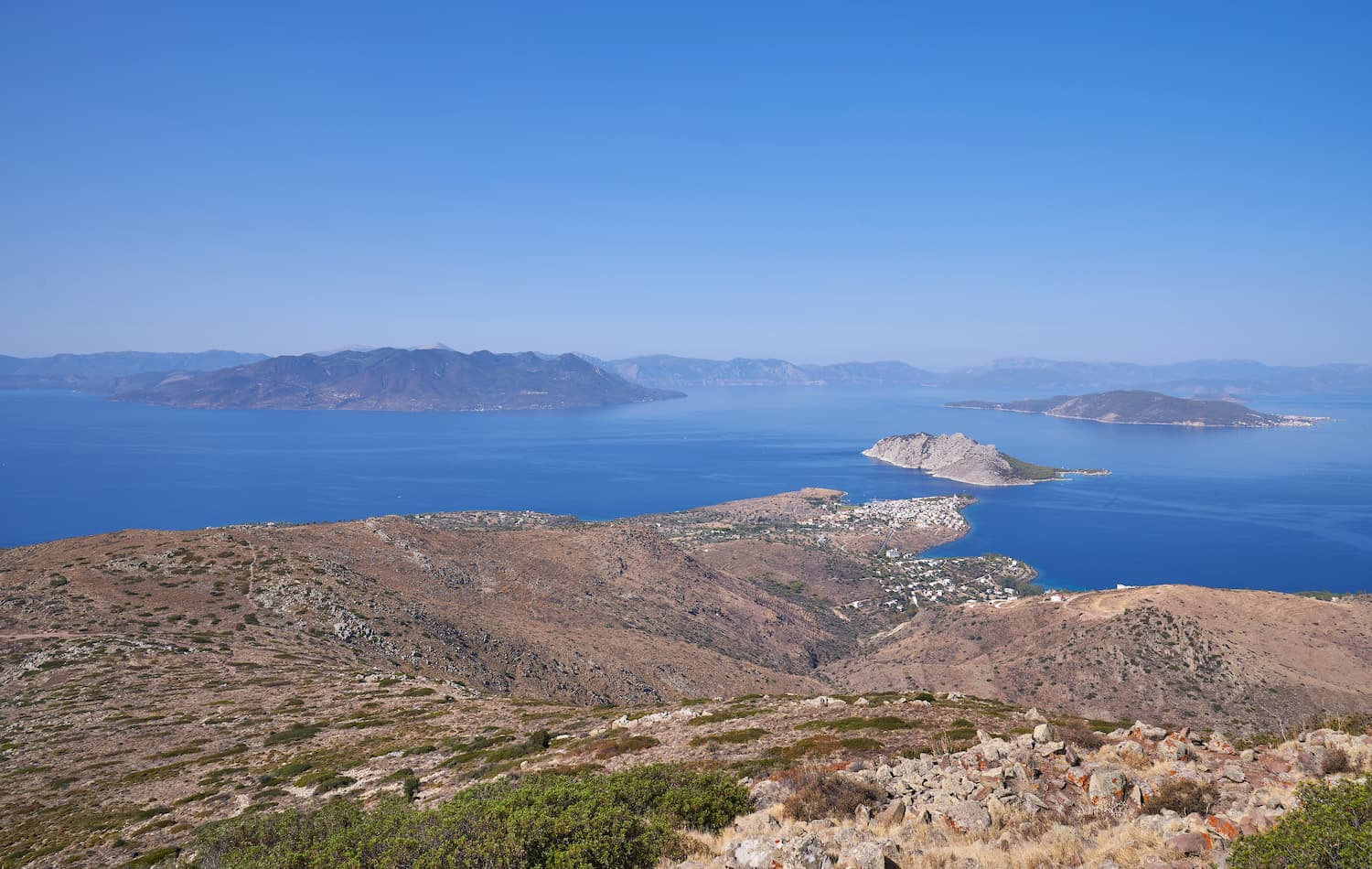
Perfect Weather. Spring temperatures (typically 15-25°C/59-77°F) created ideal hiking conditions. I explored the ancient olive grove of Eleonas without breaking a sweat, admiring gnarled tree trunks that have stood for over a thousand years. The soft light bathed everything in a golden glow, perfect for photography.
Best spring hiking routes in Aegina:
- Mount Oros summit trail (moderate difficulty, 3-4 hours round trip)
- Paleochora Byzantine settlement path (easy, 1-2 hours)
- Aegina Town to Perdika coastal path (moderate, 2-3 hours)
- Ancient Temple of Zeus Hellanios route (challenging, 4-5 hours)
- Vagia to Souvala coastal trail (easy, 1 hour)
Insider Tip: The trail to Paleochora is particularly beautiful in April when wildflowers surround the Byzantine church ruins. Start early (around 8 AM) to have this magical place almost to yourself.
3. Autumn Photography Tours (September-October)
Golden Light. Autumn in Aegina brings what photographers call “the magic hour” – that golden light that seems to last all day. I joined a small photography walk led by local photographer Dimitris (contact through Aegina Arts Center, 30€/$33 for 3 hours). We captured the Temple of Aphaia bathed in warm afternoon light, creating images that seemed to glow from within.
Harvest Season. September and October bring the olive and pistachio harvests. I watched farmers gathering pistachios using traditional methods – spreading nets beneath trees and gently shaking the branches. The contrast of green nuts against the blue sky made for stunning photographs.
Photography hotspots in autumn:
- Temple of Aphaia at sunset
- Pistachio orchards during harvest
- Aegina Town harbor with fishing boats
- Temple of Apollo (Kolona) silhouette
- Paleochora Byzantine ruins in golden light
- Agios Nektarios Monastery bell towers
- Mountainous landscapes with dramatic clouds
Budget Tip: Create your own photography tour by visiting key locations during golden hour (about an hour before sunset). The Temple of Apollo (Kolona) is particularly photogenic with its single column silhouetted against the setting sun.
4. Winter Exploration (November-February)
Peaceful Discovery. Winter revealed a different side of Aegina – quiet, authentic, and deeply peaceful. Walking through Aegina Town in January, I felt like I’d discovered a secret. The narrow streets that bustle with tourists in summer were calm, allowing me to appreciate architectural details I’d missed before.
Local Connection. Winter is when you’ll meet the real islanders. At Skotadis taverna near the fish market, I was invited to join a table of local fishermen for ouzo and mezedes. Despite my limited Greek, we communicated through smiles, gestures, and shared appreciation of the fresh octopus (12€/$13.20) on our plates.
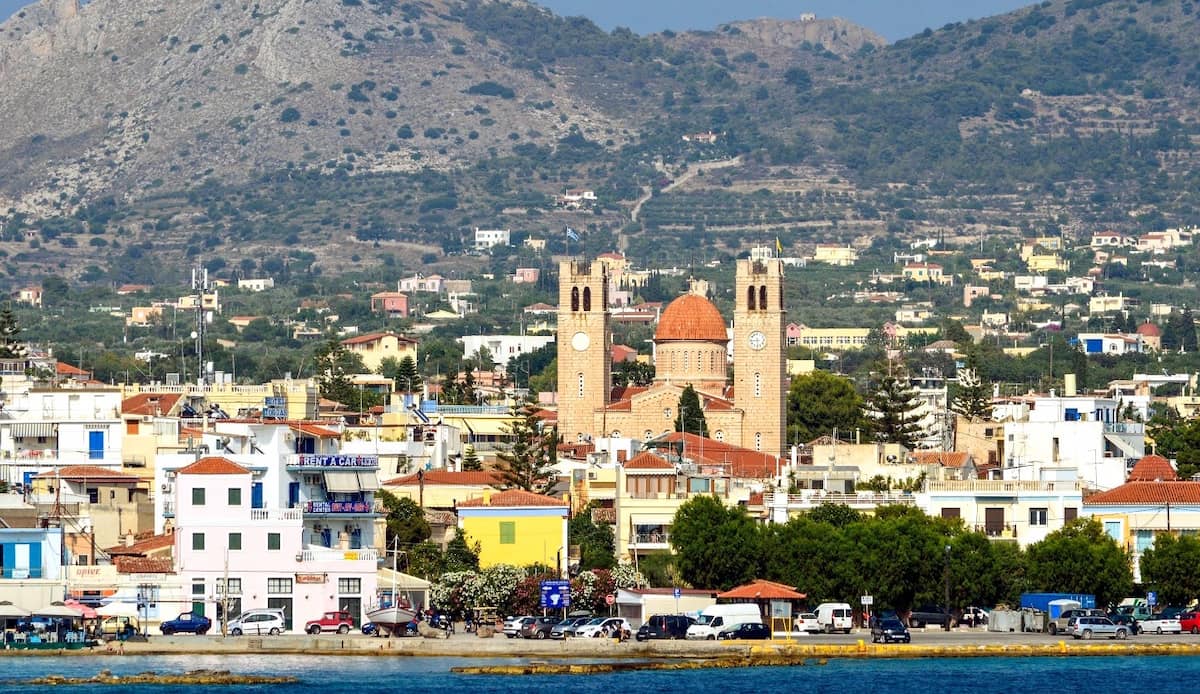
Winter activities in Aegina:
- Archaeological Museum visits without crowds
- Cultural events at the Kapodistrian Cultural Center
- Bird watching around the wetlands
- Hiking trails with clear winter visibility
- Religious celebrations (Christmas, Epiphany)
- Photography in the unique winter light
- Cooking classes featuring seasonal ingredients
- Olive harvesting (November-December)
Common Tourist Mistake: Many visitors think Greek islands “shut down” in winter. While some seasonal businesses close, Aegina remains active year-round with plenty of shops and sites open to visitors.
Insider Tip: January 6th (Epiphany) features a special celebration where local priests throw a cross into the sea and young men dive to retrieve it – a fascinating cultural experience few tourists witness.
Day Trips from Aegina
1. Moni Island One Day Cruise
Paradise. Just a 10-minute boat ride from Perdika, Moni Island feels like stepping into a secret garden. As I disembarked, I was greeted by curious peacocks strutting along the shoreline. The crystal-clear turquoise waters beckoned, and I couldn’t resist a refreshing swim before exploring the island’s pine-covered hills.
Wildlife Encounters. I spotted gentle deer and wild goats roaming freely. It’s a photographer’s dream, especially during the golden hour when the light bathes everything in a warm glow.
Budget Tip: Bring your own snacks and water. The single canteen on Moni can be pricey (6€/$6.60 for a sandwich).
Insider Tip: The last boat back to Perdika leaves at sunset. Don’t miss it, or you’ll be spending the night on the Island.
⭐ Best Activities
- Aegina Island & Temple of Athina Aphaia Private Day Tour – Visit the magnificent Temple of Aphaia and explore Aegina’s highlights on this private day tour from Athens with an expert guide.
2. Agistri Island
Secluded Beaches. A quick 10-minute ferry ride from Aegina brought me to Agistri, a tiny island with some of the most beautiful beaches I’ve seen in the Saronic Gulf. Chalikiada Beach, with its crystal-clear waters and pebbled shore, became my personal slice of paradise for the afternoon.
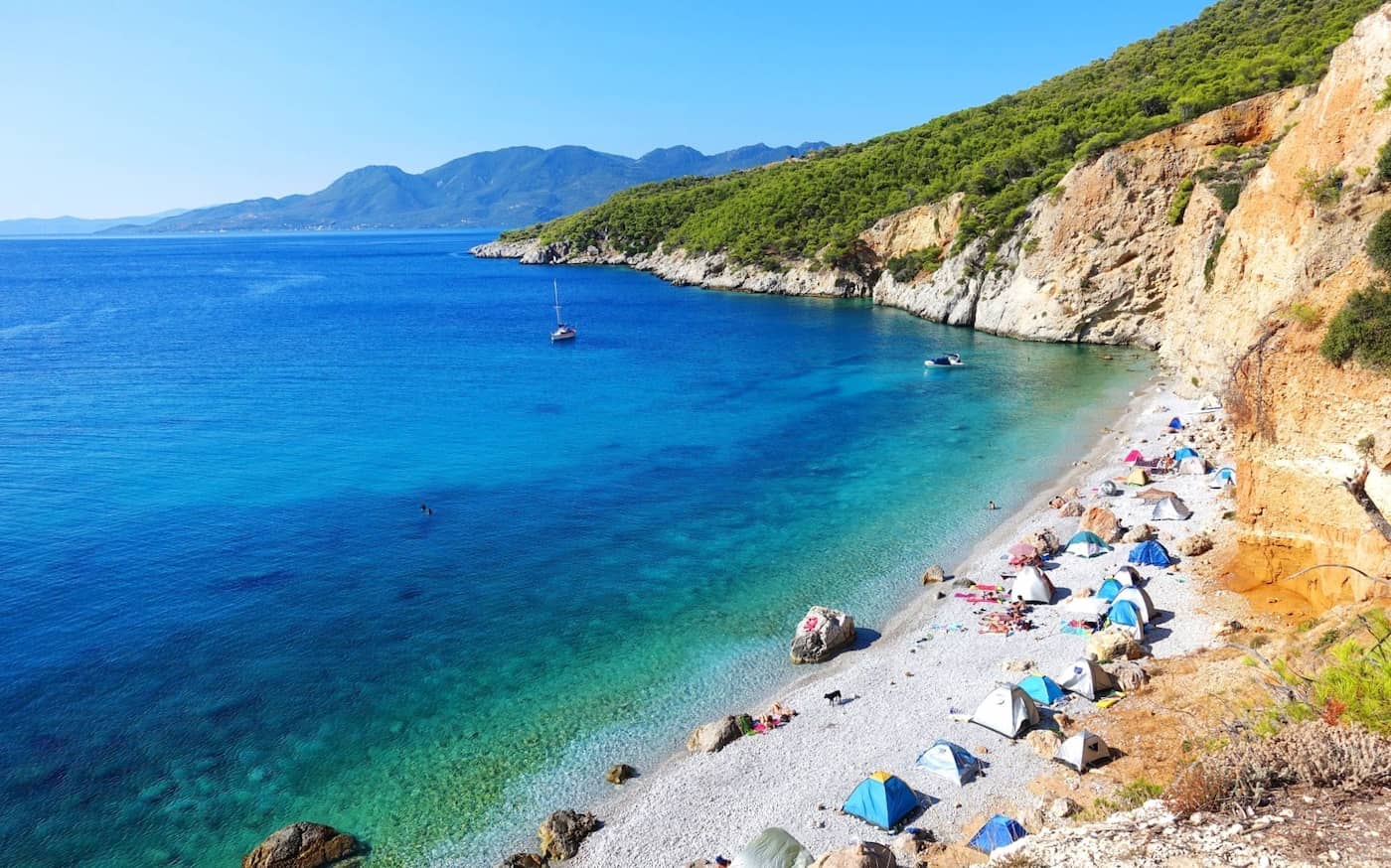
Charm. Wandering through Megalochori, I found myself captivated by its traditional Greek island atmosphere. Blue-domed churches and whitewashed houses line narrow streets that seem frozen in time.
Common Tourist Mistake: Many visitors stick to the main beach near the port. Rent a bicycle (10€/$11 per day) to ride around the island and explore hidden coves and less crowded beaches.
⭐ Best Activities
- Agistri Island Private Highlights Tour – Discover the neighboring island of Agistri with its pristine beaches and charming villages on this private guided tour from Aegina.
3. Methana
Volcanic Landscapes. My trip to Methana, a volcanic peninsula on the Peloponnese, was a stark contrast to Aegina’s beaches. Hiking the volcano trail, I marveled at the otherworldly landscape of black lava rocks and steam vents. The panoramic views of the Saronic Gulf from the crater’s edge were breathtaking.
Thermal Springs. After the hike, I treated myself to a soak in Methana’s famous thermal springs. The warm, mineral-rich waters were the perfect remedy for my tired muscles.
| Ferry to Methana | Cost (€) | Cost (USD) | Duration |
|---|---|---|---|
| One-way Ticket | 12€-15€ | $13.20-$16.50 | 50 minutes |
Insider Tip: Visit the abandoned spa town of Vromolimni for a hauntingly beautiful photo opportunity. The crumbling 1930s buildings set against the backdrop of the sea create an eerie yet captivating atmosphere.
⭐ Best Activities
- The Whole Round of Methana Volcano E-Bike Tour – Explore the volcanic peninsula of Methana on an e-bike tour, taking in breathtaking views and unique geological formations near Aegina.
4. Poros (from Athens)
Two Islands in One. Poros surprised me with its unique geography – it’s actually two islands connected by a bridge. I started my visit in Sferia, the bustling main town with its iconic clock tower overlooking the harbor. Then, I crossed over to Kalavria, the larger, pine-covered island that feels worlds away from the lively port.
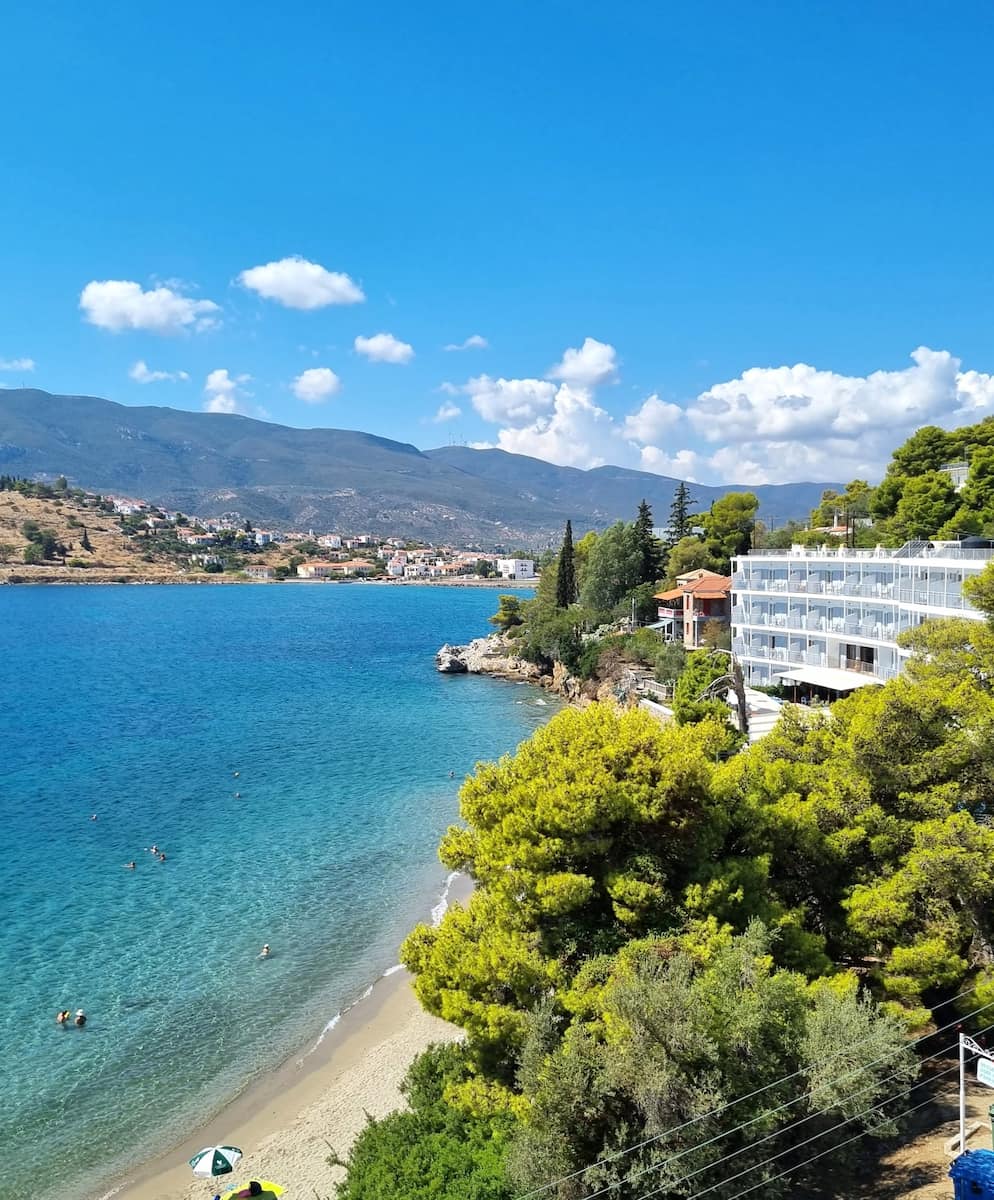
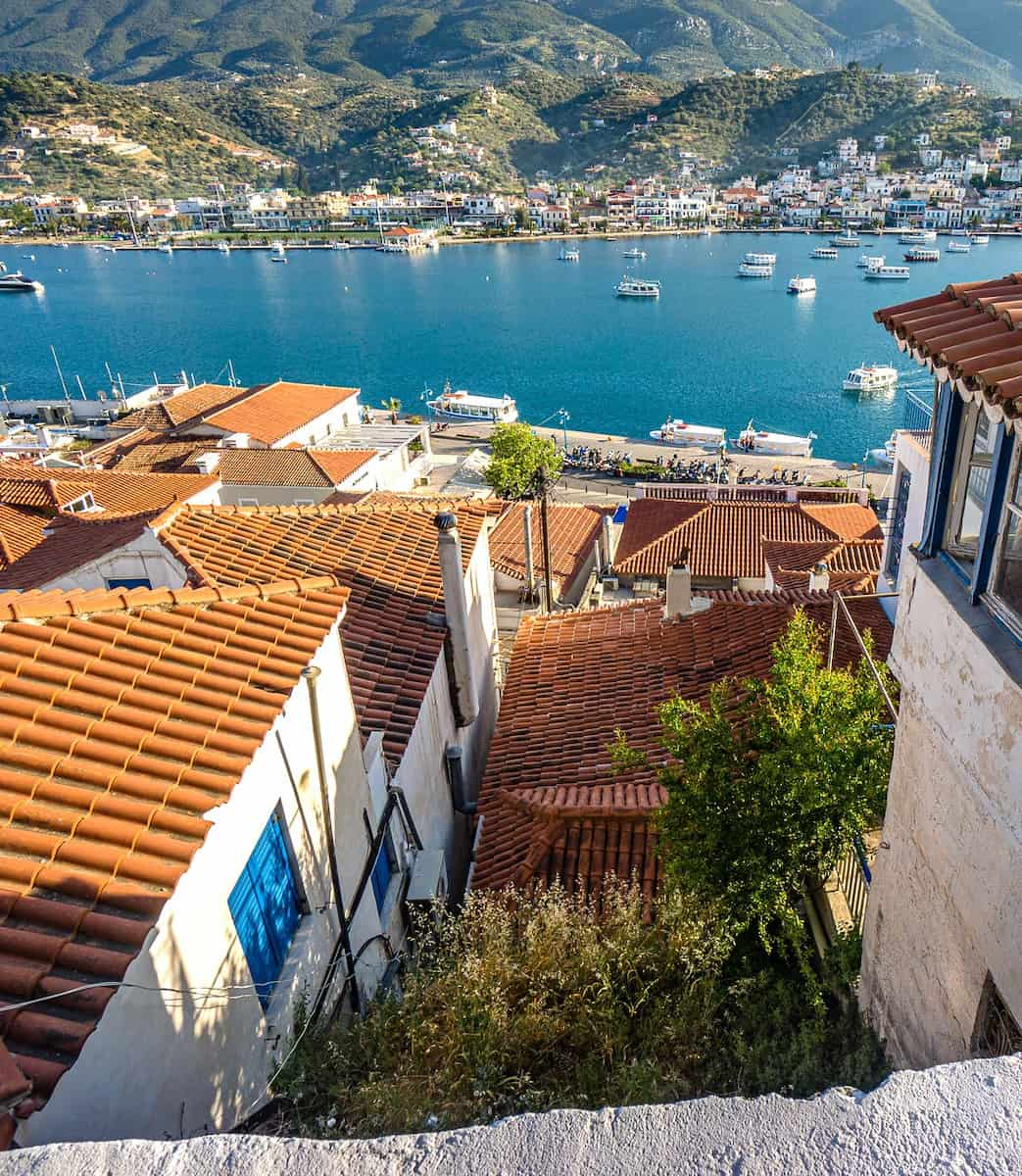
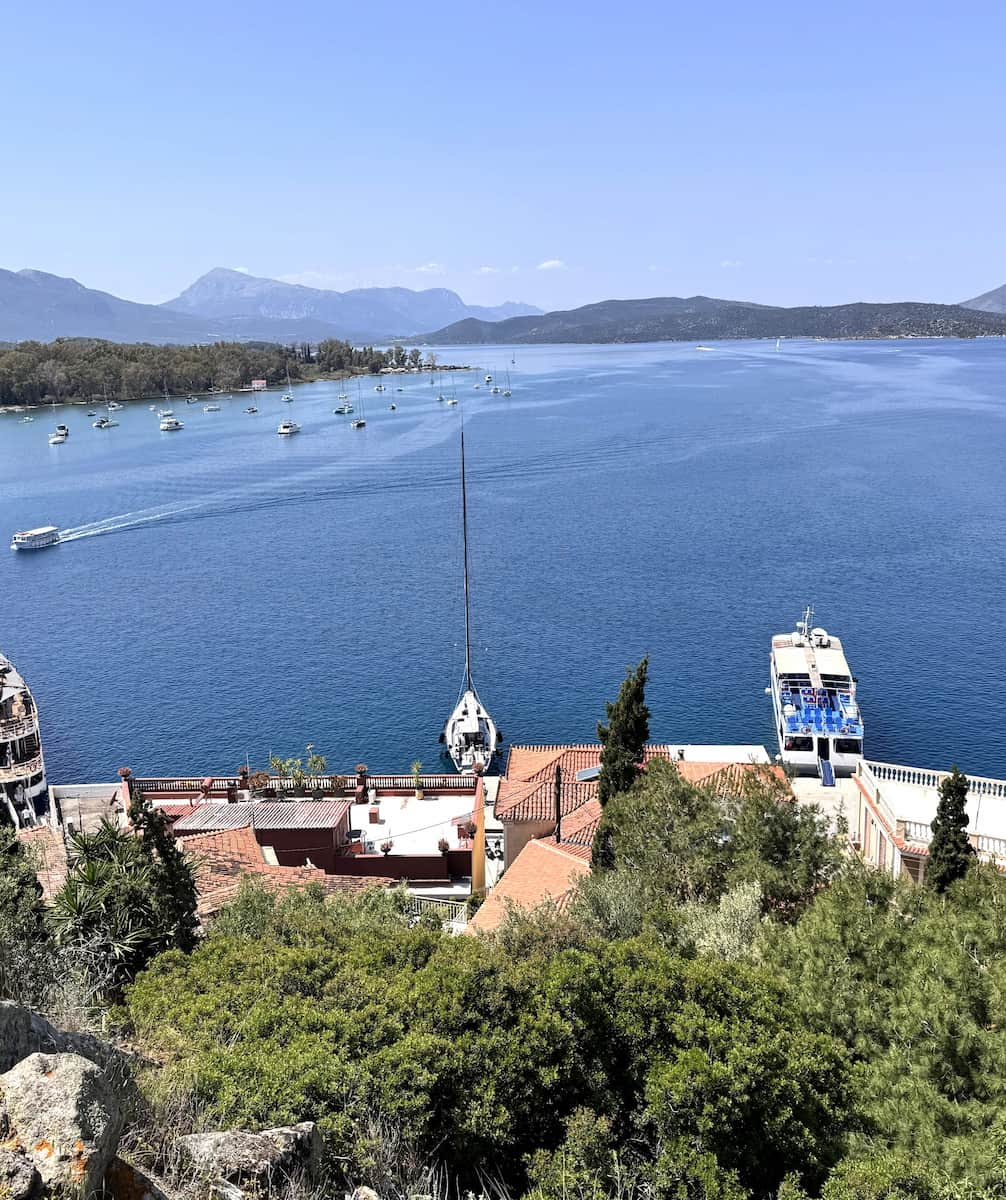

Lemon Forest. One of my favorite discoveries was the Lemon Forest of Poros. Walking through groves of lemon and orange trees, their fragrance filling the air, was a sensory delight. I picked up some locally-made lemon preserves (5€/$5.50) as a tasty souvenir.
| Ferry to Poros | Cost (€) | Cost (USD) | Duration |
|---|---|---|---|
| One-way Ticket | 14€-18€ | $15.40-$19.80 | 1 hour |
Traveling from Athens. The most popular connection is by ferry, with multiple daily sailings operating year-round. The ferry journey from Poros to Athens (Piraeus Port) takes approximately 55 minutes to 1 hour 10 minutes on high-speed vessels.
⭐ Best Activities
- Full-Day Tour of the Saronic Islands from Athens – Experience the beauty of the Saronic Gulf with this full-day cruise visiting Aegina, Poros, and Hydra islands from Athens.
FAQ
How was Aegina connected to Greek history?
Aegina served as the first capital of modern Greece after the 1821 revolution against the Ottomans, when Ioannis Kapodistrias was Greece’s first leader after independence. You can still see many Kapodistrian buildings from the early 19th century around the island, particularly in Aegina Town.
What makes Aegina worthy of “best of” title?
Aegina deserves the “best of” title due to its unique combination of proximity to Athens and its rich offerings from the 6th century BC Temple of Aphaia to serene Pachia Rachi village. The island can encompass both historical significance and natural beauty, making it perfect for travelers seeking authentic Greek experiences.
What tastes around Aegina should visitors try?
The tastes around Aegina feature world-famous pistachios used in everything from ice cream to liqueurs, continuing a tradition of delicious local cuisine. Seafood tavernas in Perdika offer fresh catches daily, while Aegina Town has excellent bakeries selling pistachio-infused pastries.
How to get to Moni Island from Aegina?
To get to Moni Island, take a small boat from Perdika village for a quick 10-minute journey costing about €10 round trip. The uninhabited island offers crystal-clear waters and free-roaming peacocks, making it perfect for a 1hr round trip adventure from Aegina.
What’s special about John Aegina’s historical sites?
John (Ioannis) Aegina’s historical connection refers to Kapodistrias, who established important institutions during the time when Aegina was the capital until 1826. You can take a walk through history by visiting the Kapodistrian Orphanage, Government Building, and the first mint of Greece.
Can you visit Aegina during winter months?
Aegina remains accessible and enjoyable throughout the year, including winter, with regular ferry services and many attractions open year-round. Winter offers a more authentic experience with fewer tourists, allowing you to enjoy the mountainous Aegina landscapes and cozy tavernas frequented by locals.
What’s the connection between Nikos Kazantzakis and Aegina?
Nikos Kazantzakis, author of “Zorba the Greek,” spent time on Aegina and was inspired by its serene atmosphere and traditional character. A street named after him in Aegina Town commemorates his connection to the island, and you’ll enjoy walking the same paths as this famous writer.
How does Villa Tzikides Aegina attract visitors?
Villa Tzikides Aegina represents the island’s more luxurious side, offering an upscale experience with stunning views of the Saronic Gulf. The property showcases traditional architecture combined with modern amenities, similar to how the fashion house Hermès chose Aegina for photoshoots due to its authentic Greek beauty.
What day trips are possible from Aegina?
From Aegina, you can take day trips to nearby Saronic islands like Kythnos island using the Flying Dolphin high-speed ferries. Alternatively, you can visit the Folklore Museum in town, explore the prehistoric site at Kolonna, or fast-forward to the Venetian era by visiting the pink Tower from the late 17th or early 18th century.
